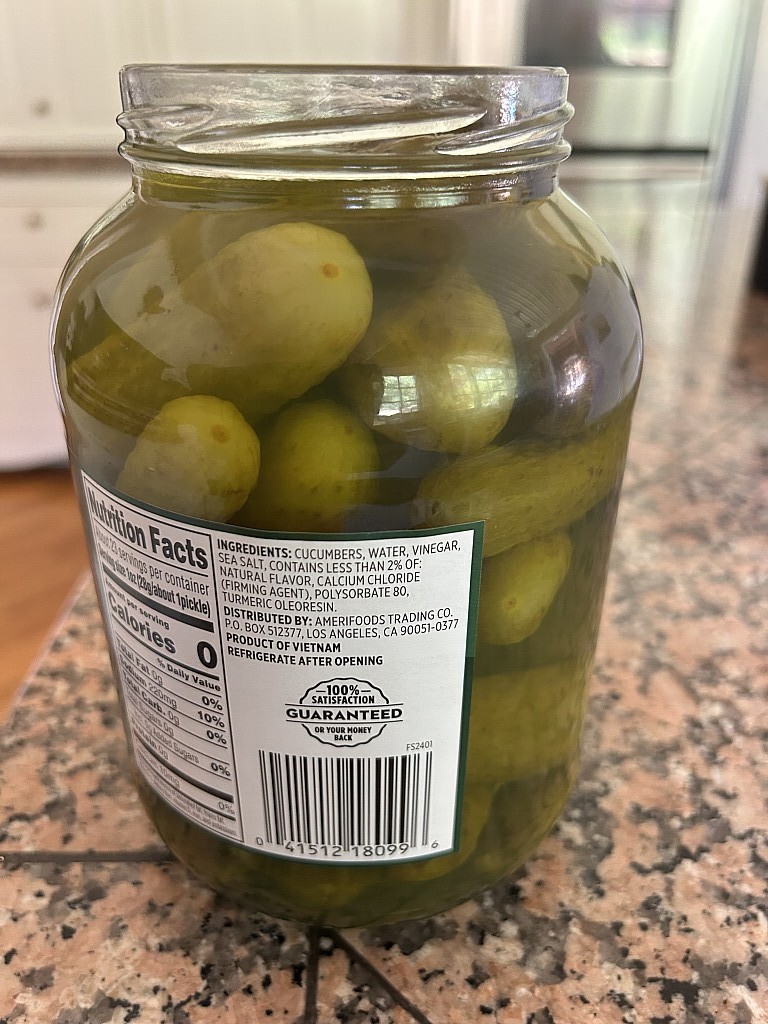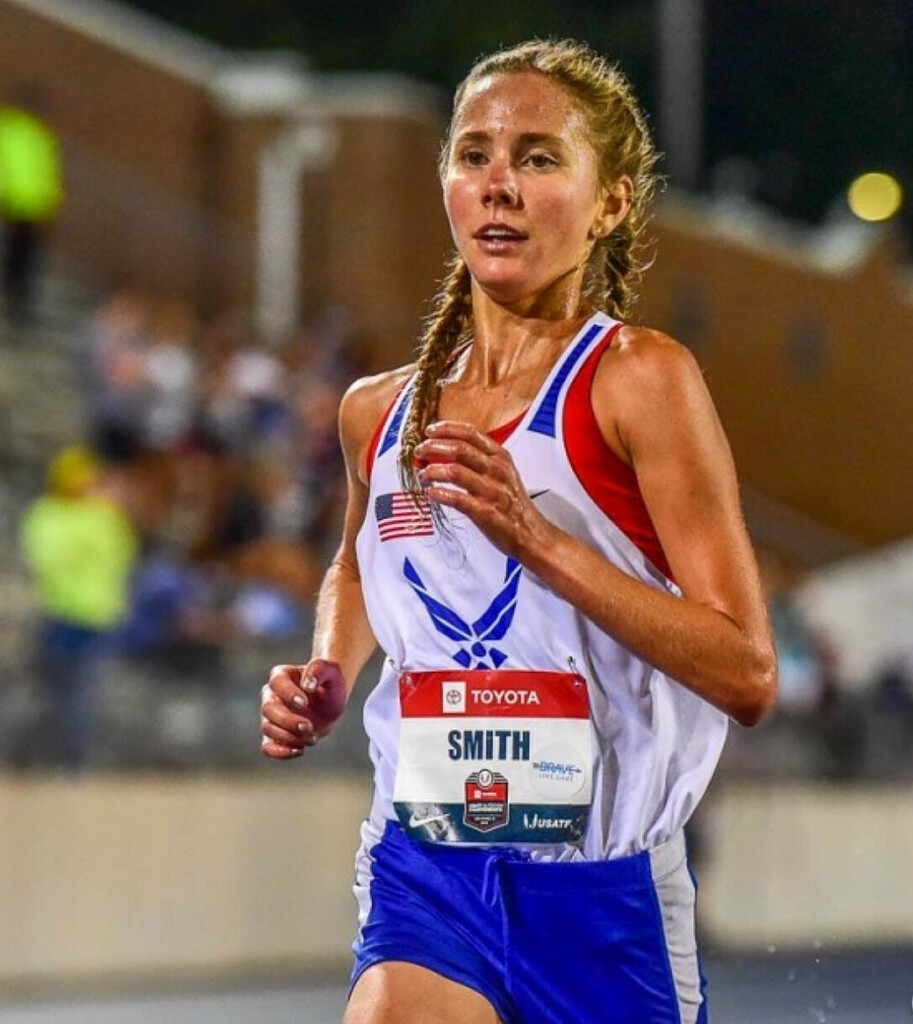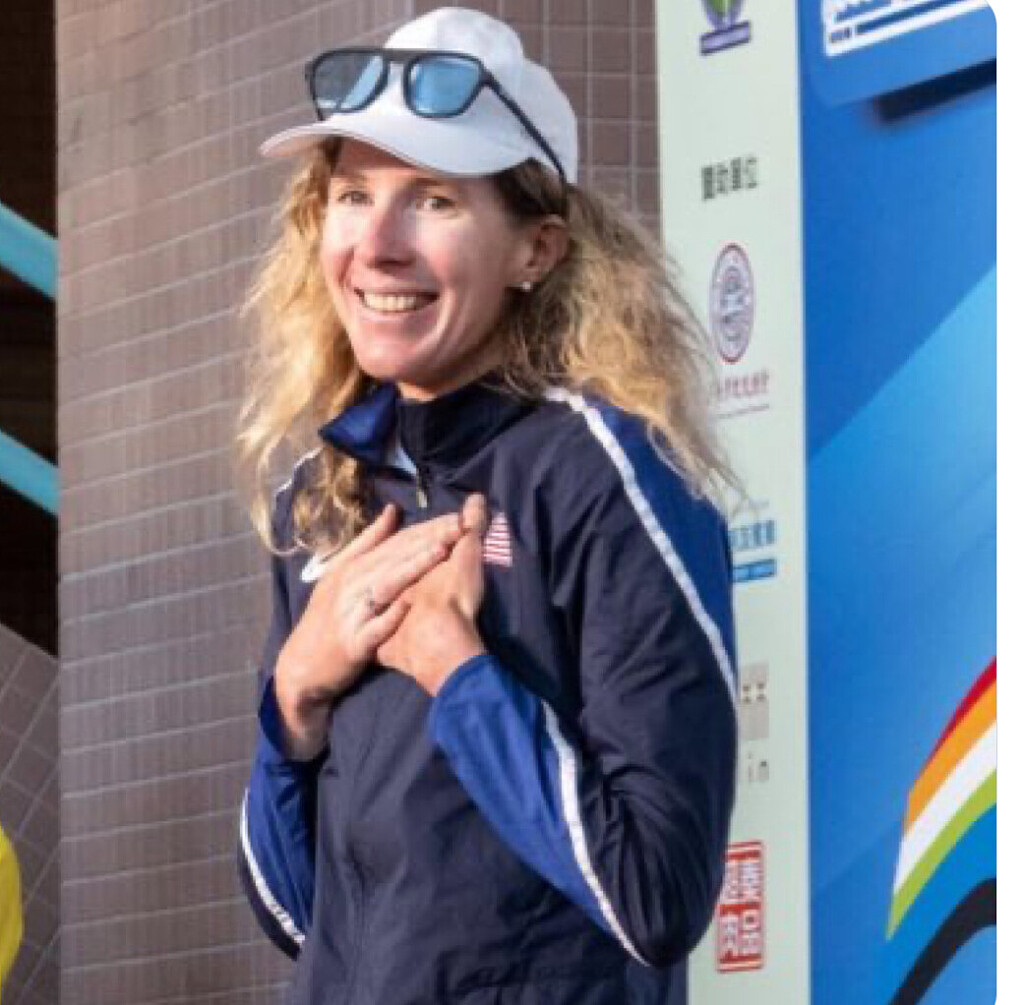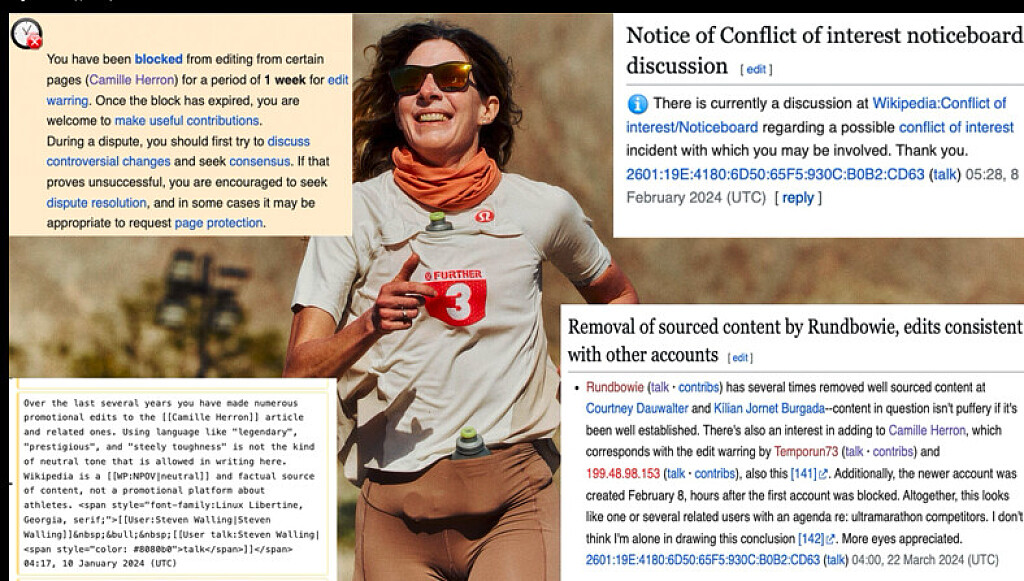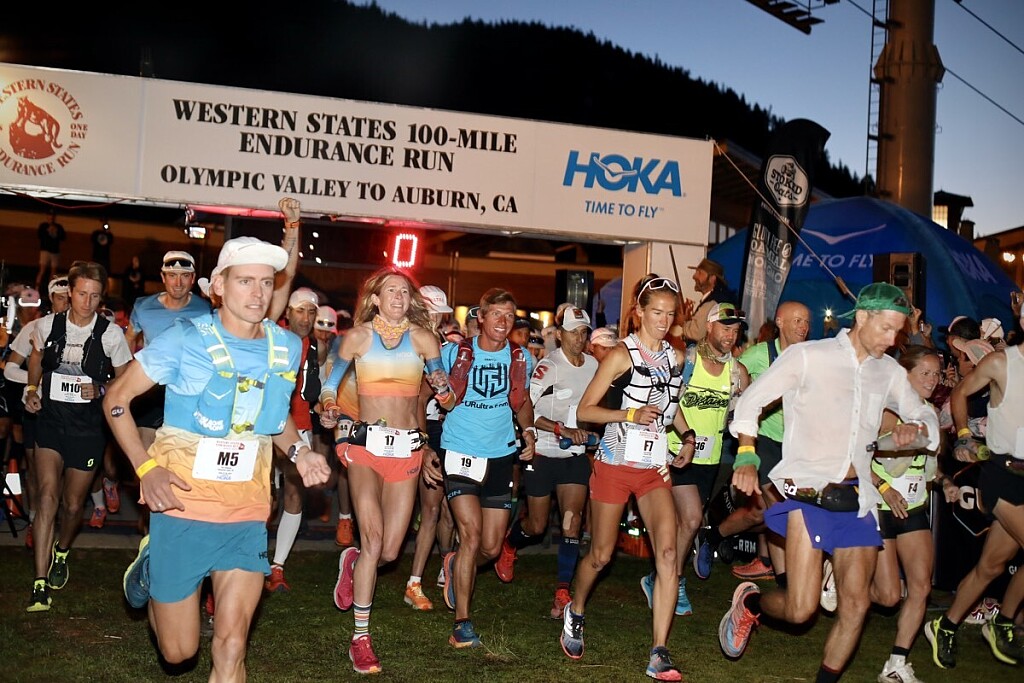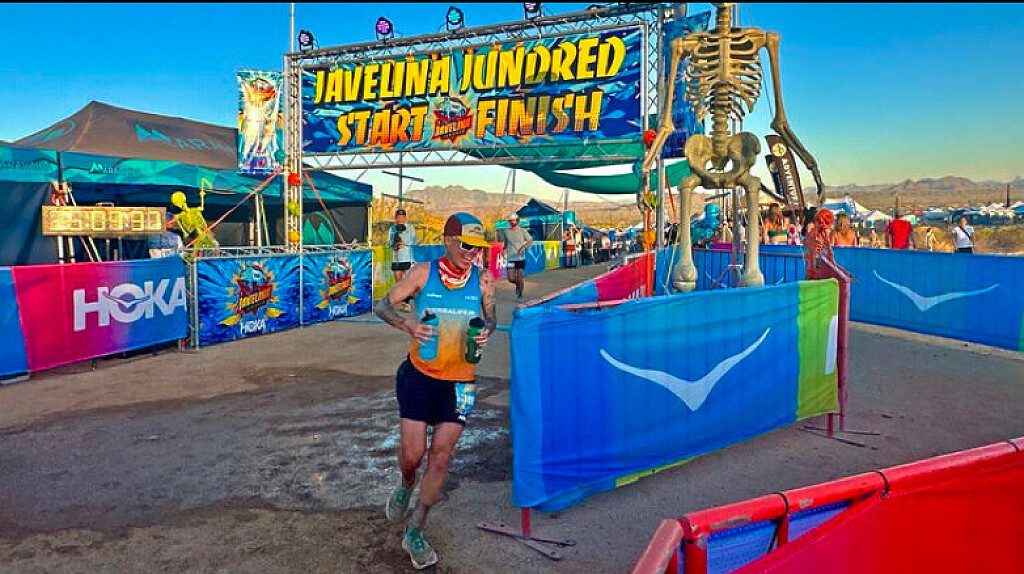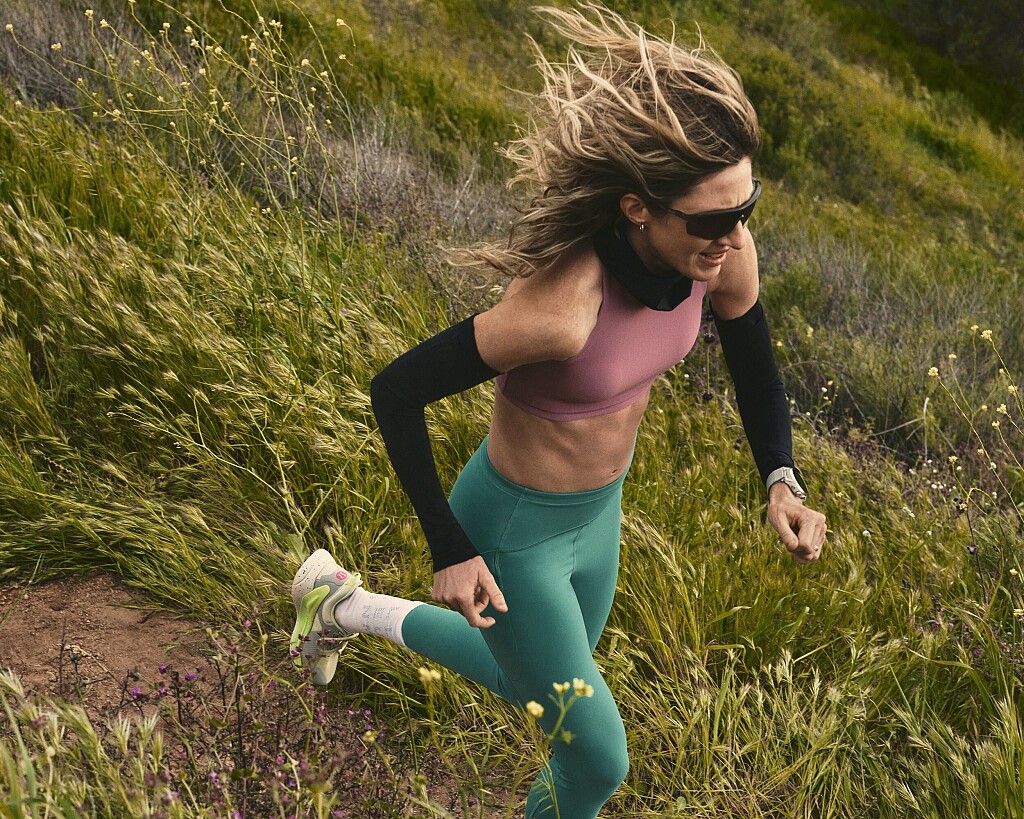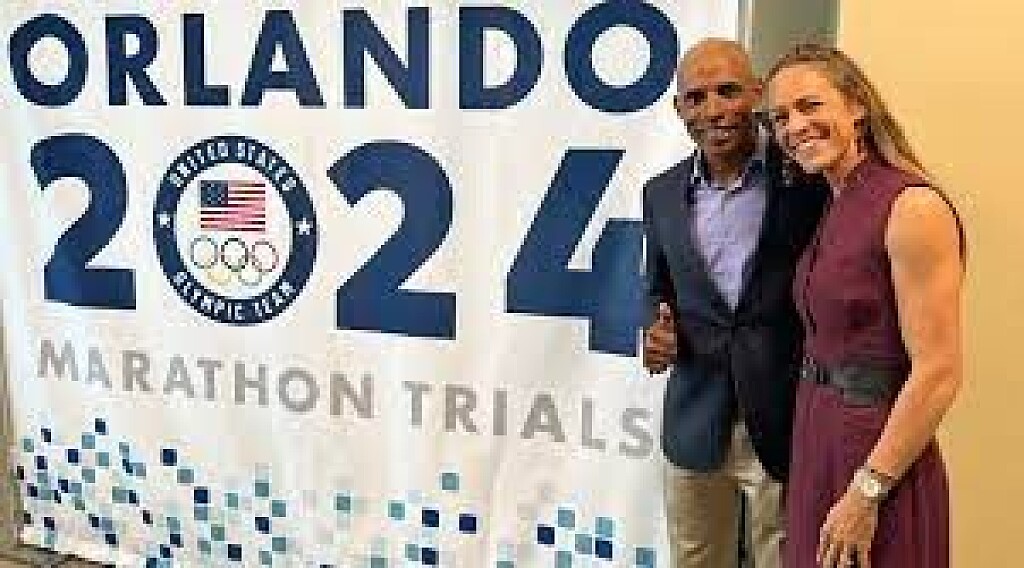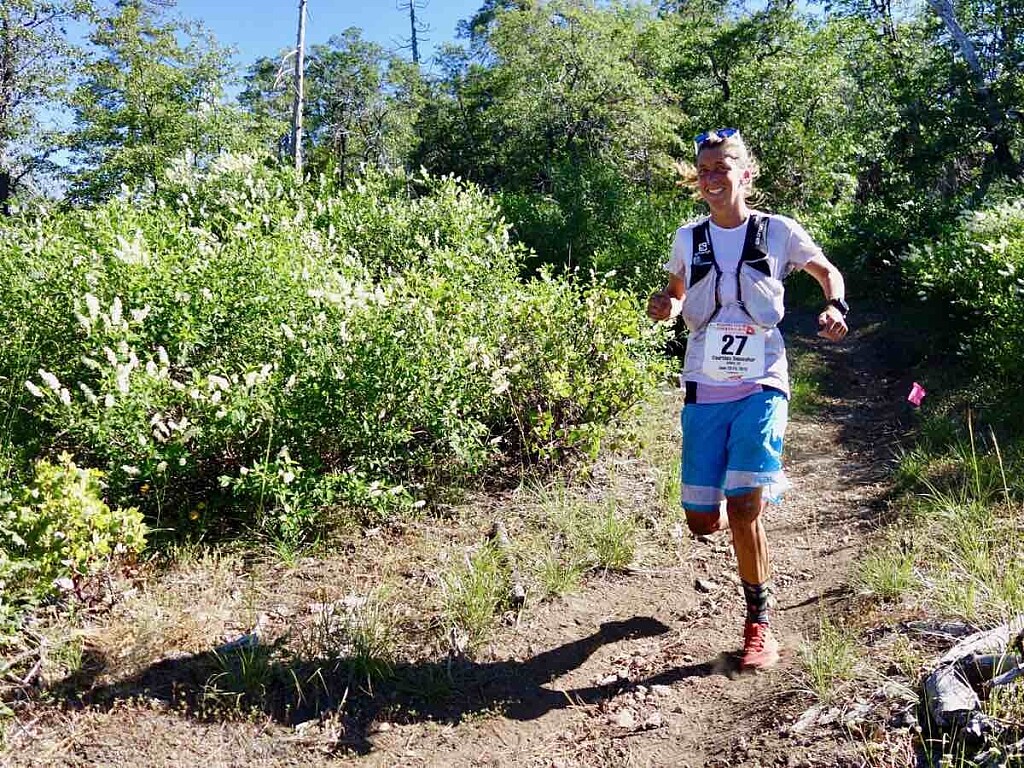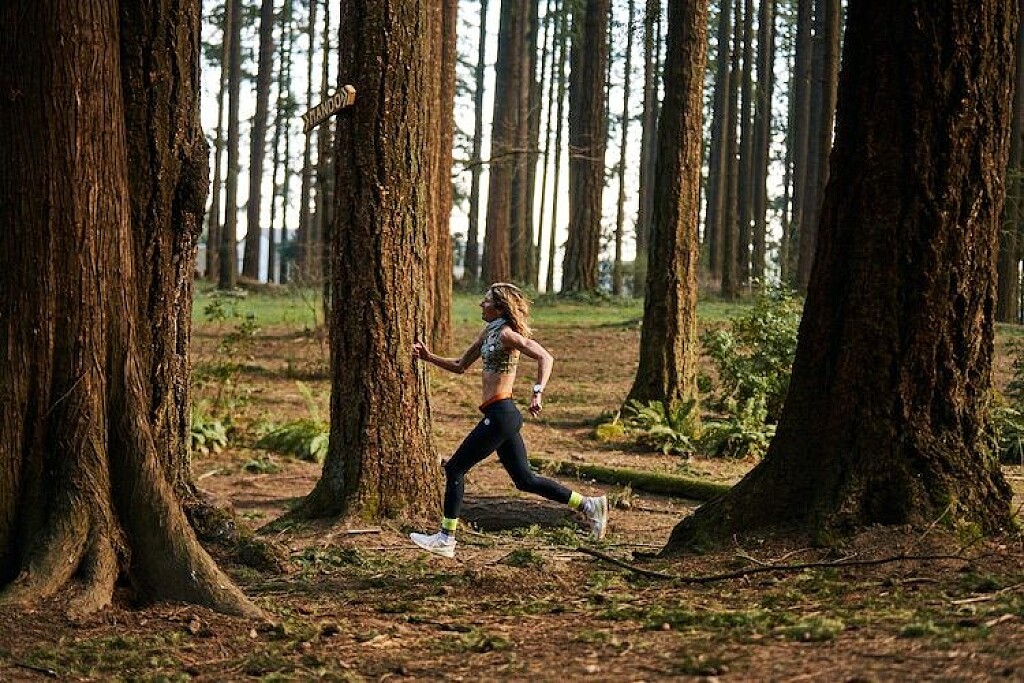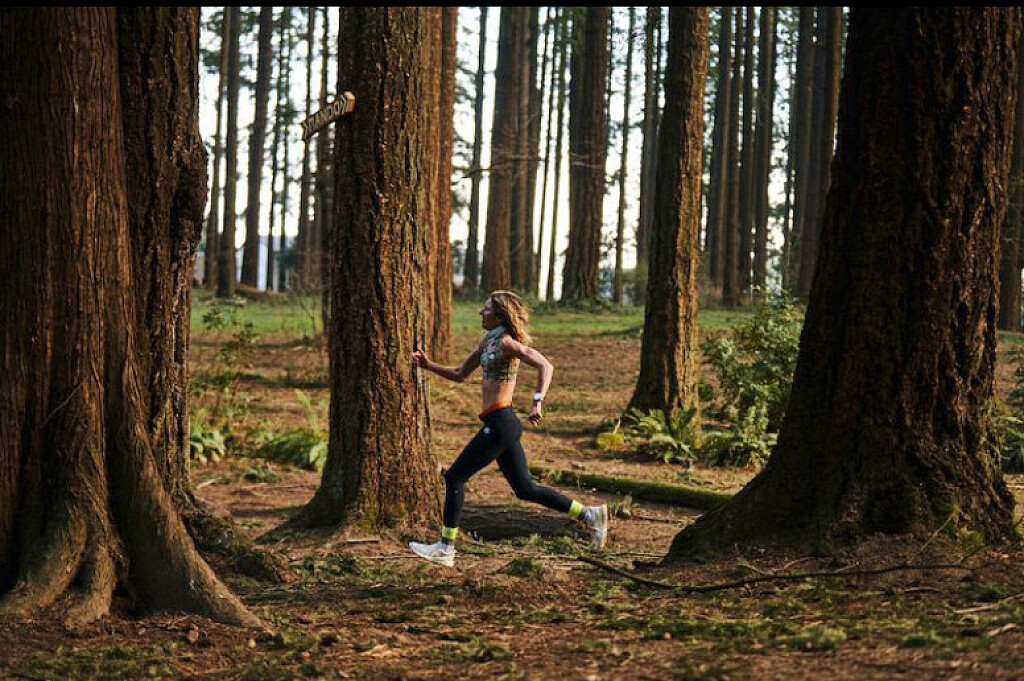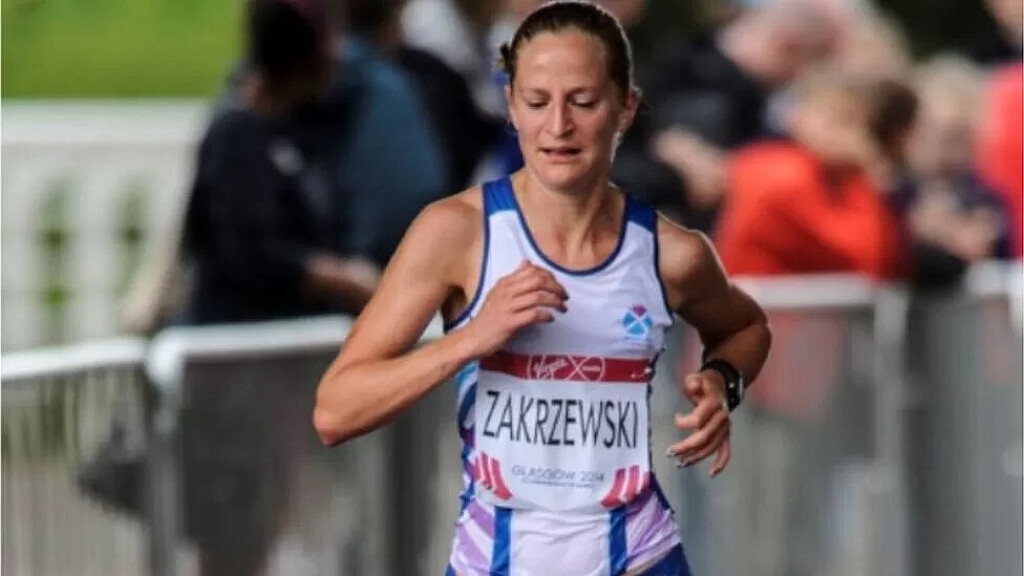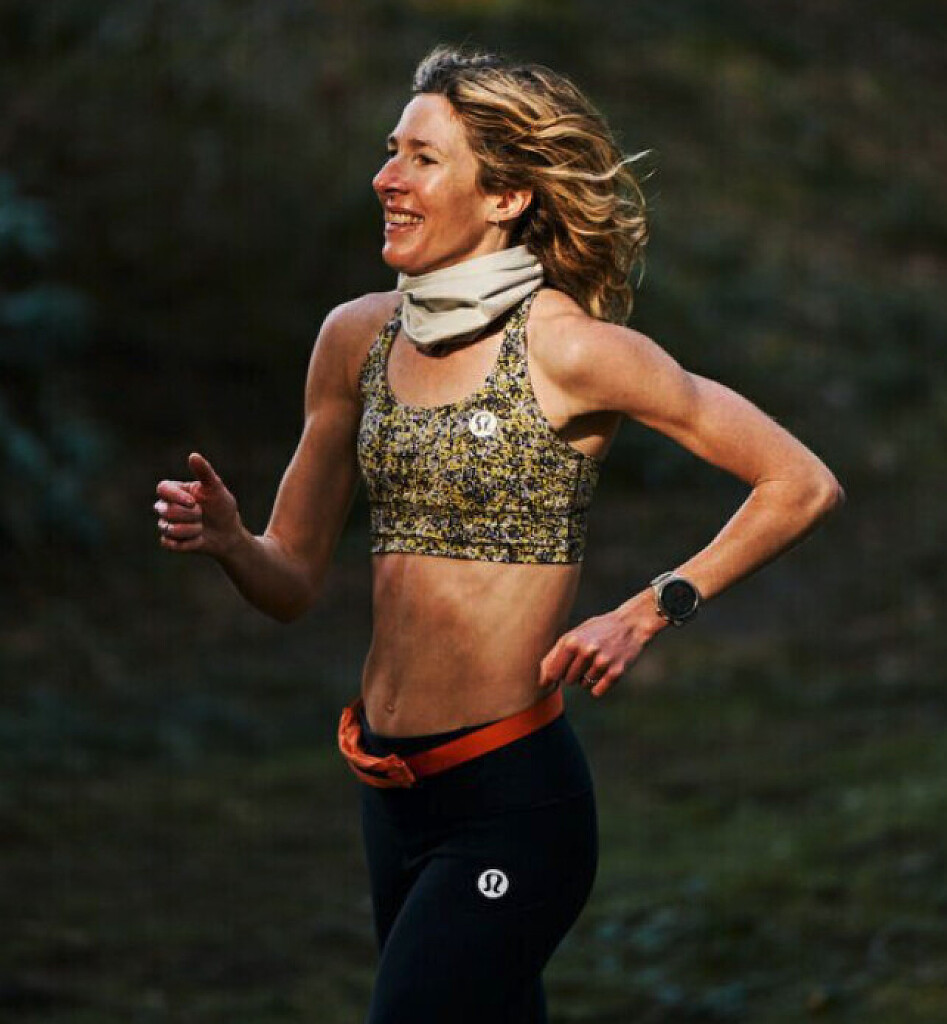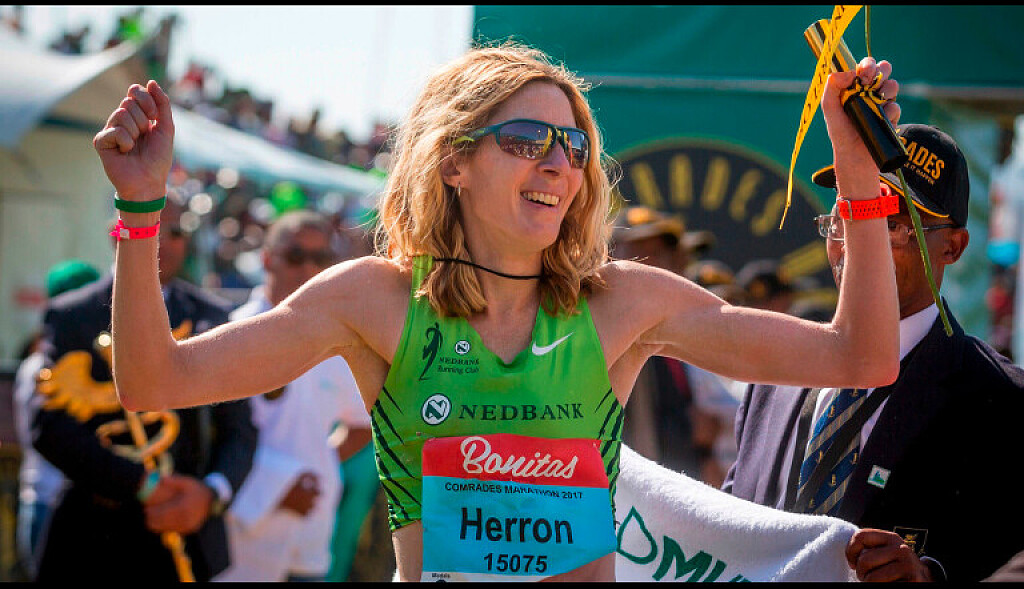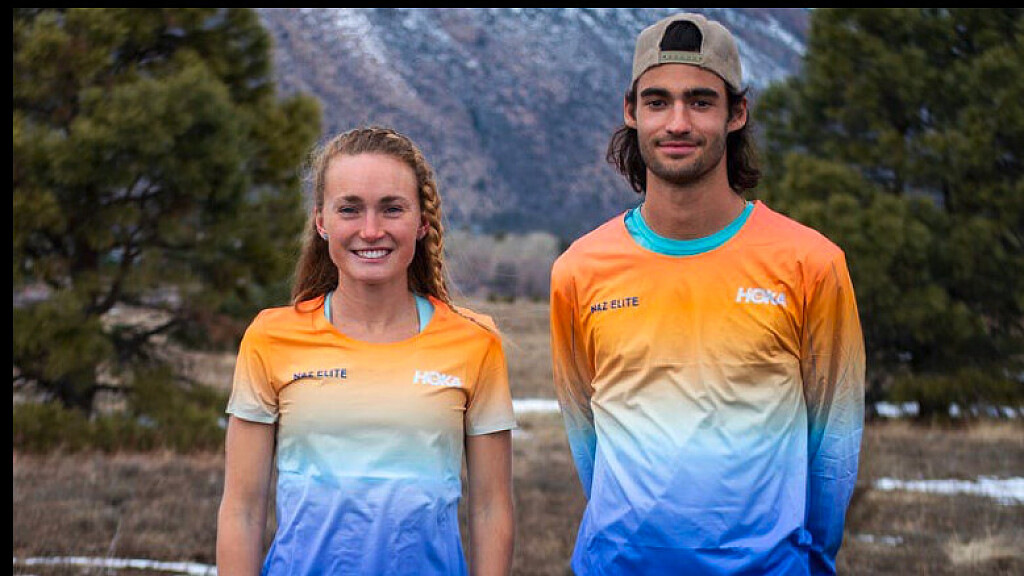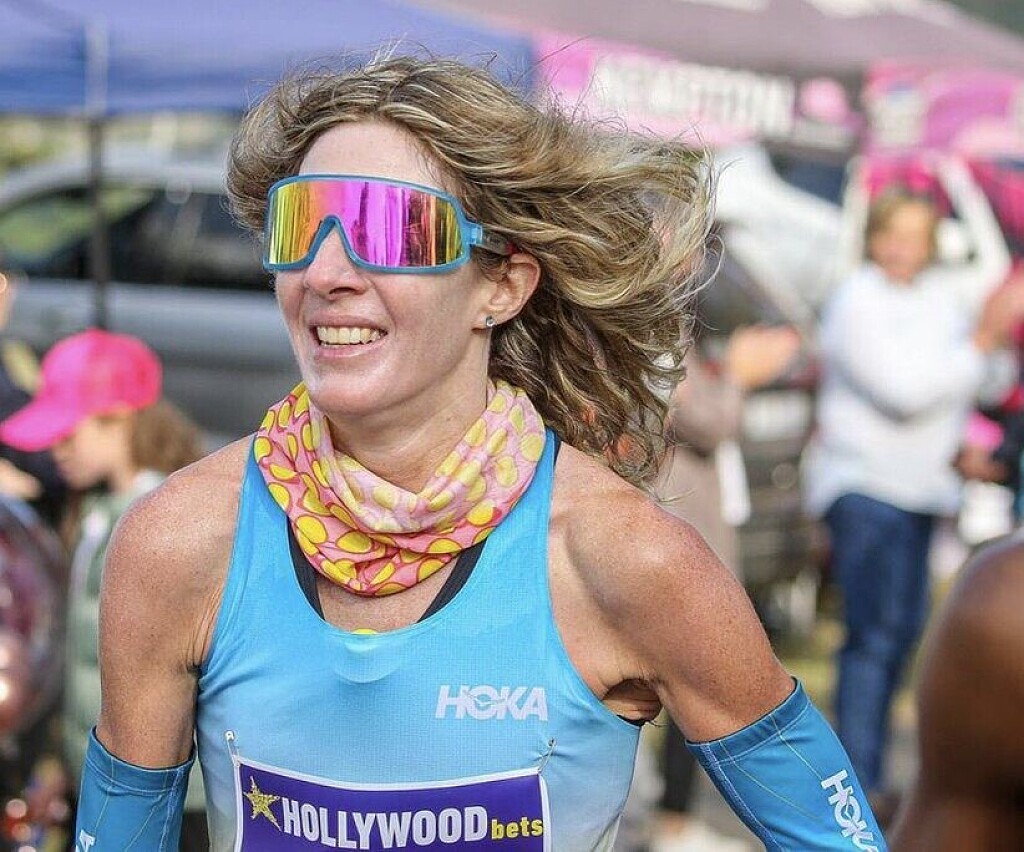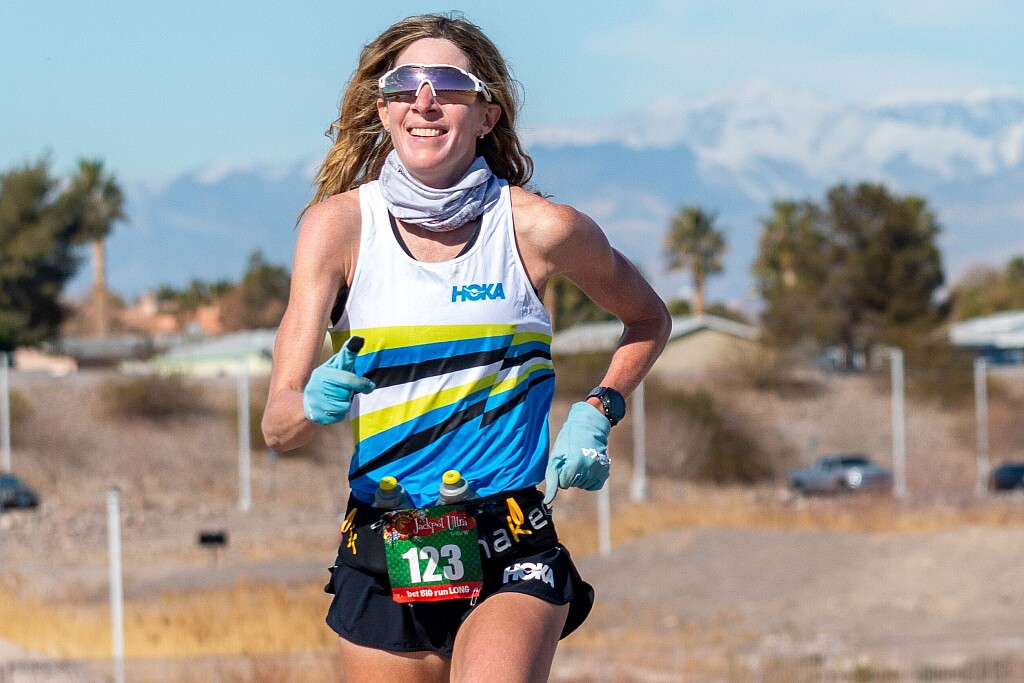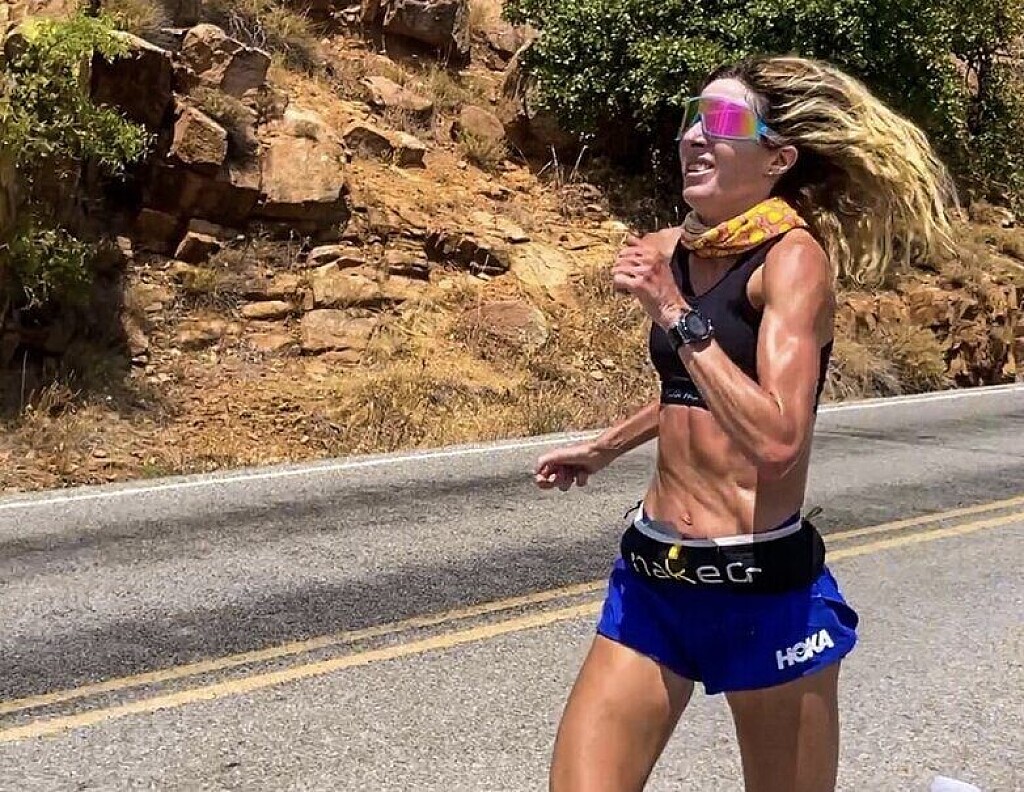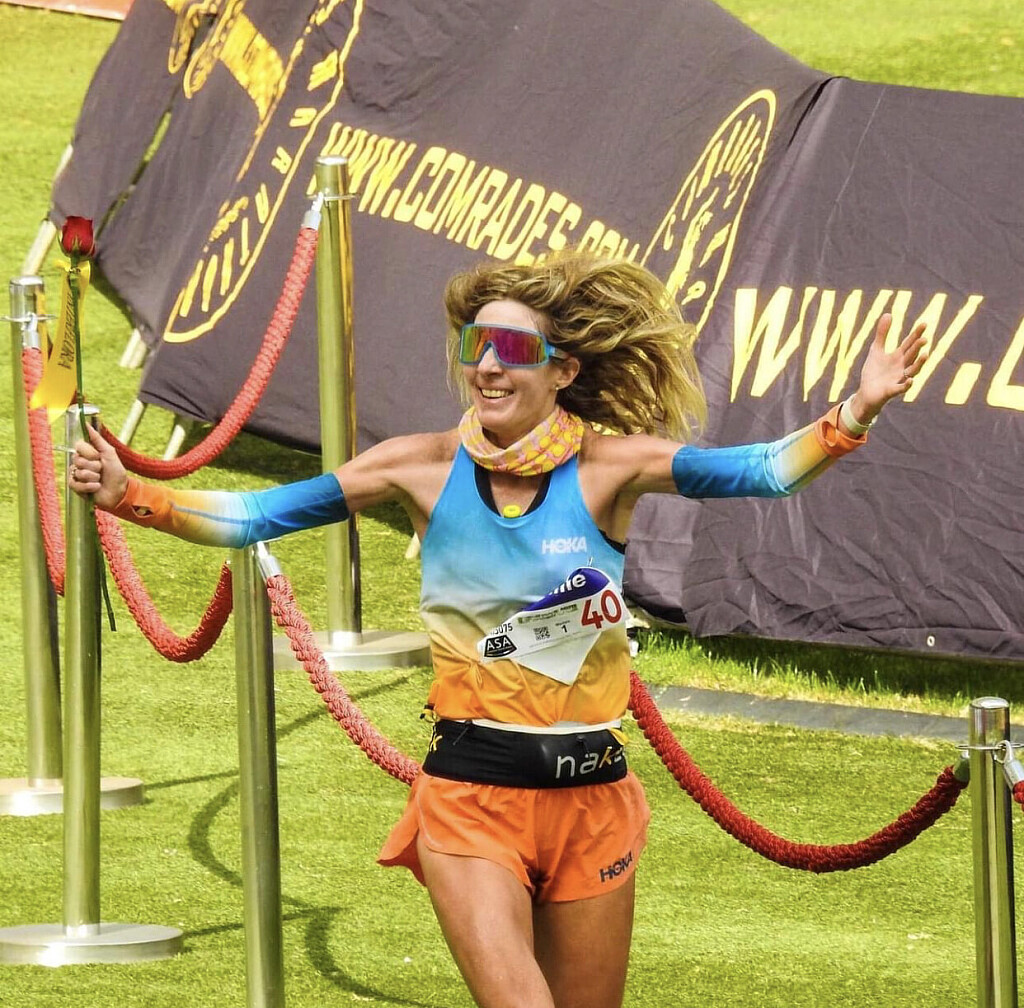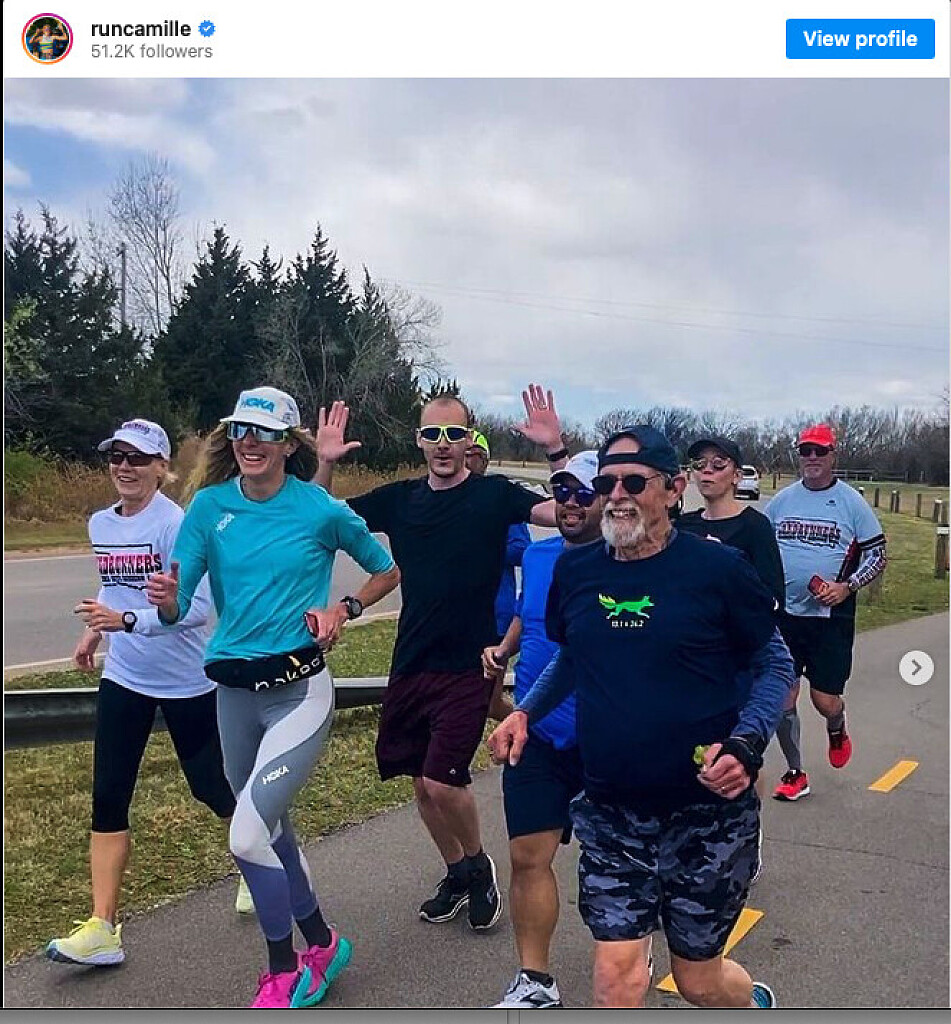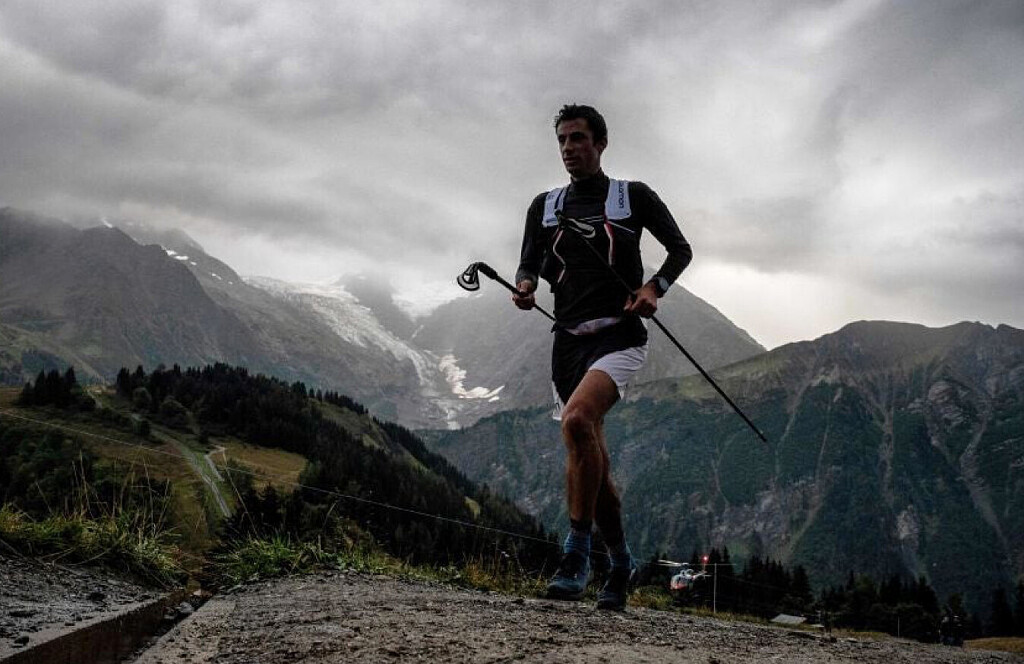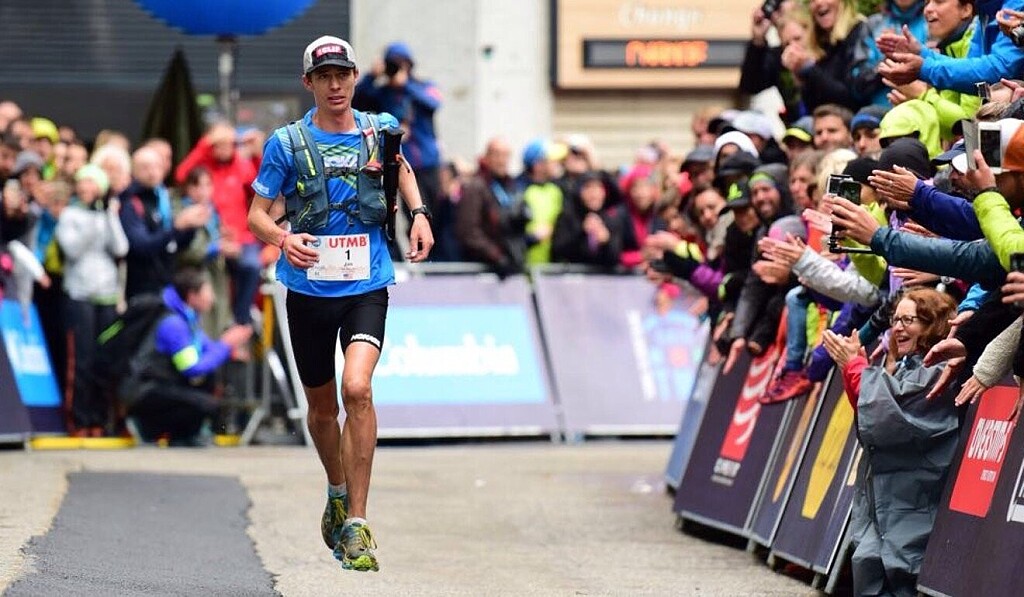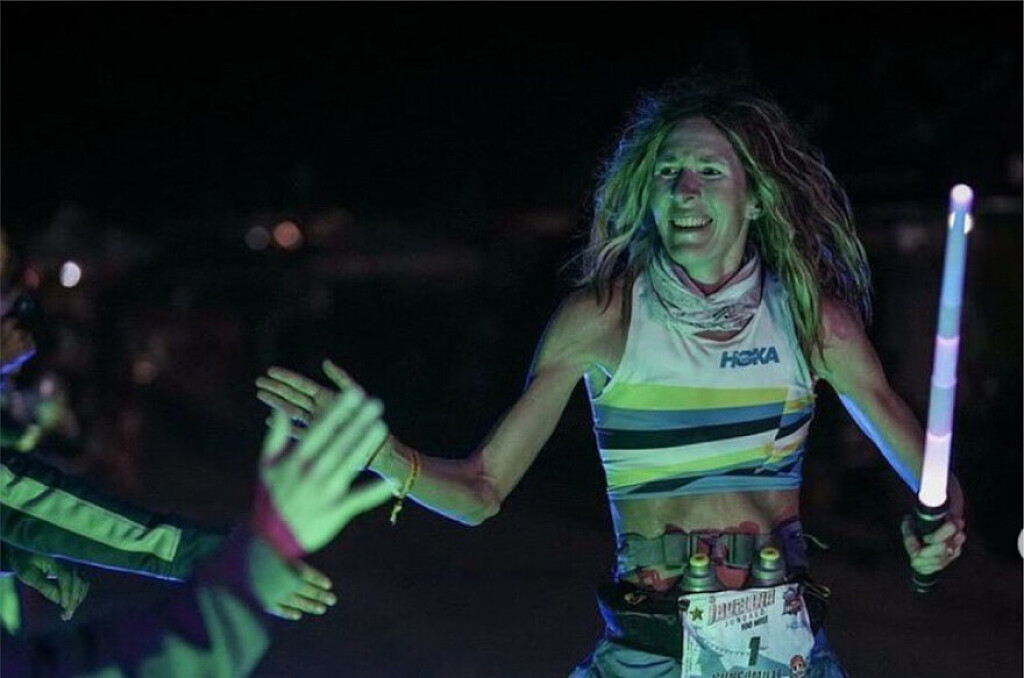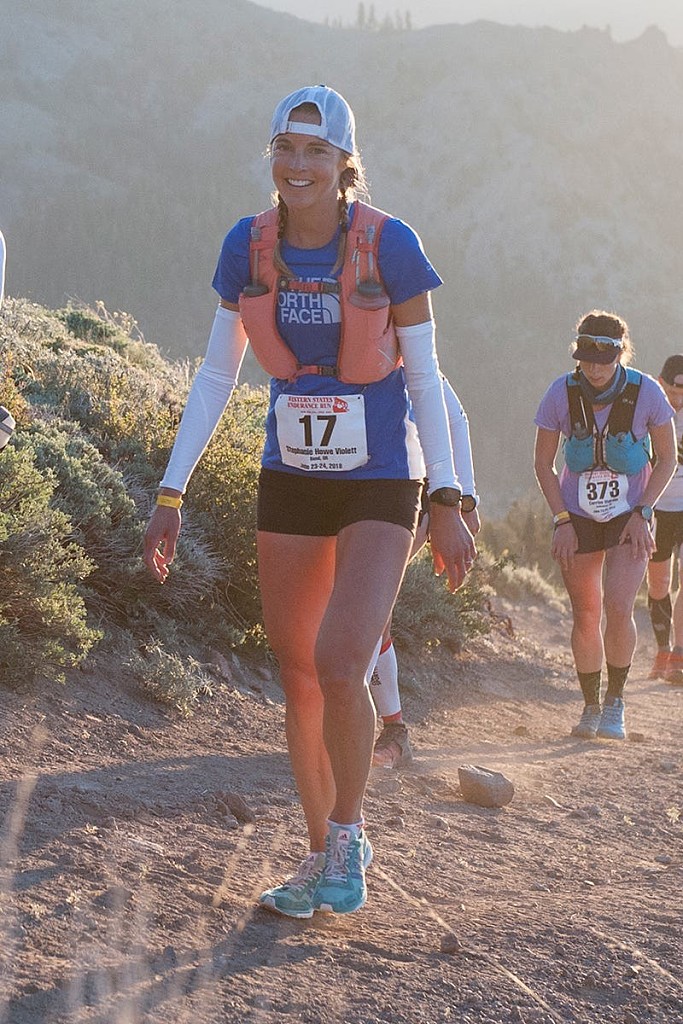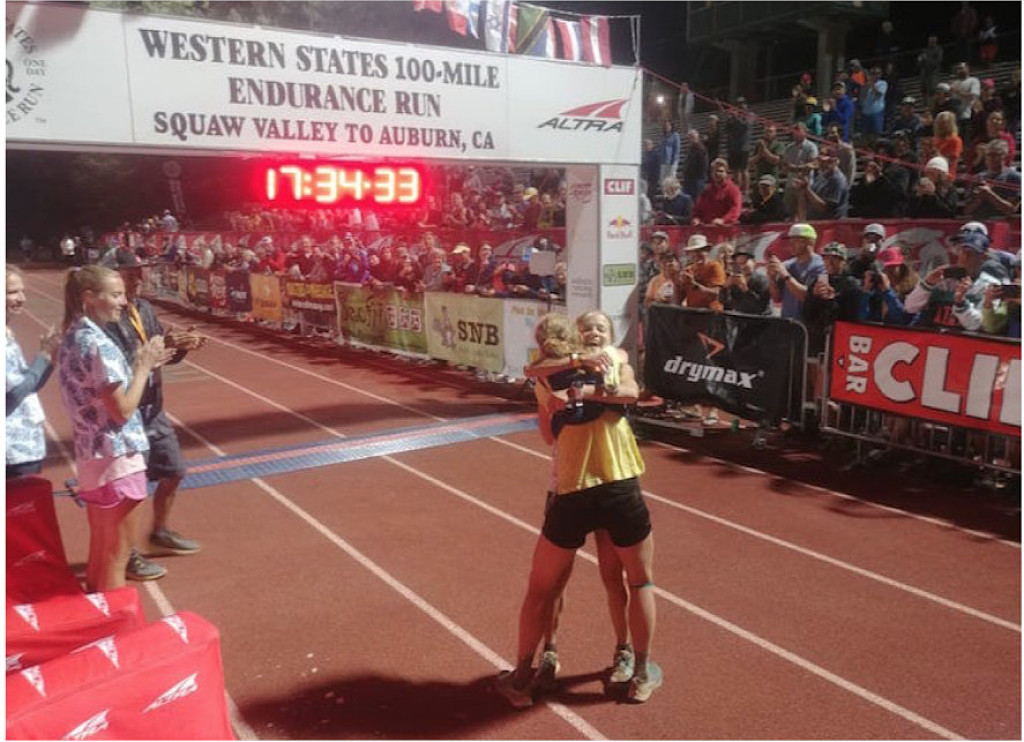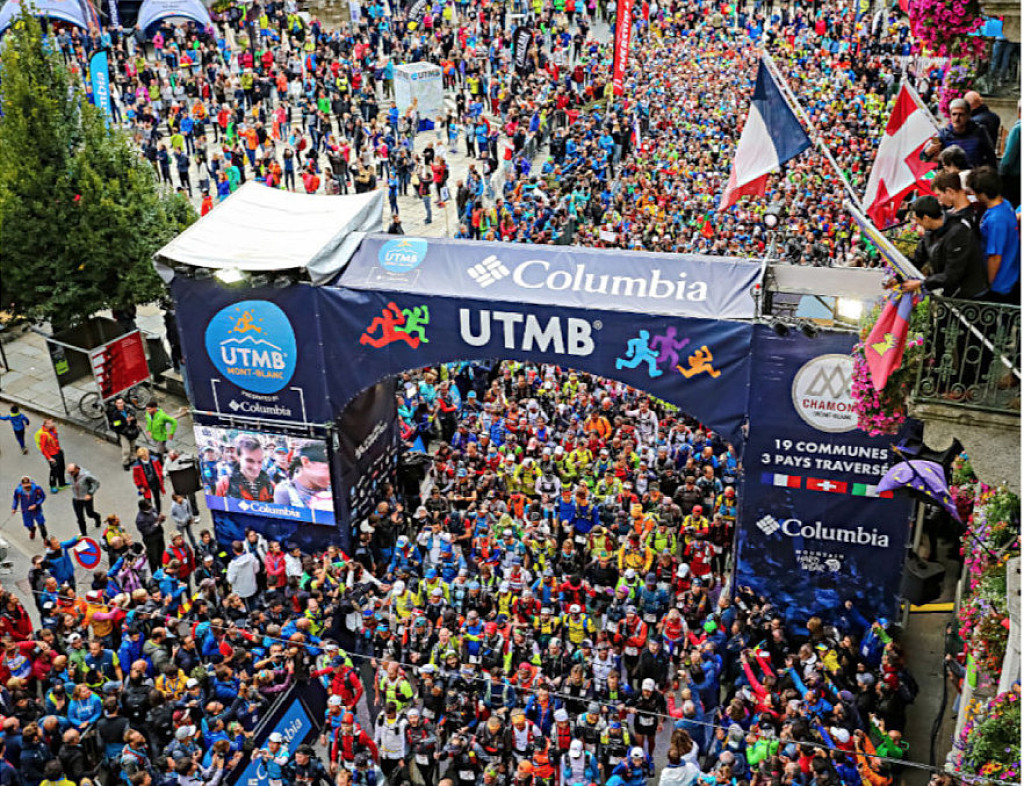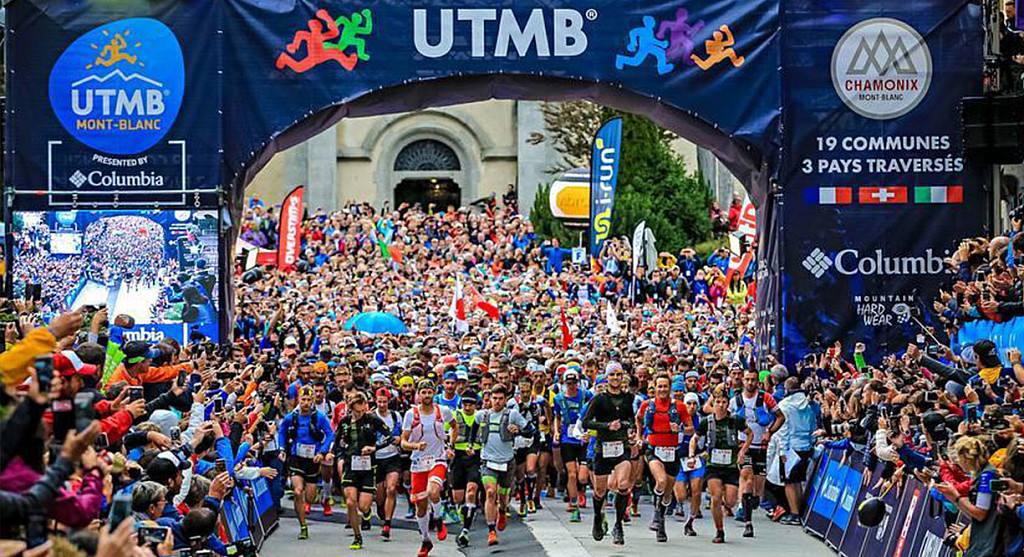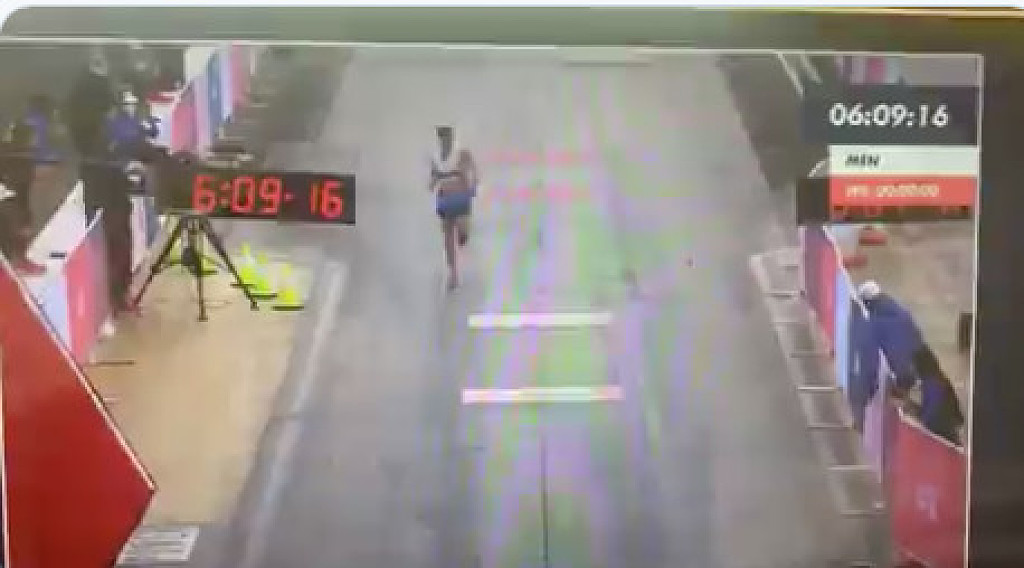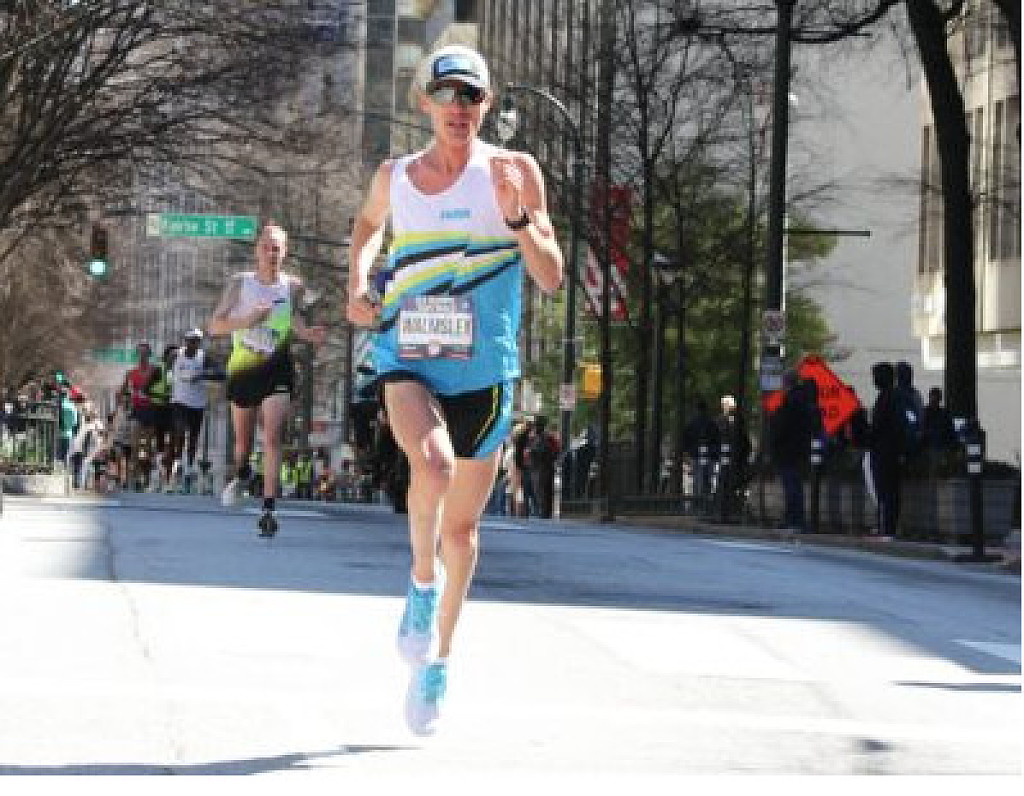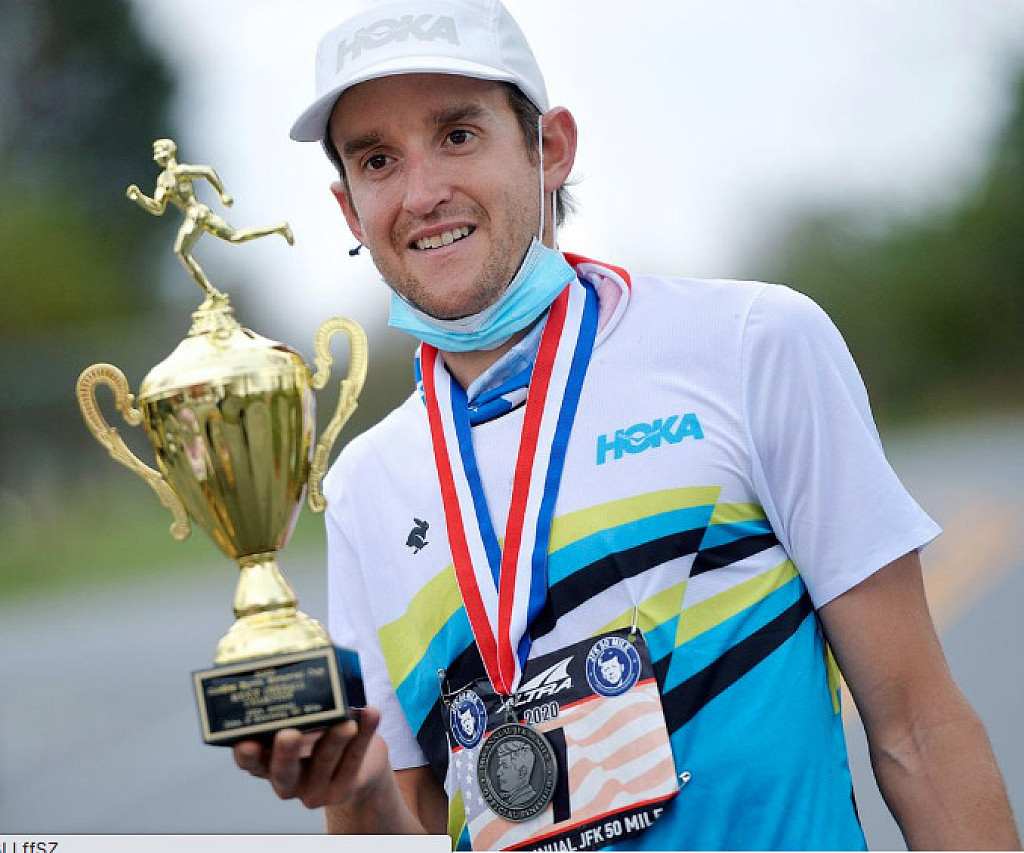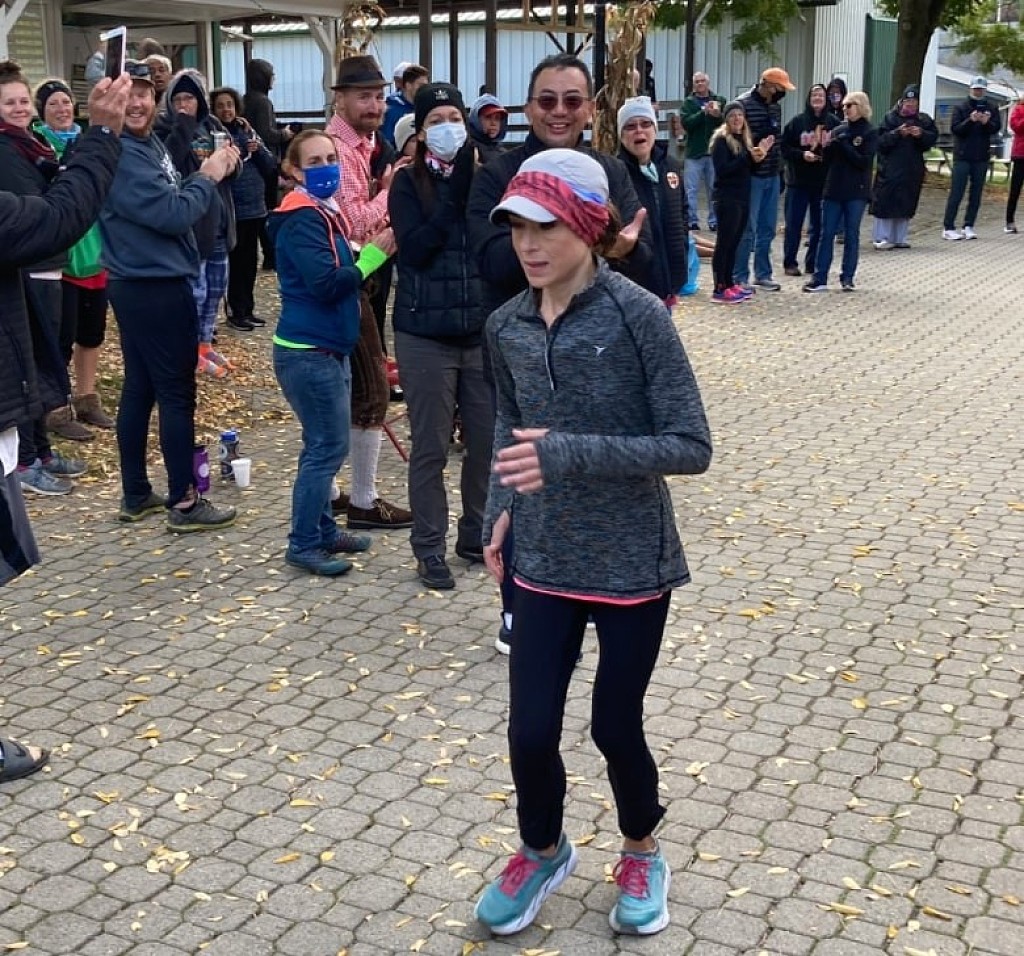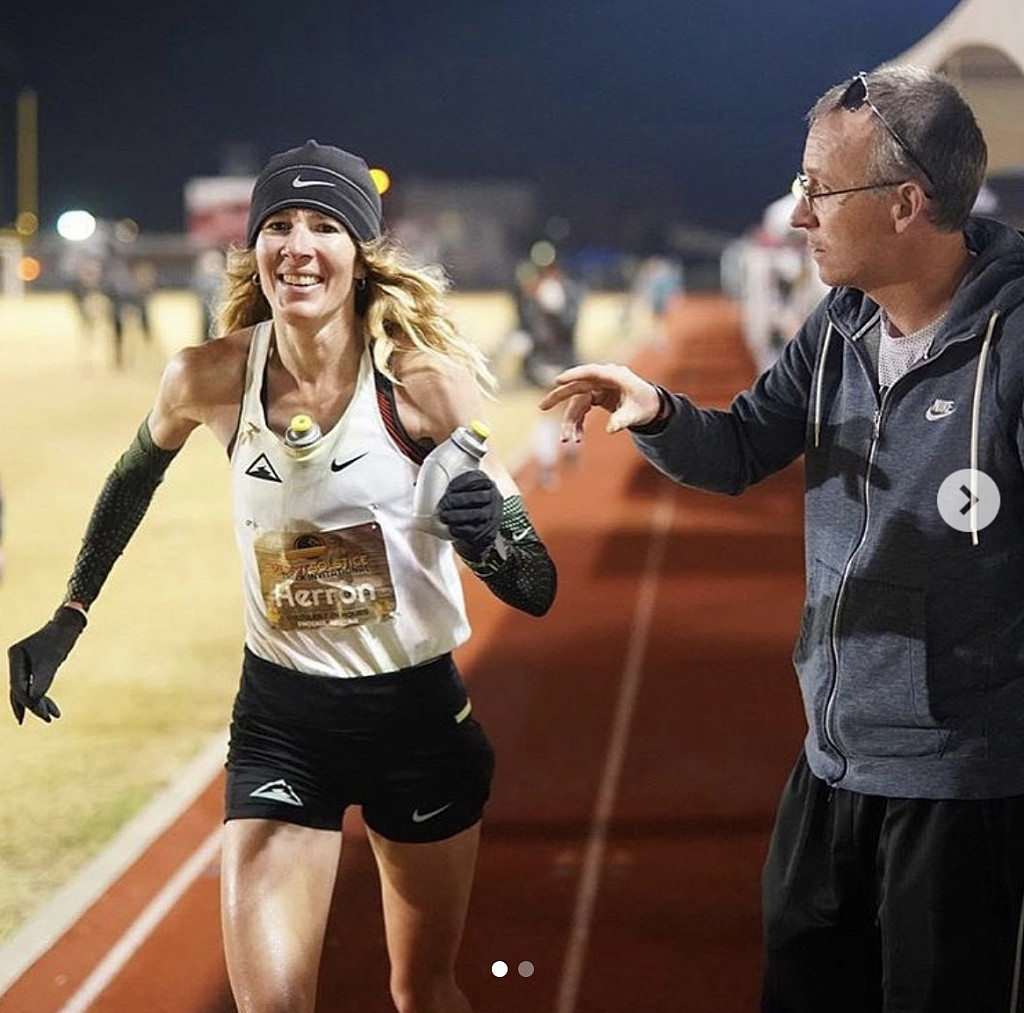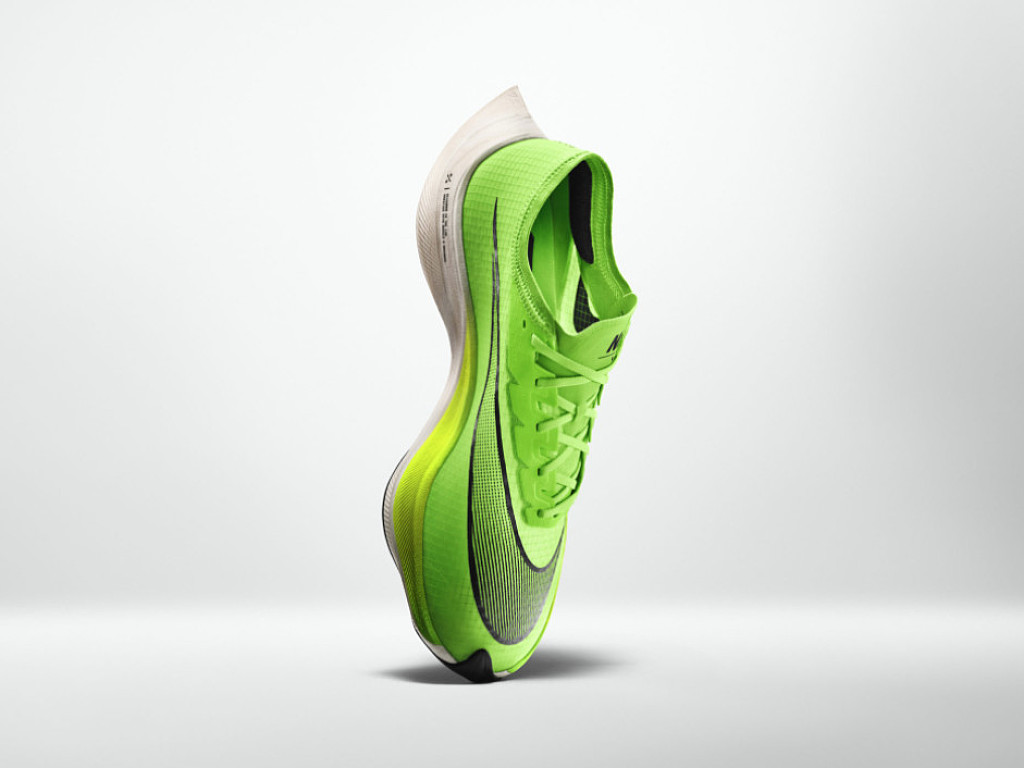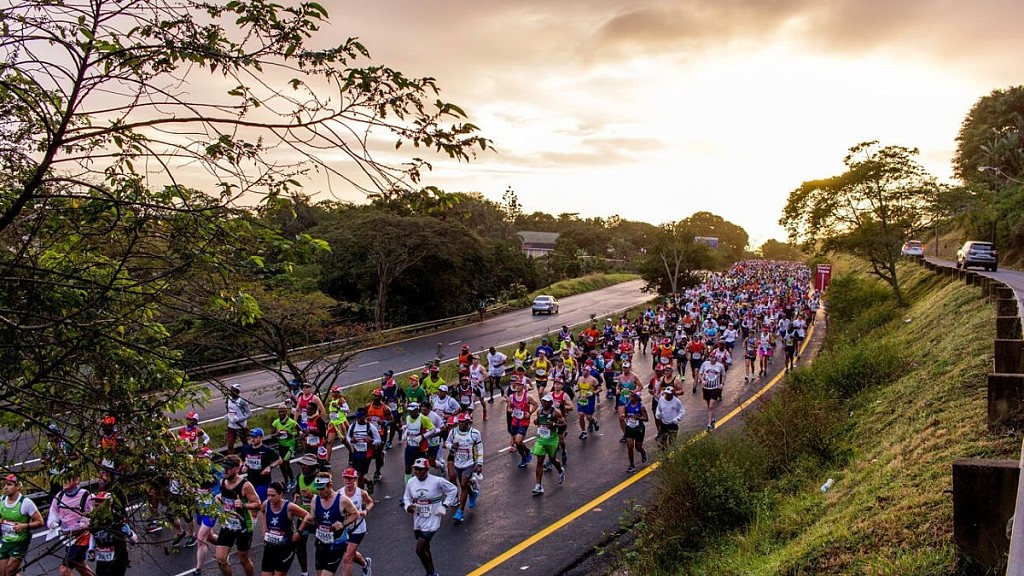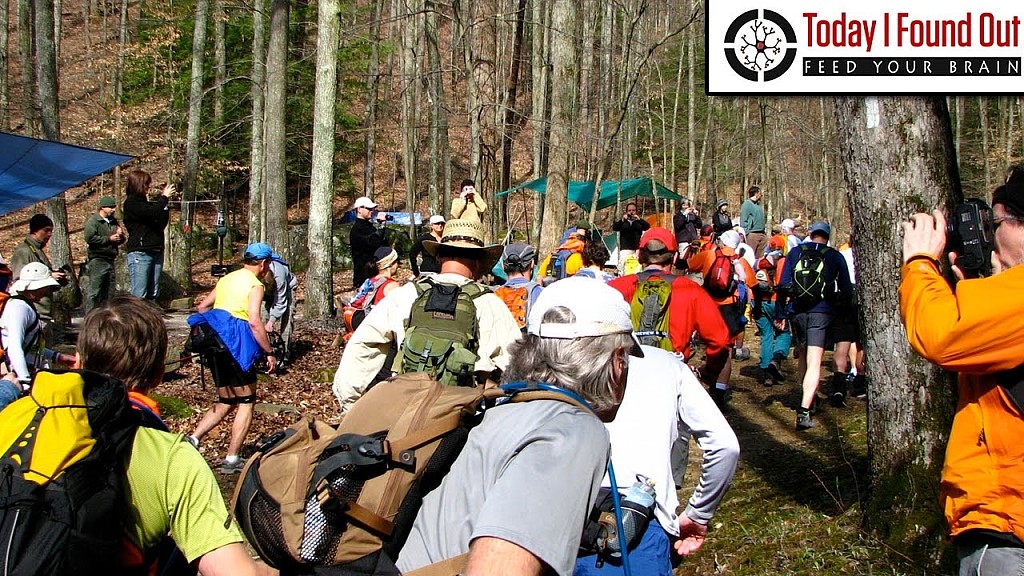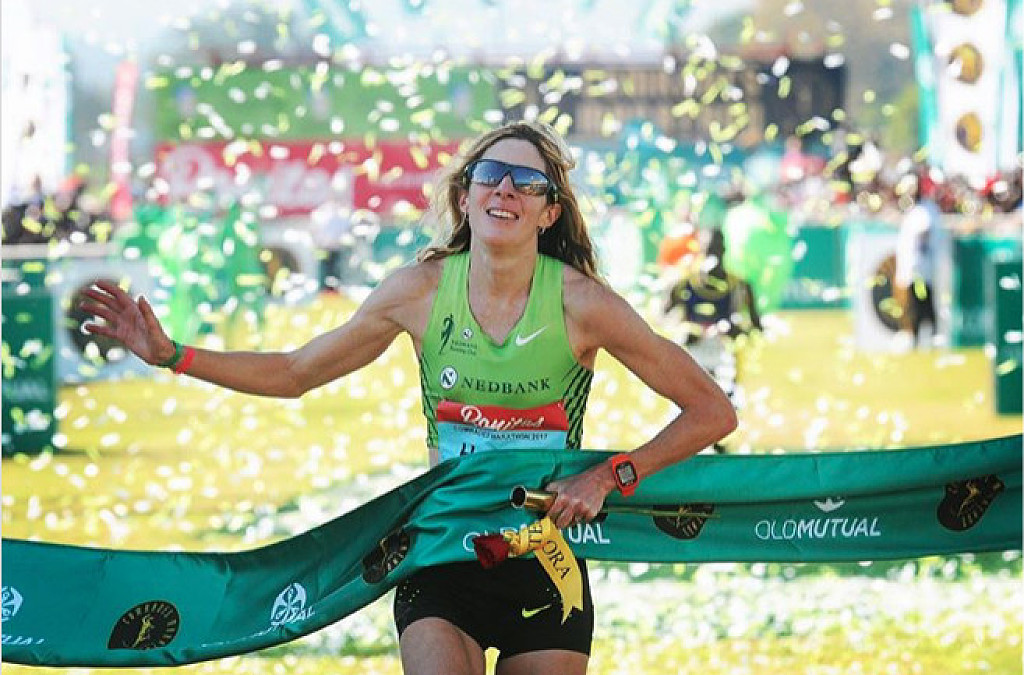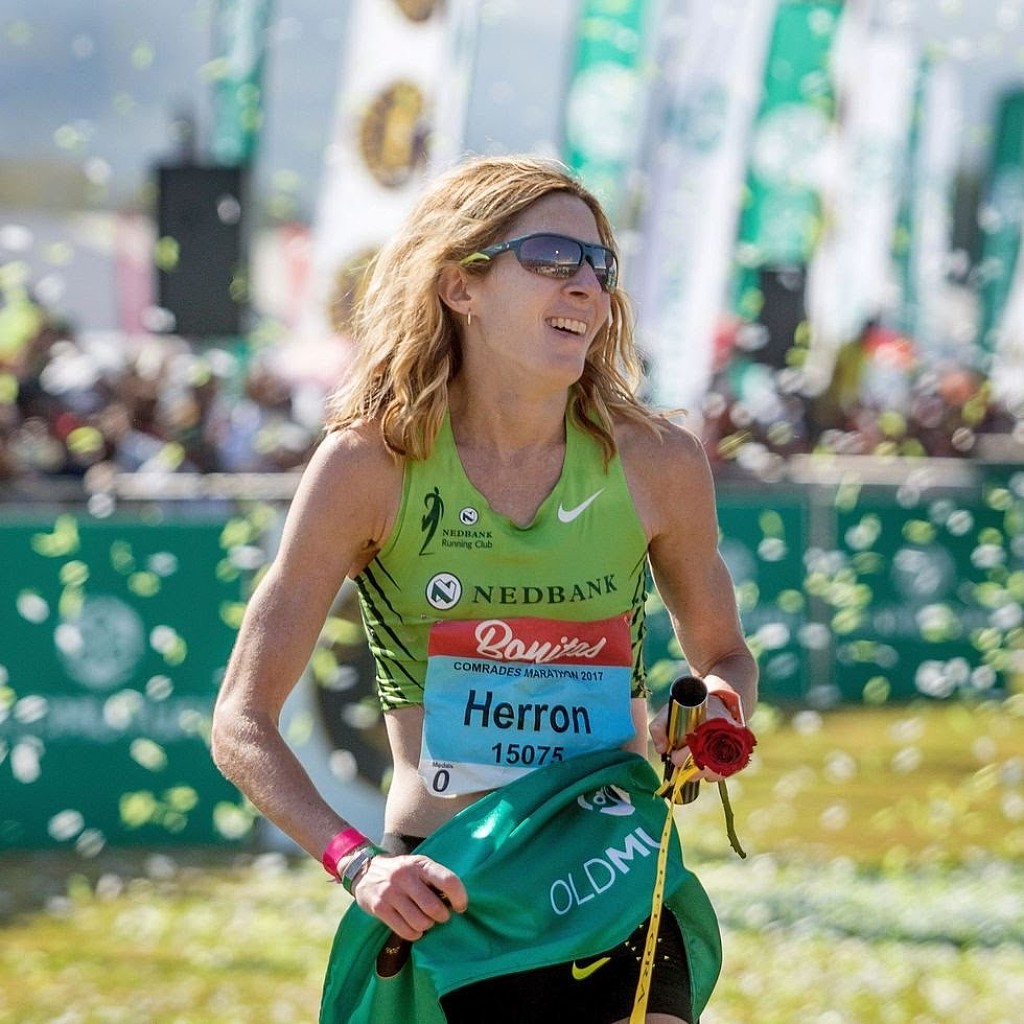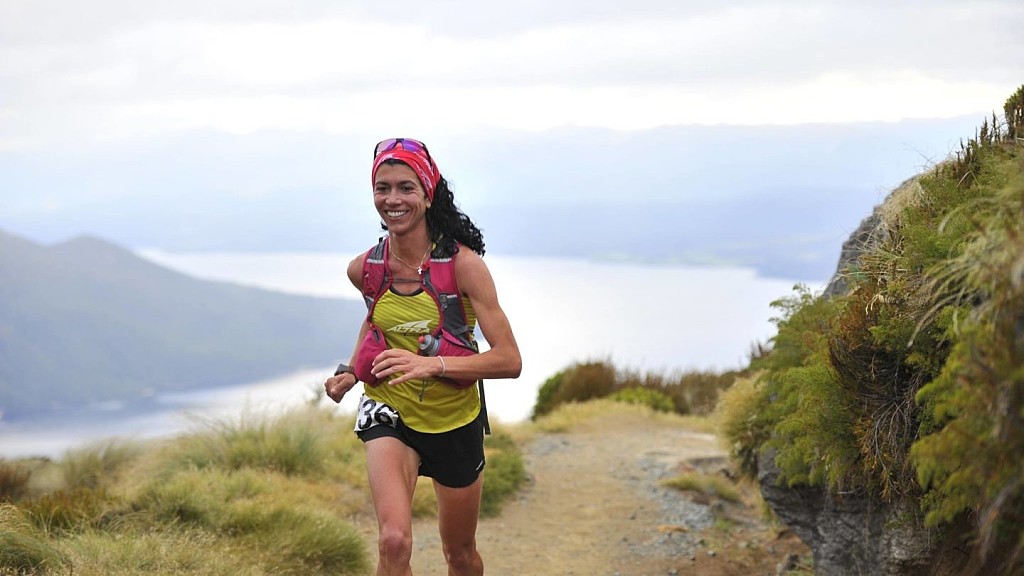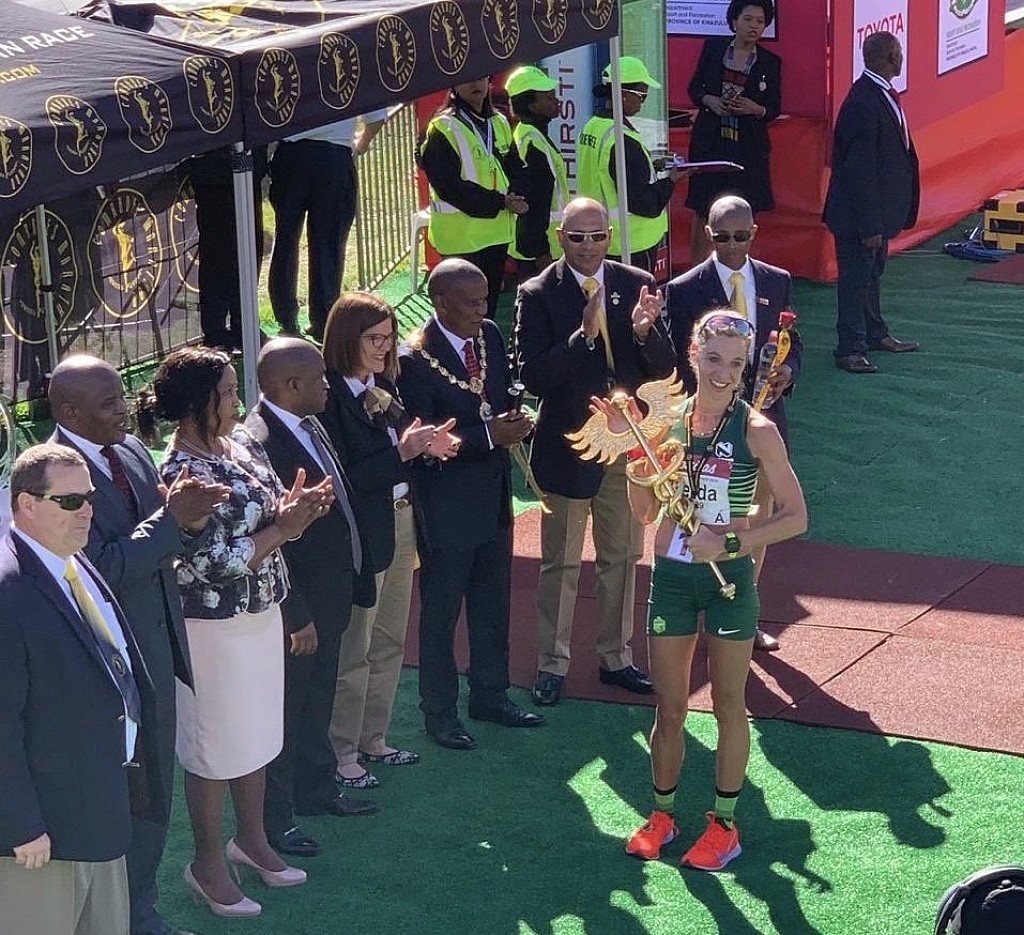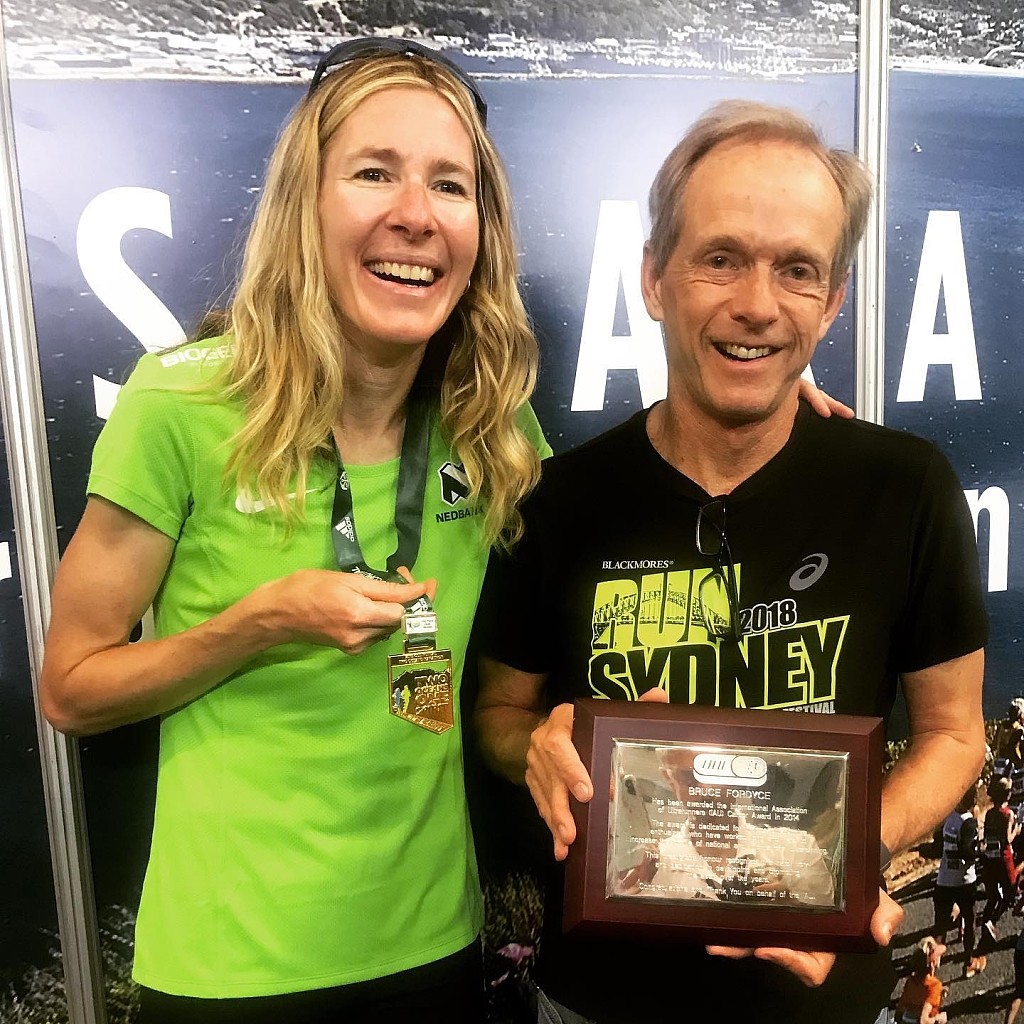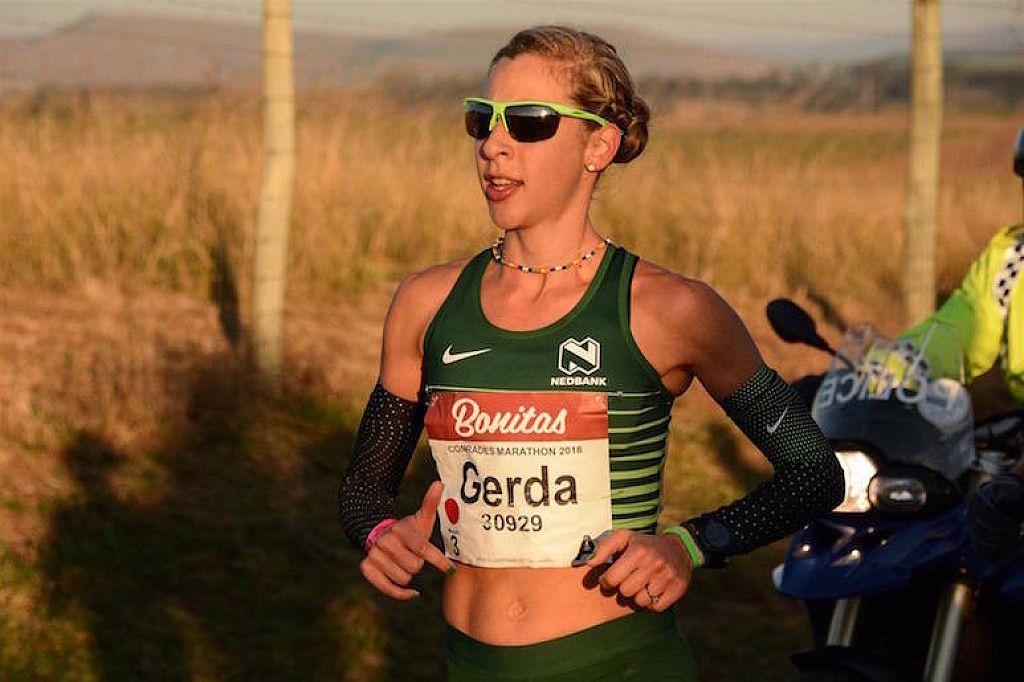Running News Daily
Running News Daily is edited by Bob Anderson. Send your news items to bob@mybestruns.com Advertising opportunities available. Train the Kenyan Way at KATA Kenya and Portugal owned and operated by Bob Anderson. Be sure to catch our movie A Long Run the movie KATA Running Camps and KATA Potato Farms - 31 now open in Kenya! https://kata.ke/
Index to Daily Posts · Sign Up For Updates · Run The World Feed
Articles tagged #Camille Herron
Today's Running News
Did You Know? No One Has Come Close to Sorokin’s 24-Hour Record Since 2022
Did you know that Aleksandr Sorokin’s legendary 24-hour world record—set in 2022—is still untouched, and no one has even come particularly close?
At the 2022 IAU 24-Hour European Championships in Verona, Italy, Lithuanian ultrarunner Aleksandr Sorokin ran a staggering 198.598 miles (319.614 kilometers) in a single day. That’s the equivalent of running from New York City to Washington, D.C.—and then some—all in just 24 hours.

Even more impressive: Sorokin averaged a 7:15-per-mile (4:30/km) pace the entire time. That’s a tempo most runners struggle to hold for a 10K—let alone for nearly 200 miles.
What’s Happened Since?

At the 2023 IAU 24-Hour World Championships, Sorokin competed again and covered 301.790 kilometers—an outstanding performance, but still nearly 18 kilometers short of his own world record.
No other male athlete has even broken the 300 km barrier since.
Meanwhile, on the women’s side, Japan’s Miho Nakata set a new world record in 2023, covering 270.363 km, which is phenomenal—but still nearly 50 km less than Sorokin’s historic run.

Top 24-Hour Running Performances (All-Time)
|
Runner |
Gender |
Year |
Distance (km) |
Gap to Sorokin (km) |
|
Aleksandr Sorokin |
Male |
2022 |
319.614 |
0.00 |
|
Yiannis Kouros |
Male |
1997 |
303.506 |
16.11 |
|
Aleksandr Sorokin |
Male |
2023 |
301.790 |
17.82 |
|
Tamas Bodis |
Male |
2023 |
295.290 |
24.32 |
|
Haruki Okayama |
Male |
2023 |
289.420 |
30.19 |
|
John Stocker |
Male |
2021 |
285.300 |
34.31 |
|
Miho Nakata |
Female |
2023 |
270.363 |
49.25 |
|
Camille Herron |
Female |
2019 |
270.116 |
49.50 |
|
Patrycja Bereznowska |
Female |
2022 |
263.660 |
55.95 |
The Legacy
More than two years later, Sorokin’s record remains the gold standard in ultrarunning. His 2022 performance wasn’t just a world record—it redefined what humans can do in a single day.
Whether you’re a weekend warrior or an elite endurance athlete, one thing is clear: nobody’s chasing Sorokin. He’s still out in front—by miles.
by Boris Baron
Login to leave a comment
Why Dill Pickles and Pickle Juice Are a Secret Weapon for Runners
When ultrarunning star Camille Herron clinched victory at the Ice Age Trail 50 earlier this May, she credited an unlikely trio for her late-race revival: an ice pitcher, a cold beer—and pickle juice.
Around mile 40 of the 50-mile race, heat and humidity hit hard, forcing Herron to take a break. But with a sodium boost from pickle juice, she was back on her feet and flying to the win. “I needed more sodium, so I learned a new trick with the pickle juice. I got going again and felt much better,” she shared on social media.

Herron isn’t alone. Many endurance runners are discovering the benefits of dill pickles and their salty brine. But why does it work?
What Makes Pickle Juice Effective?
1. Sodium Replenishment
When you sweat, your body loses vital electrolytes—especially sodium. Pickle juice is packed with it. One shot can contain up to 500–1000 mg of sodium, helping to restore electrolyte balance quickly.
2. Cramp Relief
Multiple studies suggest that pickle juice can stop cramps within minutes. The theory is that the acidic and salty solution triggers a reflex in the mouth and throat that interrupts cramping signals from the nervous system. It’s not just hydration—it’s neuromuscular magic.
3. Quick Absorption
Unlike sugary sports drinks, pickle juice doesn’t require digestion to be effective. It’s absorbed almost immediately, delivering rapid results during a race.
4. Gut-Friendly for Some
While not for everyone, many runners find that pickle juice is easier on their stomach than processed gels or sweet drinks during ultra events.
Why Dill Pickles?
It’s not just the juice—eating actual dill pickles provides a crunch of salt and hydration in solid form. The vinegar in dill pickles may also aid in reducing blood sugar spikes and promoting a steady energy level, especially in the latter stages of a long race.
Pickles in Daily Practice
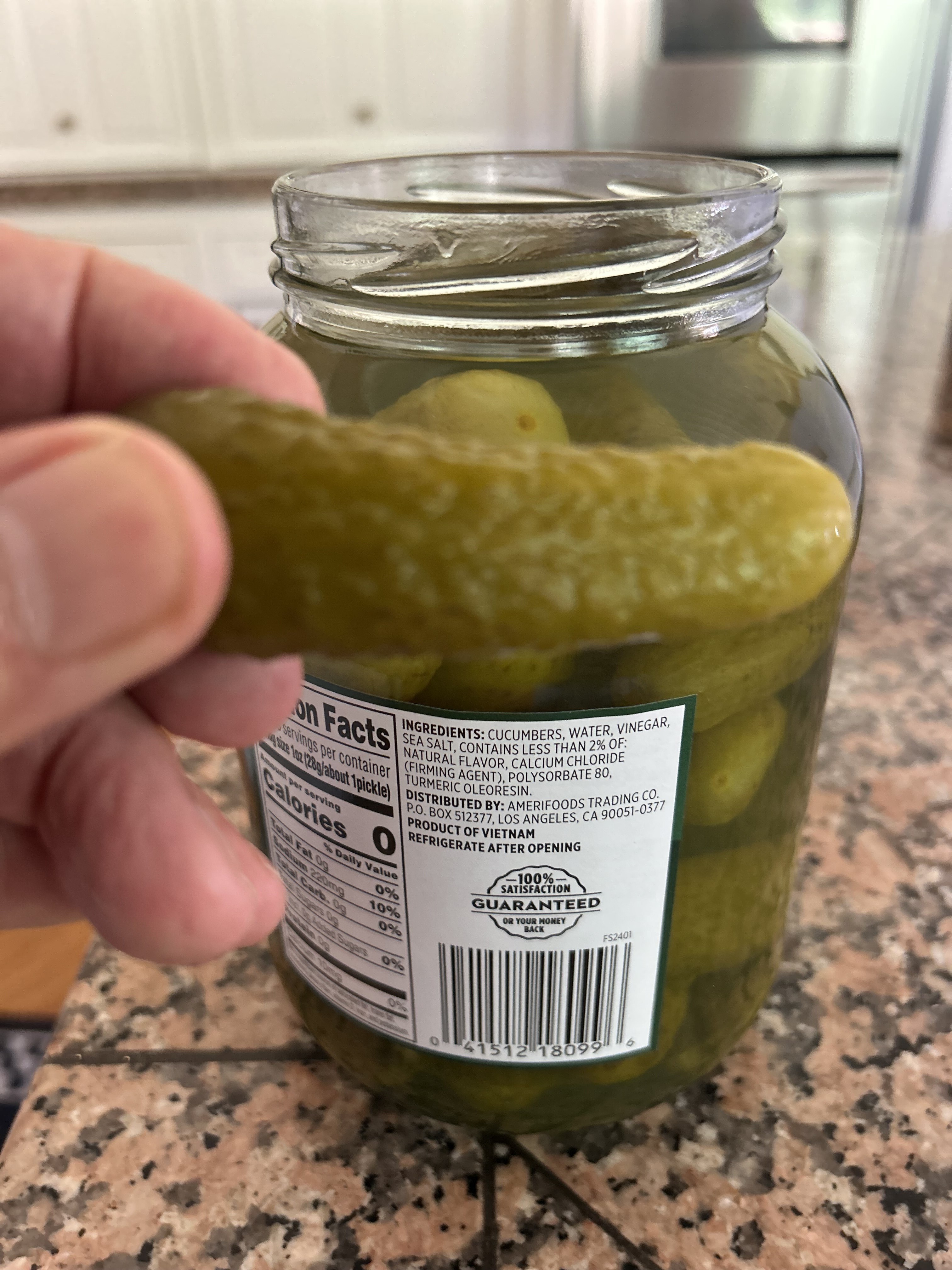
Lifetime runner Bob Anderson, founder of My Best Runs, discovered dill pickles and pickle juice several years ago—and never looked back. “I love the taste and it just seems to work in so many different ways,” says Anderson, who eats and drinks from a big jar almost every day.
Pickles have become a staple at aid stations in trail and ultra races. From pickle popsicles to pickleback shots (yes, even paired with beer), the humble cucumber in brine has earned its place in the runner’s toolkit.
As Camille Herron proved, even champions lean on the classics. Whether you’re training for your first ultra or just need a leg up during your next 10K, a little pickle power might be exactly what you need.
by Boris Baron
Login to leave a comment
I am a pickle and pickle juice nut. Really helps keep me running I think. - Bob Anderson 5/23 3:56 pm |
Jaci Smith Signs with Hansons-Brooks Distance Project
Jaci Smith, one of America’s top rising distance runners, has officially joined the prestigious Hansons-Brooks Original Distance Project (ODP). Known for its structured training program and legacy of developing elite marathoners, Hansons-Brooks ODP welcomes Smith into a team environment built for championship success.
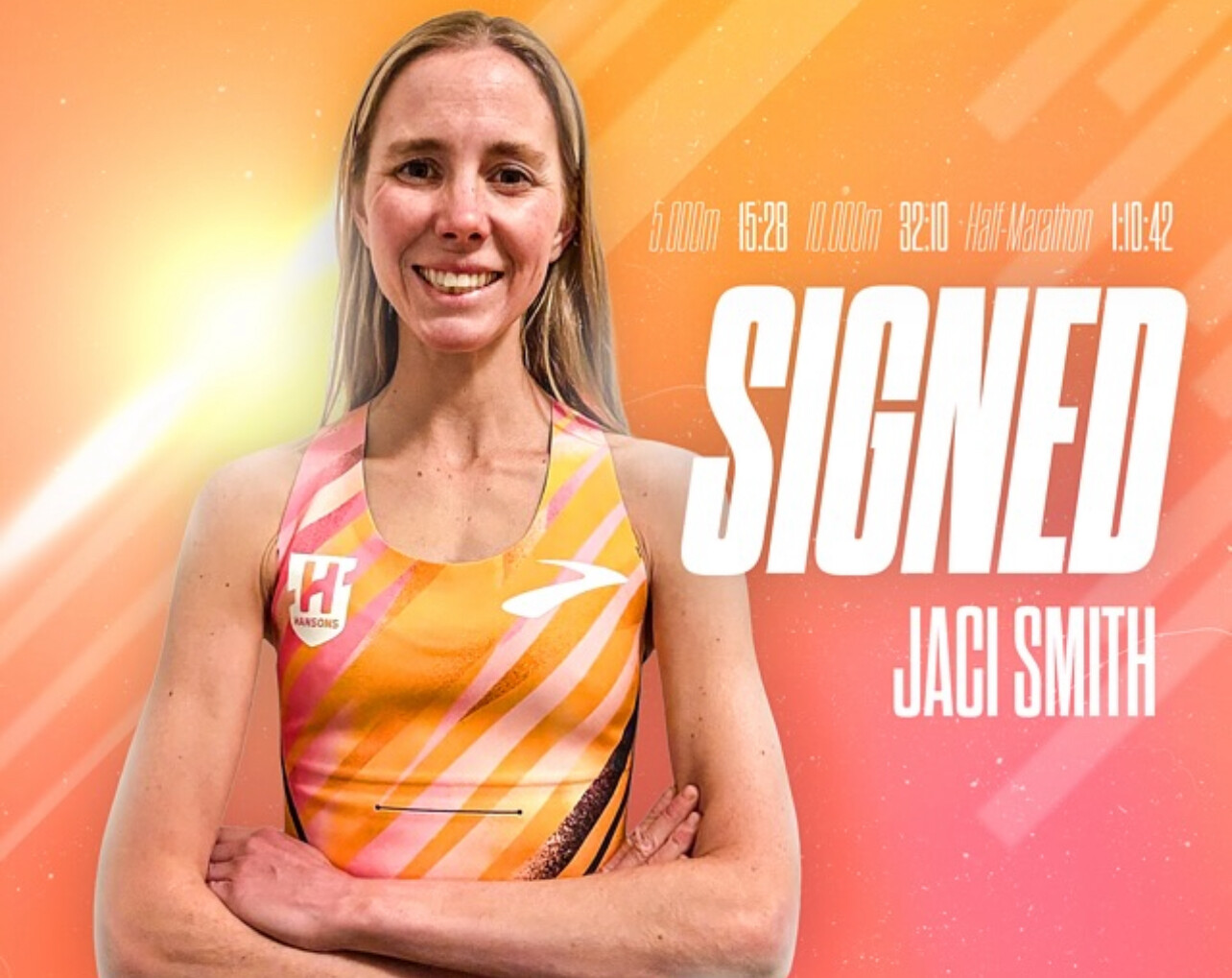
Smith arrives with standout personal bests across key distances:
• 5000m: 15:28
• 10,000m: 32:10
• Half Marathon: 1:10:42
These marks place her firmly among the top tier of U.S. women in distance running, and her addition bolsters the Hansons team as they prepare for future national and international competitions, including the U.S. Olympic Trials.
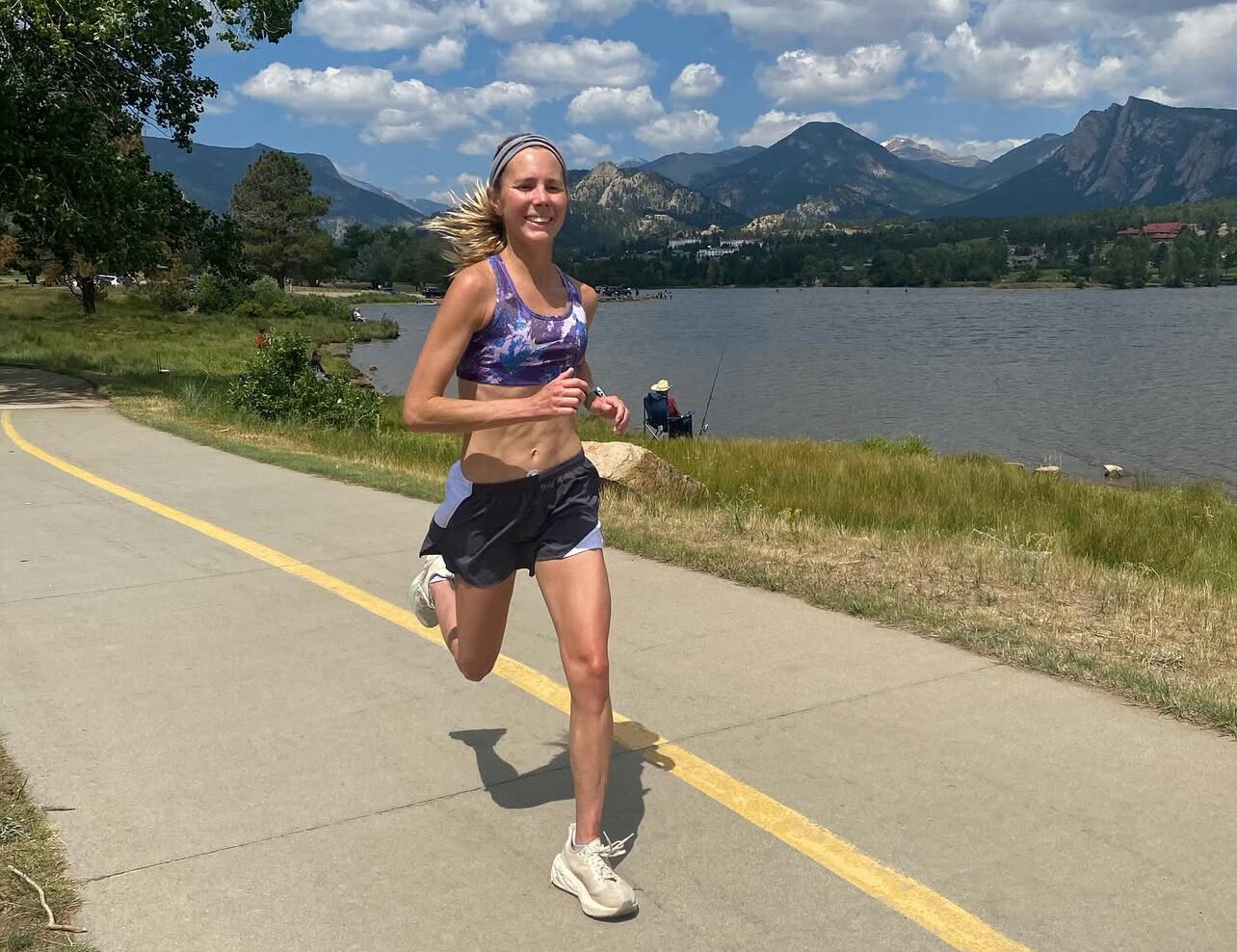
A graduate of the U.S. Air Force Academy, Smith has balanced military service with her athletic ambitions—an experience that has shaped her mental toughness and work ethic. She has represented the United States in international military competitions and brings a disciplined mindset to her training.
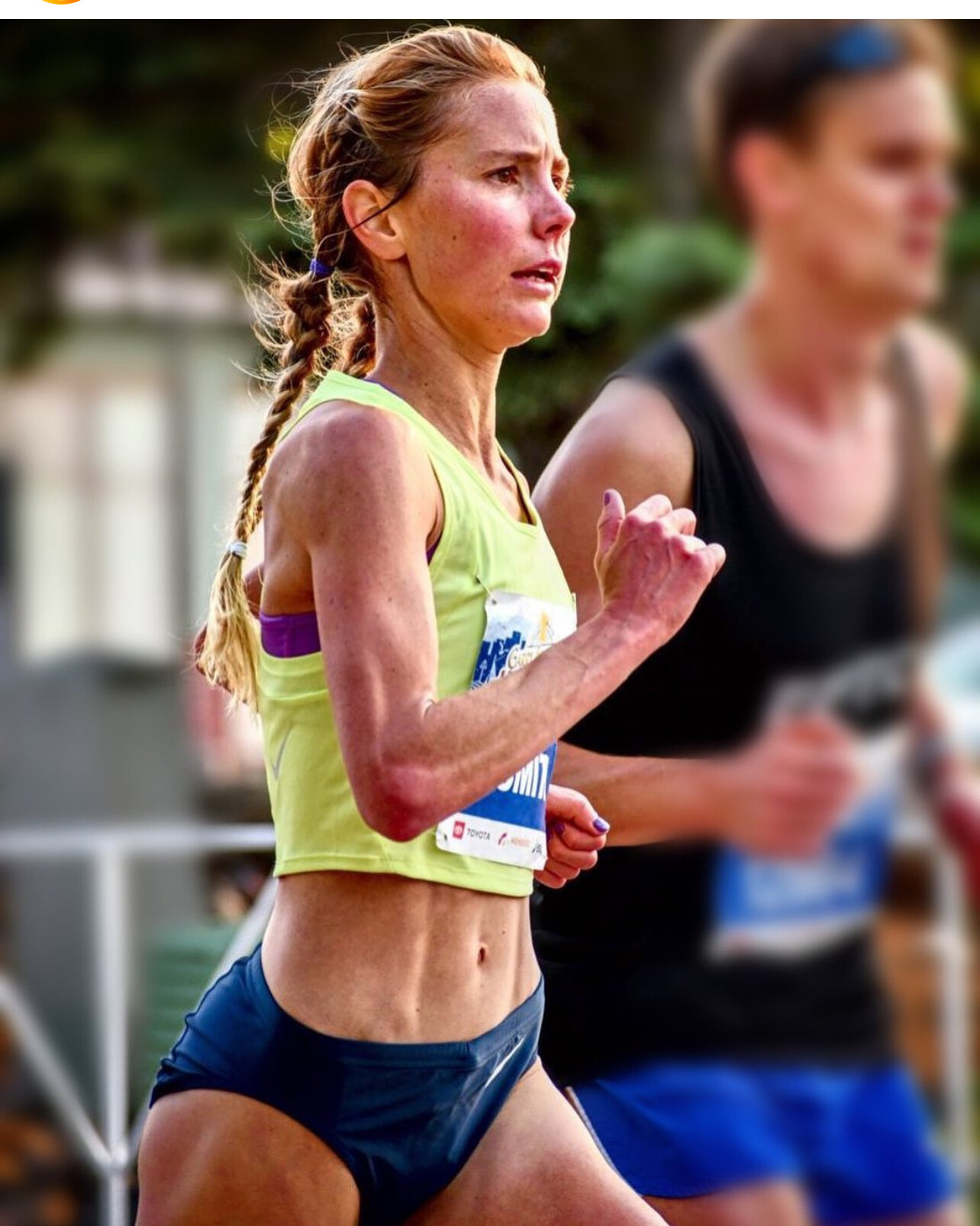
“Joining the Hansons team is a dream come true,” Smith recently shared. “I’ve admired their system for years, and I’m excited to train alongside athletes who push each other toward excellence.”

With coaching, team support, and a proven development model behind her, Jaci Smith is poised to make a strong impact in the years ahead. Her journey is one to watch as she aims for breakthroughs on the track and the roads.
Ultra running star Camille Herron wrote on social media "So happy about this! Thank you for taking fellow Okie Jaci under your wing C! We've watched her race since her freshman yr of HS and knew she's special."
by Boris Baron
Login to leave a comment
Camille Herron and the Wikipedia Controversy: Integrity in Ultrarunning Under Scrutiny
Update: after reading our article Camille sent this to MBR "Individuals are violating World Athletic rules and publicly claiming they broke my records. It’s undermining the integrity of the sport and devaluing those who adhere to the rules and the ratified record holders, including me.
I hope Yiannis’s statement provides added clarity who’s behind the push to disregard the rules and retaliated against me."
Camille Herron recently addressed the Wikipedia controversy on her Facebook page, expressing her commitment to fairness and accountability in ultrarunning. She acknowledged the challenges of speaking up about rules and technicalities, noting that it can lead to retaliation.
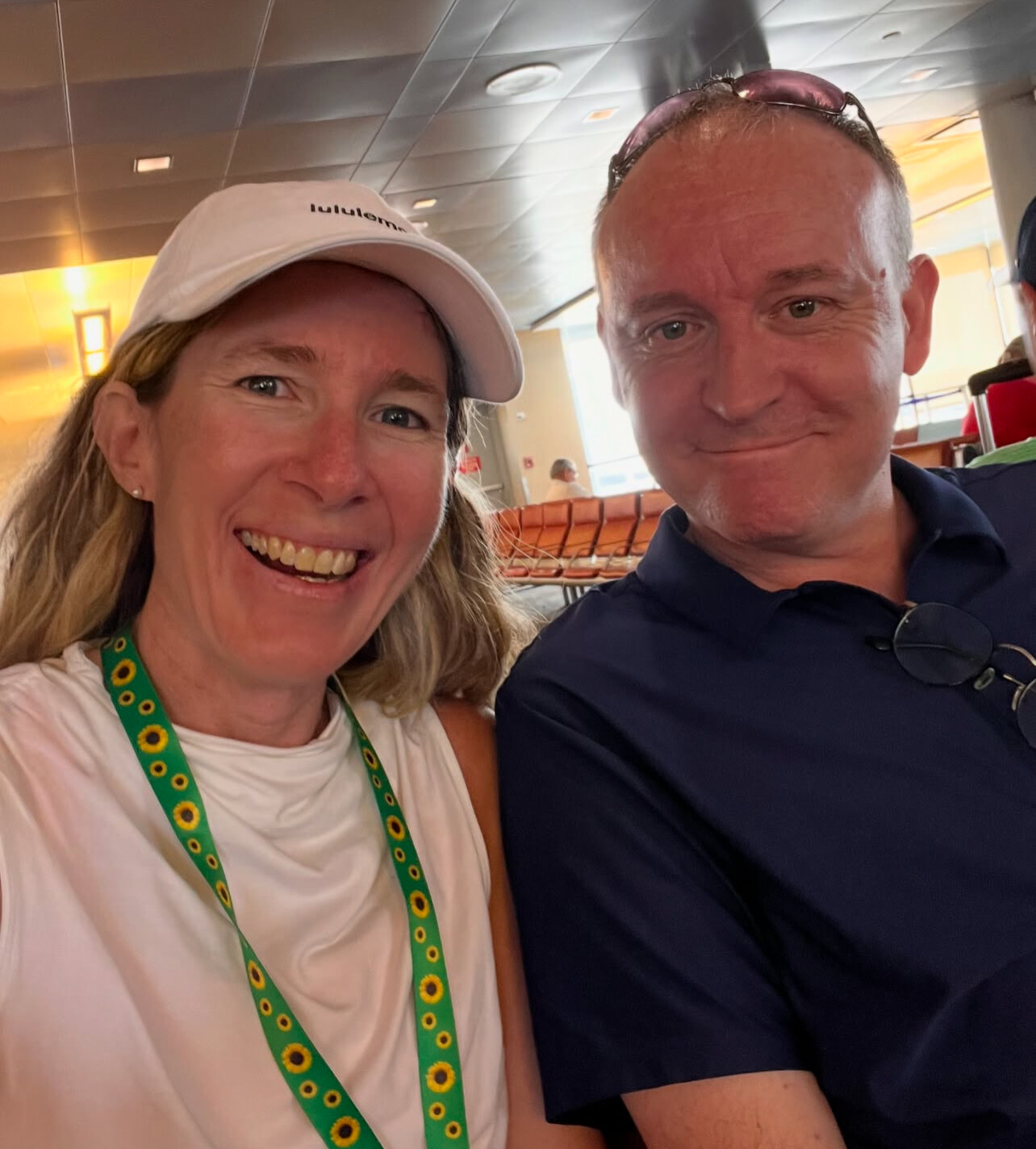
Herron emphasized that the International Association of Ultrarunners (IAU) has validated her concerns twice, confirming that she continues to hold the IAU World Records and World Bests for 48 Hours and 6 Days. She concluded by thanking her supporters and reaffirming her dedication to integrity in the sport.
In September 2024, the ultrarunning community was shaken by a controversy involving American ultrarunner Camille Herron and her husband and coach, Conor Holt. The couple was accused of editing Wikipedia pages to enhance Herron's achievements while diminishing those of her competitors.
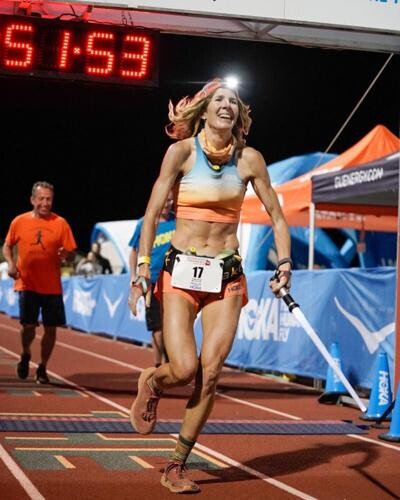
An investigation by Canadian Running revealed that two Wikipedia accounts, "Temporun73" and "Rundbowie," were linked to Herron's email and Holt's IP address. These accounts made numerous edits to Herron's page, amplifying her accomplishments, and altered the pages of fellow ultrarunners, including Courtney Dauwalter and Kilian Jornet, to downplay their achievements. For instance, statements like "widely regarded as one of the best trail runners ever" were removed from competitors' pages, while Herron was described as "widely regarded as one of the greatest ultramarathon runners of all time."
Following the exposure of these activities, Herron's primary sponsor, Lululemon, terminated their partnership with her. In a statement, the company emphasized its commitment to equitable competition and stated, "After careful consideration and conversation, we have decided to end our ambassador partnership with Camille."
In response to the allegations, Holt took full responsibility, stating, "Camille had nothing to do with this. I'm 100 percent responsible and apologize [to] any athletes affected by this and the wrong I did." He explained that his actions were an attempt to protect Herron from online harassment and bullying that had adversely affected her mental health.
The incident has sparked widespread discussion within the ultrarunning community, with many expressing disappointment over the unsportsmanlike behavior. Herron, known for her numerous world records and contributions to the sport, now faces challenges in rebuilding trust and credibility within the community.
As the situation unfolds, it serves as a reminder of the importance of integrity and sportsmanship in athletics. The ultrarunning community continues to reflect on the implications of this controversy and the lessons to be learned moving forward.
by Boris Baron
Login to leave a comment
The Strange Saga of Ultrarunner Camille Herron and Wikipedia
The husband of runner Camille Herron admitted to having altered the Wikipedia biographies of prominent ultrarunners. The revelation came after a Canadian journalist launched an investigation.
On September 24, Conor Holt, the husband and coach of American ultrarunner Camille Herron, admitted to altering the biographies of Herron, Courtney Dauwalter, Kilian Jornet, and other prominent runners on the website Wikipedia. Holt’s edits boosted his wife’s accolades but also downgraded those of the other prominent ultrarunners.
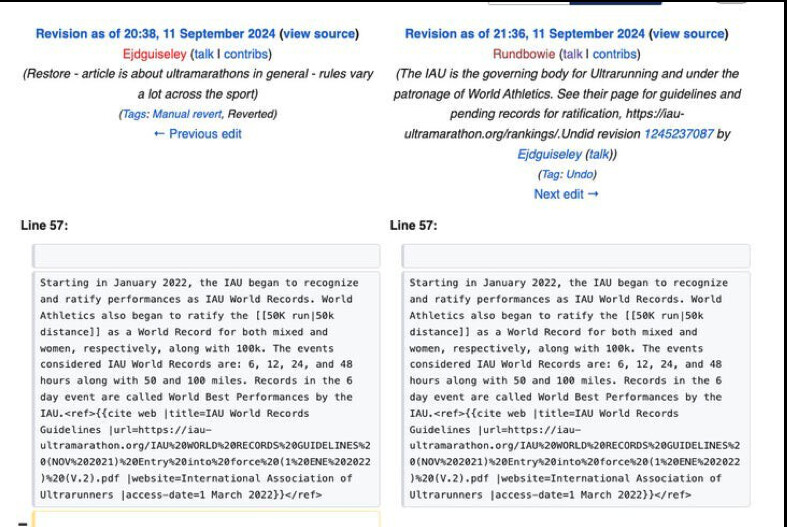
“Camille had nothing to do with this,” Holt wrote in an email sent to Outside and several running media websites. “I’m 100 percent responsible and apologize [to] any athletes affected by this and the wrong I did.”
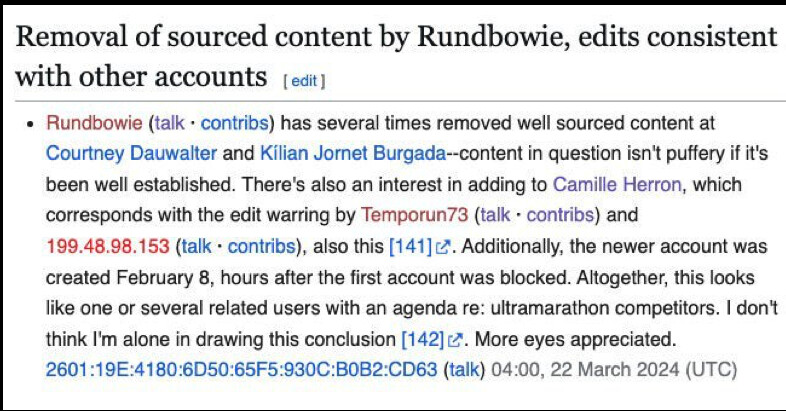
The confession brought some clarity to an Internet mystery that embroiled the running community for several days and sparked a flurry of chatter on social media and running forums. Herron, 42, is one of the most visible ultrarunners in the sport, and over the years she has won South Africa’s Comrades Marathon and also held world records in several different events, including the 48-hour and six-day durations. But the Wikipedia controversy led to swift consequences for Herron—her major sponsor, Lululemon, parted ways with her on Thursday morning.
The entire ordeal sprung from an investigation led by a Canadian journalist who spent more than a week following digital breadcrumbs on dark corners of
Marley Dickinson, a reporter for the website Canadian Running, began looking into the Wikipedia controversy in mid-September after receiving a tip from someone in the running community. The tipster told Dickinson, 29, that someone was attempting to delete important data from the Wikipedia entry for “Ultramarathon.”
The person had erased the accomplishments of a Danish runner named Stine Rex, who in 2024 broke two long-distance running records—the six-day and 48-hour marks—which were previously held by Herron. At the time, the sport’s governing body, the International Association of Ultrarunners, was deciding whether or not to honor Rex’s six-day record of 567 miles.
“The person making the edits said the IAU had made a decision on the record, even though they hadn’t yet,” Dickinson told me. “Whoever was doing it really wanted to get Rex’s run off of Wikipedia.”
Wikipedia allows anonymous users to edit entries, but it logs these changes in a public forum and shows which user accounts made them. After an edit is made, a team of volunteer moderators, known as Wikipedians, examines the changes and then decides whether or not to publish them. The site requires content to be verifiable through published and reliable sources, and it asks that information be presented in a neutral manner, without opinion or bias. The site can warn or even suspend a user for making edits that do not adhere to these standards.
Dickinson, who worked in database marketing at Thomson Reuters before joining Canadian Running, was intrigued by the bizarre edits. “I’ve always been into looking at the backend of websites,” he told me. “There’s usually a way you can tie an account back to a person.”
The editor in question used the name “Rundbowie,” and Dickinson saw that the account had also made numerous changes to Herron’s biography. Most of these edits were to insert glowing comments into the text. “I thought whoever this person is, they are a big fan of Camille Herron,” Dickinson said.
Rundbowie was prolific on Wikipedia, and made frequent tweaks and updates to other biographies. The account had removed language from the pages of Jornet and Dauwalter—specifically deleting the text “widely regarded as one of the greatest ultramarathon runners of all time.” Rundbowie had then attempted to add this exact language to Herron’s page. Both attempts were eventually denied by Wikipedians.
After examining the edits, Dickinson began to suspect that Rundbowie was operated by either Herron or Holt. Further digital sleuthing bolstered this opinion. He saw that the Rundbowie account, which made almost daily edits between February and April, abruptly went silent between March 6-12. Those dates corresponded with Herron’s world-record run in a six-day race put on by Lululemon in California.
But Dickinson wasn’t done with his detective work. He saw that in March, Wikipedia had warned Rundbowie on its public Incident Report page. The reason
A final Internet deep dive convinced Dickinson that he was on the right track. The IP address—a string of characters associated with a given computer—placed Temporun73 in Oklahoma, which is where Herron and Holt live. Then, on a forum page for Oregon State University, which is where Herron attended graduate school, Dickinson found an old Yahoo email address used by Herron. The email name: Temporun73.
“To me, this was a clear sign that it was either Conor or Camille” Dickinson said.
Dickinson published his story to Canadian Running on Monday, September 23. The piece included screenshots of Wikipedia edits as well as Dickinson’s trail to Herron and Holt. It started off a flurry of online reactions.
A thread on the running forum LetsRun generated 360 comments, and several hundred more appeared on the Reddit communities for trail running and ultrarunning. Film My Run, a British YouTube site, uploaded an immediate reaction video the following day. Within 12 hours, more than a hundred people shared their thoughts in the comments section.
It’s understandable why. Lauded for her accolades in ultra-distance races, Herron is also one of the most visible ultrarunners on the planet. She gives frequent interviews, and has been an outspoken advocate for the anti-doping movement, for smart and responsible training habits, and for the advancement of women runners.
“I think we’re going to continue to see barriers being broken and bars raised. I want to see how close I can get to the men’s world records, or even exceed a men’s world record,” she told Outside Run in 2023.
Herron has also spoken and written about her own mental health. Earlier this year, she began writing and giving interviews about her recent diagnosis with Autism and ADHD.
“Although I knew little about autism before seeking out a diagnosis, my husband, who observed my daily quirks and often reminded me to eat, drink, and go to bed, would jokingly speculate that I might be autistic,” she told writer Sandra Rose Salathe on the website FloSpace in July.
Dickinson told me he had a very positive image of Herron from his short time at Canadian Running. He joined the website in 2021.
“She’s always been super nice and welcoming,” Dickinson said.
Dickinson says he reached out to Herron and Holt via email and social media, but did not receive a reply. On Monday afternoon, a user on the social media platform X asked Herron about the story. “It’s made up,” Herron’s account replied. “Someone has an ax to grind and is bullying and harassing me.”
Herron’s social media accounts were deactivated shortly afterward—Holt later said he took them down.
Some online commenters questioned if the story was legitimate—something I did too, initially. Following Dickinson’s arcane trail through Wikipedia’s backend required a careful read, and a strong knowledge of the encyclopedia’s rules and regulations.
After speaking to Dickinson, I sent my notes to a Wikipedia expert named Rhiannon Ruff, who operates a digital consulting firm called Lumino that helps clients navigate the online encyclopedia. Ruff examined the story as well as the Wikipedia histories of Rundbowie and Temporun 73, and said that the evidence strongly suggested that both accounts were operated by the same person. But, since Wikipedia allows for anonymity, you cannot make the connection with 100 percent certainty.
Ruff pointed out that Wikipedia’s internal editors strongly believed the two accounts had a biased with Herron, because the accounts had attempted to write in the same sentence. “Both tried to add details about her crediting the influence of her father and grandfather, and how she runs with a smile,” Ruff said.
Ruff also pointed me to the prolific editing history of Temporun73. Started in 2016, the account had made approximately 250 edits to
“I never got a chance to say anything to the Canadian Running website before they published it,” Holt wrote.
Holt admitted that he was the operator of the Temporun73 and Rundbowie accounts. But he said his Wikipedia editing was aimed at combating online bullies who had removed biographical details from Herron’s Wikipedia page in the past.
“I kept adding back in the details, and then they blocked my account in early February of this year,” Holt wrote. “Nothing was out of line with what other athletes have on their pages. Wikipedia allows the creation of another account, so I created a new account Rundbowie. I was going off what other athletes had on their pages using the username Rundbowie and copying/pasting this info.”
“I was only trying to protect Camille from the constant bullying, harassment and accusations she has endured in her running career, which has severely impacted her mental health,” he added. “So much to the point that she has sought professional mental health help.”
Outside asked Holt via email to provide further details, but we did not receive a response. In an email to Canadian Running, Holt said he was focused on Herron’s upcoming race, and would not be conducting interviews.
But the fallout from the admission came quickly. On Thursday morning Dickinson broke more news: apparel brand Lululemon, which has backed Herron since 2023, had ended its partnership. In a statement provided to several outlets, the brand said it was dedicated “to equitable competition in sport for all,” and that it sought
by Outside Online
Login to leave a comment
Western States unveils new anti-doping policy
The legendary 100-mile race has partnered with the U.S. Anti-Doping Agency as part of an "ongoing commitment to clean sport".
On Tuesday, Western States Endurance Run (WSER) revealed a new partnership with the U.S. Anti-Doping Agency (USADA), unrolling new regulations around anti-doping and reaffirming the race’s “continuing commitment to clean sport,” as their website explains. Here’s what you need to know.
While WSER has for years had drug testing in place, the previous policies were not as stringent (and were not governed by USADA). For some runners eager to toe the line in Auburn, Calif., on June 29, the rules and expectations around testing are now more clearly laid out; others have more questions and are requesting further clarification.

Entry rules
WSER’s entry rules explain that athletes found guilty of doping offenses by governing bodies like WADA or USADA are barred from participating in WSER during their period of ineligibility. Additionally, any athlete subjected to a ban of three months or more is ineligible unless otherwise approved by WSER. Previously, athletes who had any infractions against the WADA code were banned for life from participating in WSER—but, as ultrarunning world champ Camille Herron explains on X, the new policy allows for “more leniency of entry for those who were given a warning/1-2 month ban.”

Levelling the playing field
WSER will be taking testing seriously and targeting elite athletes and top age-group competitors for post-race urine and/or blood testing. Sample collection and analysis will be handled by USADA, ensuring a thorough and transparent process. USADA will also be responsible for results management, including communicating with athletes regarding test results, investigating violations and imposing sanctions as necessary. WSER also reserves the right to impose its own sanctions.
Prohibited substances
WSER strictly adheres to the WADA (World Anti Doping Agency) Code, prohibiting the use of substances on the WADA Prohibited List. Athletes are responsible for knowing and complying with these rules. The WSER website provides resources to help athletes check their medications and suggests that runners be extremely cautious when using supplements.
Athlete response
The updated drug policies have garnered some positive responses on social media, while some athletes, such as Canadian pro mountaineer and ultrarunner Adam Campbell, are asking for further explanation.
WSER has a partnership with trail running giant UTMB, and while NSAIDs (nonsteroidal anti-inflammatory drugs, including aspirin and ibuprofen) are, notably, banned at all UTMB races, runners at WSER would not be tested for them under these new guidelines.
“The issue is the terms are not clearly defined,” Campbell posted on X. “Strong stances usually demand greater clarity. If UTMB sanctioned someone for a doping violation how would WSER handle it? Their possible violations do not necessarily sync with WADA—seems like a reasonable question to clarify.” At the time of publication, the race had not yet responded.
The 2024 edition of WSER will take place on June 29-30.
by Keeley Milne
Login to leave a comment
Western States 100
The Western States ® 100-Mile Endurance Run is the world’s oldest and most prestigious 100-mile trail race. Starting in Squaw Valley, California near the site of the 1960 Winter Olympics and ending 100.2 miles later in Auburn, California, Western States, in the decades since its inception in 1974, has come to represent one of the ultimate endurance tests in the...
more...30 Hours at Javelina Jundred, the Burning Man of Trail Running
Inside the spectacle of ultrarunning’s most festive top-tier 100-mile race
It’s a hot, sunny Saturday afternoon in the desert northeast of Phoenix, and Lindsay DesRochers is being chased by a dinosaur—as if 85-degree heat, a creaky left knee, and a hot spot on her right big toe aren’t enough to worry about during her first attempt at running 100 miles.
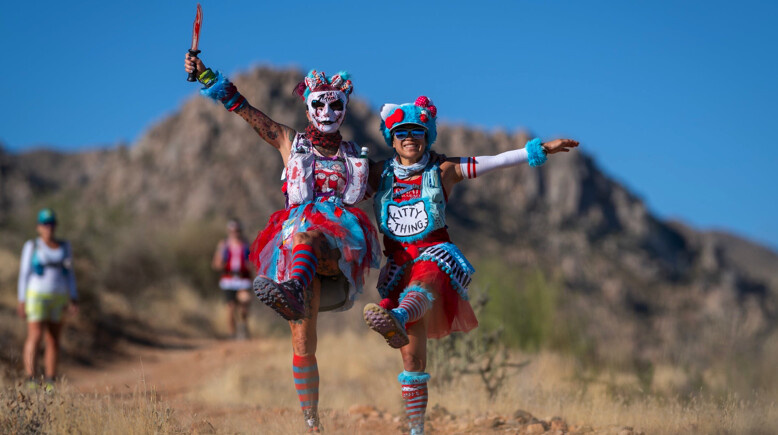

The 44-year-old senior creative recruiter from Scottsdale is 41 miles into the Javelina Jundred, and she also has to contend with a Tyrannosaurus rex who’s making her giggle. The dinosaur is, in fact, local trail running legend, Jerry Bloom, who is sweating and gasping for air inside an inflatable costume that’s kept afloat with a tiny battery-operated fan. He is dressed up as the dino-in-residence and runs alongside DesRochers briefly as she finishes the second loop of the five-lap course before sitting down to refuel and rehydrate in her crew tent.
“The problem with this thing isn’t the heat. It’s just that there’s no oxygen in here. If you run very far, you get oxygen deprivation,” says Bloom, 70, a three-time Western States and Hardrock 100 finisher who’s also run Javelina twice. “For me it’s all in good fun to support Lindsay. I’ve given up trying to be fast a long time ago. But what I’ve learned is that it’s not how far you go and it’s not how fast you go, it’s how you look while you’re doing it.”
Welcome to the Javelina Jundred—the biggest, wildest party in the trail running world.
It’s pretty obvious that the Javelina Jundred is the zaniest event in trail running and, to be frank, nothing even comes close to this dusty desert cavalcade of curiosities. It’s not quite the Burning Man of running, but it might just be better because, first and foremost, it’s a legit ultrarunning event.
More than 850 enthusiastic runners toed the starting line at 6 A.M. to begin the five-lap 100-miler, and about 400 more began the three-lap 100K an hour later. There’s also a single-loop, 19-mile nighttime race called the Jackass Night Trail for about 200 runners that includes a wild DJ’ed party at the Jackass Junction aid station and finishes as the Saturday night revelry is still going strong back at the race compound.
But because Javelina always happens on the weekend before Halloween, there’s a natural party vibe and a non-mandatory-yet-compelling reason for runners, pacers, and support crew to wear costumes. And, let’s face it, Halloween gives everyone license to fly their freak flag, so when you mix that with ultrarunning, just about anything goes. Only here it’s known as Jalloween.
This year’s most popular dress-up themes seem to be tropical and western, but, almost predictably, there are quite a few Barbie and Taylor Swift cosplayers, as well as a few heavy metal rock stars, glow-in-the-dark skeletons, and several very creepy clowns. Dozens more runners race through the desert wearing bunny ears, fox tails, and devil horns.
“This is a safe space for everyone to have fun in their own unique way,” adds Dan Gampon, a Hoka sports marketing representative from Hawaii. “It’s a fun way to give the people a chance to be weird and bring a part of themselves that they might have been wanting to bring out, and give them the opportunity just to have fun anyway they want to.”
Some crew tents are decorated with accouterments to match a particular theme, but most feature colorful holiday twinkle lights, camping chairs, sleeping bags, and coolers full of adult beverages. While there’s a stash of fancy engineered nutrition supplements and electrolyte drinks in every tent, there’s also the widest range of healthy and not-so-healthy snack food you can imagine. (I’m looking at you, guy simultaneously drinking a Red Bull and eating a handful of marshmallow Peeps.)
The Javelina staff and volunteers are fully into the Jalloween theme, too, especially race director Jubilee Paige, who dons several costumes during the 30-hour event—including getups she calls Race Director Barbie, Weird Barbie, The Dude, Cousin Eddie, Chef’s Kiss, and A Macaroni Penguin. She once again ends the event dressed as the Pope—a.k.a., “her Joliness”—because she considers Sunday “Jallelujah Javelina,” a day of celebration.
The Javelina Jundred was founded in 2003 by Phoenix ultrarunner Geri Kilgariff as an irreverent, party-oriented run on a multi-loop course, and gradually gained regional and then national popularity as word spread through the ultrarunning community about how much fun it was. Local ultrarunner Jamil Coury took over as race director in 2008. The next year he started Aravaipa Running, a Phoenix-based company that bought and now owns 75 other running events in Arizona, Colorado, Utah, Nevada, and New Hampshire.
Despite increased popularity and significant growth, Coury, Paige, and the rest of the Aravaipa crew have been able to maintain Javelina’s grassroots experience while growing it to about 1,500 runners in three events with at least that many pacers, crew, and family members hanging around the race compound. In many ways, it represents the best of both where trail running has been, but also where it could be heading.
“The race was born from a fun spirit of running with friends and looping in the desert—shout-out to Geri Kilgariff for her creation of the event in 2003,” Paige says. “But as it’s evolved, we saw opportunities to elevate the race to an ‘event’ experience for runners and crews—an ultra festival—the music and lights and entertainment just enhances that experience. However you experience Javelina, I just want you to have fun!”
As the sun begins to set, several top competitors in the 100-miler are scattered out on the remote sections of the course in hot pursuit of four Golden Ticket entries into next summer’s Western States 100. (Two tickets each for the men’s and women’s races.) That includes Boulder, Colorado, runner Jonathan Rea, who is back after a second-place finish a year ago, and—with newfound confidence from a fourth-place finish at the CCC 100K in Chamonix, France—is tearing up the desert trails on course-record pace. Triathlete-turned-ultrarunner Heather Jackson, who splits time between Bend, Oregon, and Tucson, Arizona, also takes it out hot, hoping to make up for a frustrating fifth-lap fade last year after unbearable quad pain reduced her to a walk and forced her to settle for a fifth-place finish in her 100-mile debut.
Earlier in the day, Denver’s Rajpaul Pannu and San Francisco’s Anna Kacius made quick work of the less-competitive, three-lap 100K race, finishing first and second overall, respectively, and setting new men’s (7:15:53) and women’s (8:13:07) course records in the process, while winning by more than an hour over their nearest competitors.
Ultrarunning GOAT Courtney Dauwalter from Leadville, Colorado, is out there, too, but she’s not racing for the win. She’s running the 100K with her mom, Tracy, a 66-year-old avid trail runner from Edina, Minnesota. They attempted a 50-miler in Minnesota last fall, but were timed out before the finish, so this year they chose the big party race in the desert where Courtney set a course record in 2016 before she became a household name. They’re not in costumes, but they’re running as Team Bucket List and wearing matching white shirts, cactus-themed socks, and olive-green-and-black shorts.
Because runners constantly revolve through the turnaround point at the start/finish area, everyone else is always on the move throughout the race compound. Some are drinking craft beers and mingling as they wait for their runners, while others are watching the race livestream on their phones or from the jumbotron in the Javelina Jeadquarters circus tent. Still others are devouring freshly cooked artisan pizzas made to order in the Freak Brothers Pizza mobile brick wood-fired oven.
Rousing cheers and applause catch everyone’s attention every few moments as an elite runner arrives—including the ever-smiling Jackson, who quickly heads out on her fifth and final lap with a 30-minute lead in the women’s 100-miler.
“Heather is just amazing,” says Troy Brown, 48, a trail runner from Coto de Caza, California. “She’s always smiling. I’m just a fanboy, but I like anyone who can smile that much through pain.”
After Jackson runs out of sight, Brown quickly shifts his focus to getting his feet into an inflatable T-Rex costume so he can participate in the costume contest, an informal event that brings out a sheriff riding an inflatable rooster, Minnie Mouse, a foursome of Teletubbies and, of course, several dinosaurs. There’s also a guy dressed as Aladdin wearing a large golden lamp around his waist who is joined by a scantily clad Jasmine character who not-so-discreetly rubs the lamp in a Not Suitable for Work (NSFW) scene that draws both raucous laughs and shocked gasps from the crowd.
One of the best dressed-up groups of the event is a foursome of women from California’s Healdsburg Running Company: Dominique Chevalier (“Western Barbie”), Krista Kappus (“Alien Barbie”), Saddie Alloway (“Rootin’ Tootin’ Diva Barbie”), and Susan Oh (“Disco Bob Ross”). But the costume contest winners are the Montana Mermaids, a bikini-and-grass-skirt trio from Bozeman—Lena Romeo, Kara Haskell, and Liv Bleskin—who were there to crew and support elite runners Rachael Norfleet of Montana in the 100K and Utah’s Ryan Montgomery in the 100-miler.
The sun begins to set, but the party’s just getting started as DJ Colter Stillwell pumps tracks through the sound system as a full moon rises in the eastern sky. One of the rowdiest dancers is Brendan O’Hara, a Colorado trail runner who’s dressed up in a red-and-white mouse outfit with flashing lights similar to what popular Canadian electronic musician Deadmau5 wears on stage. As lots of energized runners entered in the Jackass race are about to head out into the night, two professional fire dancers perform a mesmerizing routine adjacent to the start line.
Just after dark, Rea comes flying into the finish area, stopping just short of the finish line to pantomime deadlifting a colossal barbell before crossing the line in a new course record of 12:43:10. Seattle runner Blake Slattengren stopped the clock next in 12:58:07 to claim the second Golden Ticket, while Montgomery ran another strong race to take the final podium spot in 13:01:14.
Redeeming herself from last year, Jackson finishes strong to win the women’s race and finish sixth overall, thanks in part to the aggressive pacing of Devon Yanko. Jackson’s time of 14:24:47 is the second-fastest women’s time ever behind Camille Herron’s 14:03:23 course record from 2021. Spain’s Ragna Debats (14:55:27) outran Riley Brady (15:29:17) to earn the second women’s Golden Ticket.
Not long after midnight, the Dauwalters finish, too. Covered in dust, sweat, and even a little bit of blood—Tracy took a tumble on the first lap early the previous morning—they cross the finish line after 17 hours of running with big smiles and hug in a classic mother-daughter moment. Late Sunday morning, DesRochers makes it to the finish line, too, in 27:31:41, battling hard to overcome dehydration, an upset stomach, and nagging hip flexor pain at various points during the race.
“I was prepared for it to be hard, and I knew I was going to hurt. At some point, I was like, Oh, right, this is what running 100 miles feels like,” DesRochers says. “It was difficult, but I kept my positive mental attitude the whole way. I have a buddy who has a saying, ‘Forward is a pace,’ so I kept repeating that and kept putting one foot in front of the other and I didn’t quit.”
Something that’s especially apparent at Javelina is that everyone is celebrated as an equal, regardless of finishing times, trail running experience, athletic ability, age, or any other dissimilar details. The event goes out of its way to create an environment that promotes visibility and inclusion for everyone, and the community of participants seems to embrace it by cheering and encouraging for everyone the same.
It has partnered with Native Women Running, Latinos Run, and Black Men Run each of the past several years to bring their runners to the race, and it was also one of the first ultra events to offer a non-binary category. This year there were six non-binary runners racing over its three races, led by Willow Dolde in the 100-miler (20:01:29), Andreas Anderson in the 100K (13:54:30), and Tasha Hartwig in the Jackass 31K (6:42:07). (Although Brady, a non-binary runner from Boulder, was competing in the women’s division because they were racing for a Golden Ticket, they were also, unofficially, the top non-binary runner in the race.)
As the golden hour comes and goes early Sunday afternoon—and final finishers Holly Sitzmann, Jim Buckley, Brittany Edmiston, and Leslie Astle squeeze under the 30-hour cutoff with help from their pacers and crew—it’s clear that everyone at Javelina is celebrated equally and enthusiastically. That also includes two unofficial finishers—Rayna Rodriguez and Tatiana Orozco—who complete the 100-mile course just outside of the time cutoff, but are welcomed by a scream tunnel of remaining spectators and the adulation of Paige even though neither will receive a finisher’s buckle.
“Javelina is a celebration, and the invitation to run and participate at Javelina extends to everyone,” Paige says. “I want to ultimately show how amazing the community is and that this sport is for everybody and every body—the spirit of ultra is diverse and should be celebrated.”
by Outside online
Login to leave a comment
Armed with Smarts and Science, Camille Herron Sets an Astounding Record in Greece
The American ultrarunner credits patience and reduced carbohydrate intake to helping her smash the women’s course record in the Spartathlon, the iconic 153-mile race from Athens to Sparta
Camille Herron continues up to her usual record-breaking ways, smashing the women’s record at the 40th edition of the daunting Spartathlon ultra-distance running event in Greece on October 2.

Herron, a 41-year-old Lululemon-sponsored runner from Warr Acres, Oklahoma, covered the 153-mile course in 22 hours, 35 minutes and 30 seconds. She shaved more than two hours off the previous record and became the first woman to finish the course in under 24 hours in the 40-year history of the race.
Spartathlon was created in 1983 to send runners on a journey following the ancient route of Pheidippides, a courier who ran the distance between Athens and Sparta to seek military aid during a battle against the Persians in 490 B.C.. The modern-day race route includes flat roads and mountainous trails with more than 10,000 feet of elevation gain.
Incredibly, Herron averaged 8:55 mile pace, with her fastest mile clocking in at 6:28 (for the seventh mile).
“Wow, it was so much fun because we were running in the footsteps of Phidippides,” Herron says. “The whole time I was running, I was just trying to imagine what he did running on those ancient roads and paths. It’s a little different nowadays having cars and like all these things we have to dodge along the way. But it was incredible. I just loved the whole day because I love both road running and trail running and the course had big sections of each. To have a race that combined all of that, the process in my mind was all about a journey to a destination.”
Greek runner Fotis Zisimopoulos was the overall winner in 19:55:09, a new course record that broke the longstanding mark of 20:25:00 by ultrarunning legend Yiannis Kouros in 1984. Herron finished third overall behind Zisimopoulos and Norway’s Simen Holvik (22:35:31) and shattered the women’s record of 24:48:18 set by Poland’s Patrycja Bereznowska in 2018.
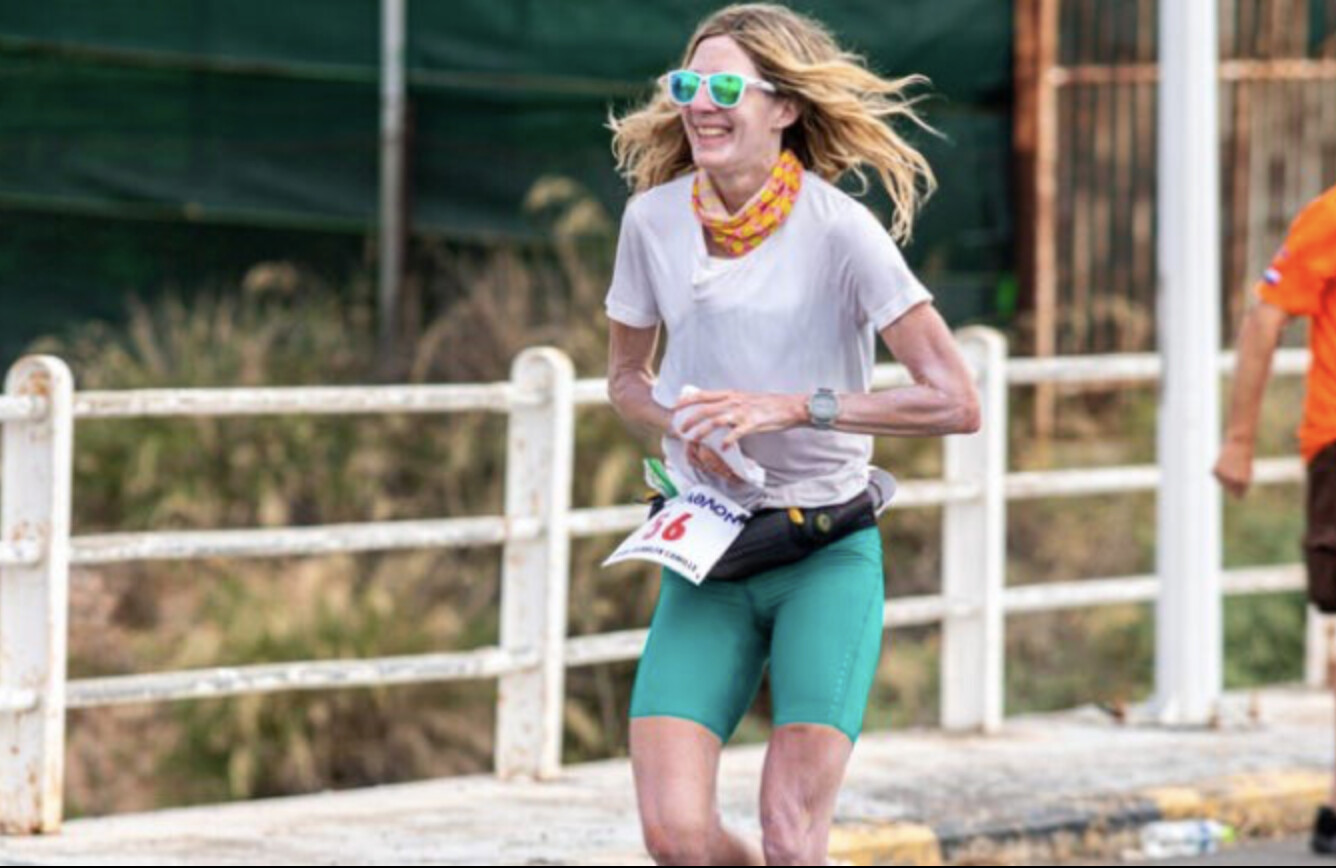
The Spartathlon course starts with a fast urban road section between Athens and Corinth—where dodging vehicles, traffic and pedestrians is necessary—before transitioning onto trails and meandering through vineyards and orchards before eventually going into the Geraneia Mountains. The final section of the course consists of downhill and flat road sections that lead to Sparta.
As she’s known to do, Herron started fast. But she was surprised to have five other women running seven-minute mile pace alongside her. She made a judgment call to slow down a bit, knowing she had a lot of running ahead of her and needed to save her legs.
“In my mind I’m thinking, ‘This is way too fast,’” Herron says. “I was worried we weren’t going to have our legs under us to hit the mountain section. So I ended up just backing off and let all of these women go. They were just hammering it. I was like, ‘Whoa, this is crazy!’ But at the same time, I was inspired by the other women in the race that they had the courage and the strength to go for it. I was like, ‘Hey, you go girl.’”
Finland’s Noora Honkala and Satu Lipiäinen were at the front, followed by Hungary’s Szvetlana Zétényi, Switzerland’s Stine Rex and Germany’s Sarah Mangler. They all wound up building 10- to 30-minute gaps on Herron. But when they entered the trail section with significant climbing, Herron tapped into her uphill abilities and started closing the deficits to the other women. Once back on the roads, she snapped back into her quintessential quick stride turnover and quickly made up the 12-minute gap to pass Lipiäinen, the second-place woman.
Out front, Honkala ran fast and pushed the pace the whole day. When she entered the mountain phase of the race, she had a 26-minute gap on Herron. But Herron’s relatively strong trail and downhill running abilities paid huge dividends, and with 20 more miles to go, she caught and passed Honkala. Herron surged the rest of the way, ultimately building a gap of more than 50 minutes on Honkala (23:23:03). Lipiäinen finished third (23:48:34), followed by Zétényi (27:57:49) and Rex (28:18:35) in what was the most competitive women’s race in the history of the event.
Herron continues to improve with age, especially in longer events. In February, she set multiple masters world records and U.S. records at the Raven 24-Hour race in South Carolina, running 150.43K (93.47 miles) in 12 hours, and then crossing the 100-mile mark in 12:52:50.
Then in March, Herron set a new women’s world record after logging 435.336K (or 270.505 miles) in 48 hours at the Sri Chinmoy 48-Hour Festival in Canberra, Australia. That mark not only broke the existing women’s 48-hour world record of 411.458K (255.668 miles) set by U.K. runner Joasia Zakrzewski, but it also surpassed the all-time American record of 421.939K (262.181 miles) previously set by Olivier LeBlond in 2017. In surpassing LeBlond’s mark, Herron became the first female runner ever to hold an overall American record at any distance.
Herron credits her recent testing with Trent Stellingwerff, the Director of Innovation and Research at the Canadian Sports Institute, for helping discover that Herron has a high VO2 max and produces a naturally high fat oxidation rate when she’s running long distances. Herron underwent that testing as part of Lululemon’s FURTHER initiative, which is backing scientific studies for women as a means to better understand women’s sports performance.
Working with her dietician, Herron used that knowledge to cut back on her carbohydrate intake during Spartathlon to less than 50 grams per hour, down from the 60 to 75 grams per hour that she had been consuming in events earlier this year and in prior years.
Her main source of fueling? Aside from taking a gel every hour, she consumed sections of honey and salt sandwiches that her husband and coach, Conor Holt, served her at aid stations.
“Those changes were life-changing,” Herron says. “I mean, you hear about athletes in marathons and shorter races that are trying to increase carbohydrate intake. But we learned my body is naturally wired for fat oxidation, so I ended up backing off my carbohydrate intake and it made me feel better. It just paid off later in the race. I wasn’t having the gut problems I’ve had in the past, so I was able to just run like a ‘Steady Freddie’ and perform better. It just shows the longer I go, the stronger I am, and I’m able to really show what my natural physiology is capable of beyond a hundred miles.”
Colt said Herron’s training also played a key role in her success. She put in significant mileage during stints in Oregon, Colorado, and Oklahoma during the summer and then arrived in Greece a week before the race so she could run the course over several days.
“We did our homework and we did the training and she was ready,” Colt says. “She’s got a few more good, good ones in her, I think.”
Herron dedicated her performance to German ultrarunner and friend Nele Alder-Baerens, who is suffering from Amyotrophic lateral sclerosis (ALS) and can no longer compete. She said she’s inspired by women like Alder-Baerens, who holds the world record for running 85.492K (53.1 miles) in six hours.
She’s grateful for the opportunities Lululemon is providing and is excited to see what continued sports science testing with the Canadian Sports Institute will reveal, especially as it relates to adapting to training and racing through perimenopause.
“It’s important for the general visibility of women and showing what happens when a brand really gets behind women,” Herron says. “Most sports science is based on men, but we’re studying women. I mean, we’re making it happen. The support from Lululemon has just been incredible. And it just goes to show what happens when women are supported in sports. It feels like there’s no ceiling.”
by Outside Online
Login to leave a comment
He Qualified for Team USA. Then Came the Bill.
Even as trail and ultrarunning explode, the spoils of professionalization aren’t spread equally across the sport. Athletes on this year’s U.S. 24-hour team are looking to change that
Scott Traer qualified for his first U.S. national team more than a decade ago in 2012. He was new to the sport and naive about what it took to compete at the international level—even after being selected as one of the country’s best athletes in the 24-hour discipline, a niche tributary of trail and ultrarunning where athletes complete as many laps around a track as possible within 24 hours.
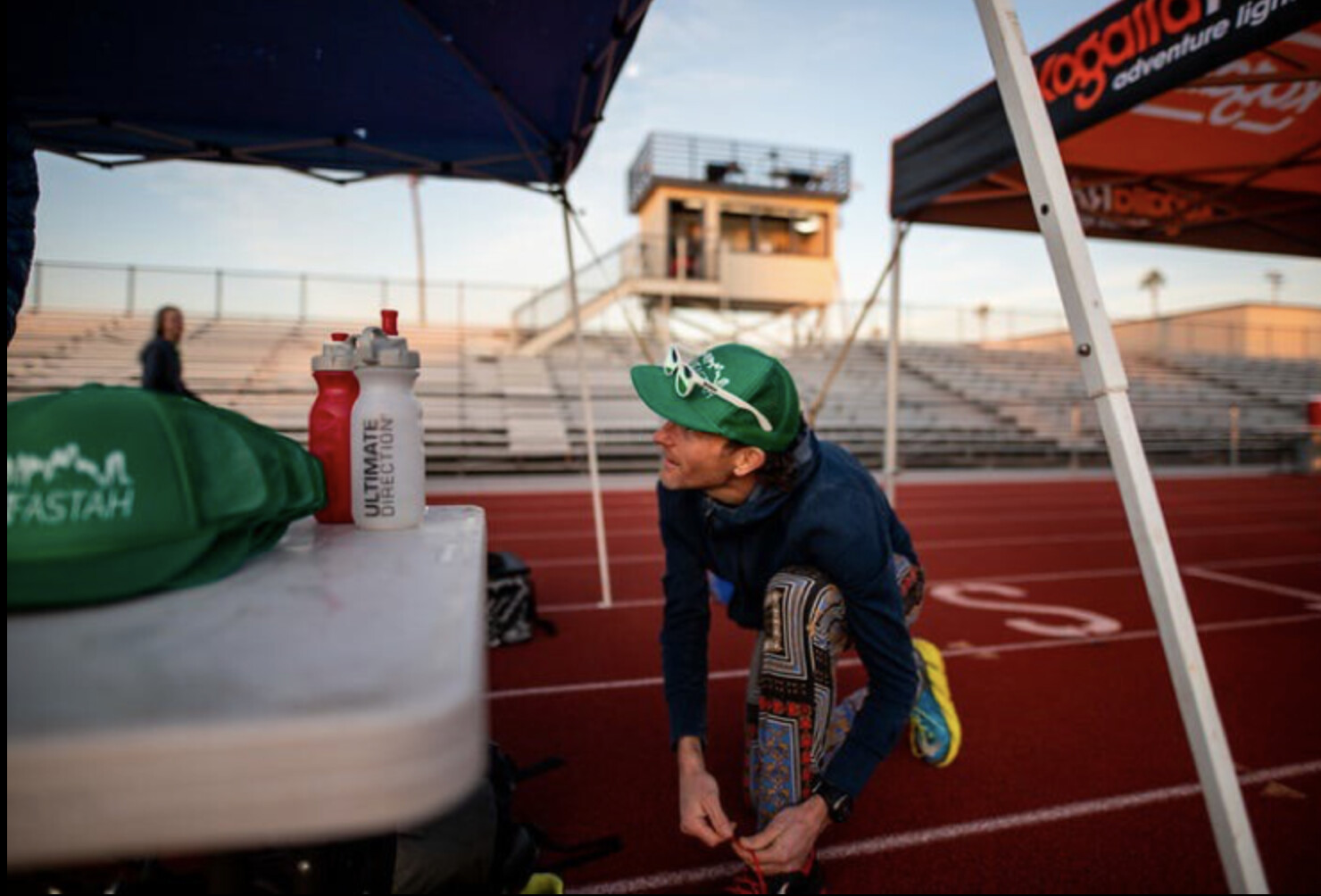
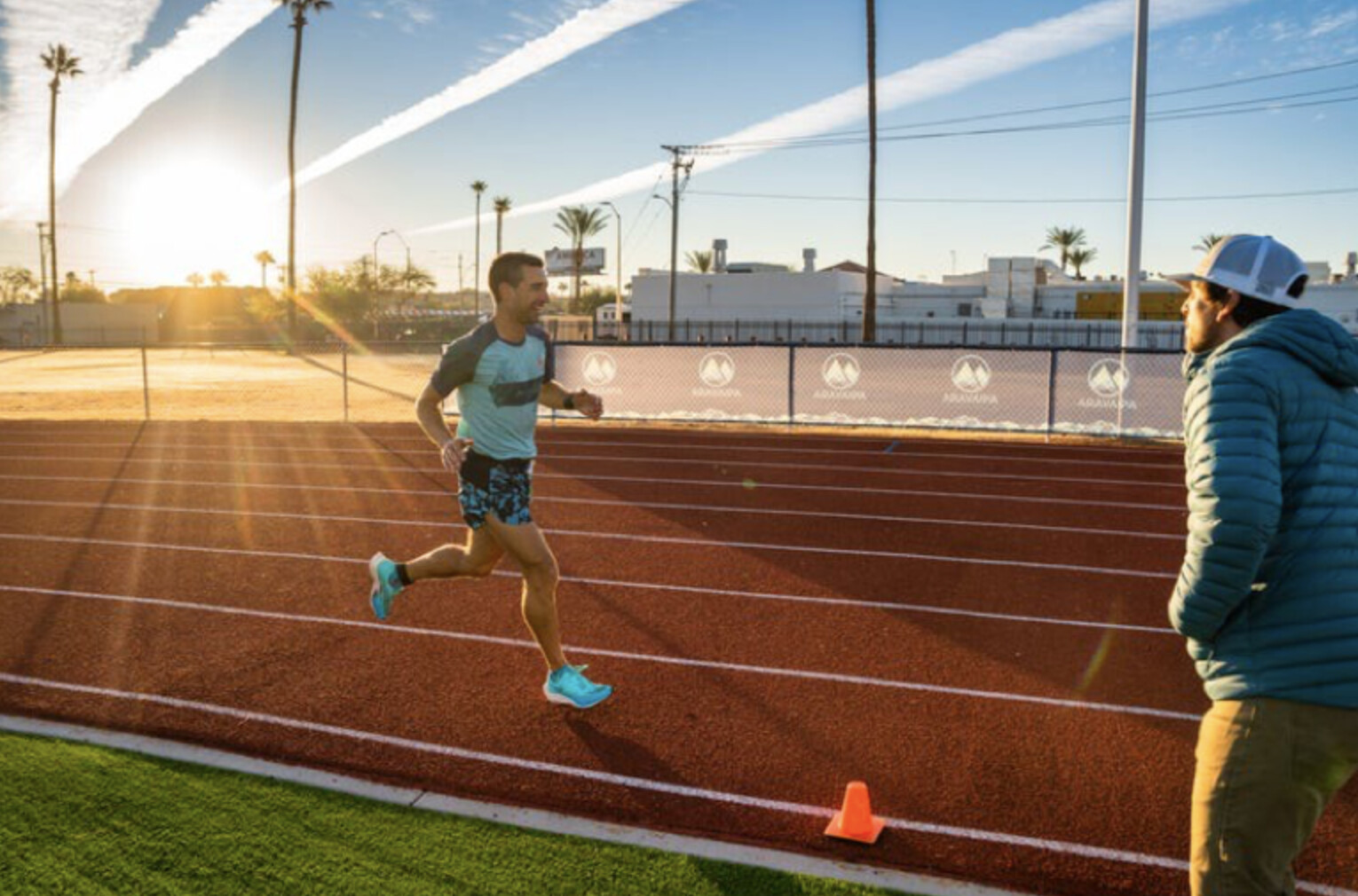
While the 24-hour race format may seem eccentric, well-known names like Courtney Dauwalter, Kilian Jornet, and Camille Heron have dabbled in the ultra-track scene. International governing bodies regulate the discipline with USA Track & Field (USATF), the national governing body for track and field, cross country, road running, race walking, and mountain-ultra-trail (MUT) disciplines, overseeing the American contingent.
Traer, then 31, was working odd construction jobs in and around Boston to make ends meet while training when he got the call from USATF that he had been selected for Team USA.
“I was really excited,” says Traer. “Then, I found out that I had to pay for everything. So I was like, ‘Forget about it.’”
That financial reality took the wind out of Traer’s sails. He didn’t have the disposable income to foot the bill for international travel and didn’t have paid time off from his jobs. While he was disappointed that he wouldn’t get to represent his country in 2012, he was still determined to pursue his dream of chasing a career in coaching and racing.
Now, Traer, 42, is a full-time coach living near Phoenix and working with the Arizona-based event organization Aravaipa Running as an assistant race director. He has earned top accolades in the sport, including a course record at the Javelina 100K and a Golden Ticket to Western States at the Black Canyons 100K, eventually leading to a top-ten finish at the Western States Endurance Run.
True to his blue-collar roots, he is known for racing in unbranded gear, typically a long-sleeve, white SPF shirt unbuttoned and flapping in time with his stride. Ten years after making his first 24-hour team, he re-qualified for the opportunity to compete for the U.S. again, this time for the 2023 IAU 24-Hour World Championships in Taiwan (which international sports federating bodies officially refer to as Chinese Taipei), on December 2.
The catch: USATF is only providing a stipend of $600 to Team USA athletes.
Oregon ultrarunner Pam Smith has competed on Team USA seven times in the 24-hour and 100K world championship events. Now, she’s serving as the Team USA manager to help steward the next generation of ultra athletes. But that passion has come at a cost.
“I estimate I’ve spent around $10,000 in personal funds to be able to compete at the world championships and to represent the USA at these events,” says Smith, 49, who finished fourth at the 2019 IAU World Championships in France. “USATF does pay for the manager’s travel expenses, but there is no other compensation; in fact, the managers have to use their own funds to cover some fees, like membership dues and background checks.”
It might surprise fans of the sport that many of their favorite athletes are paying significant money to sport the red, white, and blue uniform—and that many can’t compete because they cannot shoulder the cost. The U.S. is known for strong 24-hour runners, and the men’s and women’s teams both won gold at the previous IAU 24-Hour World Championships in 2019 in Albi, France, with two individual podium spots.
“The U.S. has many of the best 24-hour runners in the world,” says Smith. “It’s a shame that these athletes don’t even get their airfare covered.”
While Smith’s airfare is covered, her work and that of her colleagues is presumed to be done on a volunteer basis. (A quick online search shows a flight to Chinese Taipei from most U.S. cities costs in the $1,500-$2,400 price range.)
Trail running, particularly the elite side of the sport, is at an inflection point. While some races dole out prize money, and a select few athletes at the top of the sport command respectable salaries, most runners at the elite level rely on a scattershot combination of brand partnerships and personal funding to float their racing. While the sport’s very best athletes are well compensated professionals, most “sponsored” trail runners earn between $10,000 and $30,000 per year. Between travel, gear, nutrition, and other expenses, many runners at the elite level are fronting their own cash to compete.
When Chad Lasater qualified for Team USA after a strong run at the Desert Solstice 24-Hour Race, he hadn’t planned on making the team. But, when he found out he’d qualified, he started looking into the logistics and was shocked to discover he’d be responsible for paying his way to Taipei.
“The cost of airfare, lodging, food, and time away from work can be significant, especially when traveling to somewhere like Taipei,” says Lasater, 51, from Sugar Land, Texas. “I feel that everyone should have an equal opportunity to be on the U.S. team, and the cost of traveling to the world championships should not preclude anyone from accepting a spot on the team. We should really be sending our best 24-hour athletes to the world championships, not the best athletes who can afford to travel.”
Teams that rely on individual brands or athletes to foot the bill will prefer runners with sponsorships or disposable income and can afford to take time off work and pay for childcare.
At the top of the sport, like the world championships, it’s routine to see completely unsponsored runners competing with no brand affiliation, especially in the eccentric realm of 24-hour track events. Even some sponsored runners don’t always get their travel expenses covered.
While a world championship event is certainly a big deal, it doesn’t command the same fanfare and media attention as other marquee events, like the Western States Endurance Run or Ultra-Trail du Mont-Blanc, where many brands prefer to focus their resources.
Jeff Colt, a 32-year-old professional ultrarunner for On who lives in Carbondale, Colorado, publicly debated the merits of returning to Western States in California this year or competing in the 2023 World Mountain and Trail Running Championships in Austria in early June. (The trail running world championships and 24-hour world championships are different events, but the Team USA athletes who compete in each one face similar challenges when it comes to funding and market value to brands.) He ultimately decided to claim his Golden Ticket and compete at States. More eyeballs on the event mean a higher return on the investment for running brands, which in turn elevates athletes’ value to their sponsors
“My sponsor, On, was clear that they supported my decision either way, but they were more interested in me running Western States,” says Colt. “And rightfully so. There’s a lot of media attention at races like States and UTMB, which allow brands to activate and get visibility for their logo. That support feels good as an athlete, too. It’s not just better for the brand.”
Nike has an exclusive partnership with USATF; all athletes competing at any world championship event in the mountain-ultra-trail disciplines (as well as the Olympics and World Athletics Championships for track and field and the marathon) must wear Nike-issued Team USA uniforms that are provided to the athletes free of charge, with the exception of shoes. Any photos or videos of professional runners at these events are less valuable to competing running brands because their athletes will appear bedecked in another company’s logo. This disincentivizes many brands from investing in unsponsored athletes’ travel expenses and limits athletes’ ability to get financial support, most of which currently comes from shoe and apparel brands in the trail running industry. And if athletes cannot compete because of illness or injury, they must return parts of the kit. Even if they keep the kit, many sponsored runners’ contracts prohibit them from training and racing in the gear, so it gathers dust at the back of their closets.
Arizona runner Nick Coury, preparing to compete on his third U.S. 24-hour team, says this contract limits the economic opportunities of unsponsored athletes—partially because it disallows an athlete to place another sponsor’s logo on the Nike gear.
“This is especially upsetting to many because Nike provides large sums of money to USATF for this arrangement, yet neither passes through significant support to national teams despite USATF being a nonprofit aimed at ‘driving competitive excellence and popular engagement in our sport,’” says Coury, 35, from Scottsdale, Arizona. “USATF is taking money from Nike, restricting elite athletes to fund themselves through sponsorship, and doing little to nothing to encourage a competitive national team.”
One athlete, sharing anonymously, reported selling parts of their Nike kit to help offset travel expenses. “It’s the same kit [100-meter and 200-meter track and field superstar] Noah Lyles wears, so it’s super valuable.”
Traer thinks it’s unfair that athletes are forced to wear Nike gear and render free labor supporting a huge company, especially when the 24-hour team isn’t fully funded. Lyles, an Adidas athlete who won the 100-meter dash at this year’s World Athletics Championships in Budapest, had to wear Nike gear while warming up and racing, too. But his travel and expenses were paid in full by USATF, and his Adidas relationship benefits because track and field stars get considerably more exposure than ultrarunners. Furthermore, in track and field, the world championships serve as a prelude to the biggest running event on the calendar, the Olympics, which take place every four years and attract an expansive viewership that reaches far beyond hardcore running fans.
“It bothers me because Nike is making a huge amount of money,” Traer says. “I don’t want to hear that there isn’t enough money to support athletes because I see smaller brands in our sport that have less money doing a much better job supporting athletes.”
Nancy Hobbs is the chairperson of the USATF Mountain and Ultra Trail Running Council, the division of USATF that oversees the U.S. 24-Hour Team. Her executive committee has been discussing more equitable distribution of funds. Initially, funding was based on the number of years the championships had been held and how many athletes were attending.
Ultimately though, it comes down to the relatively small amount of Nike money that USATF allocates to the USATF MUT Running Council.
“With a certain amount of money in the budget, we could choose to send fewer athletes (i.e., just a scoring team with no spares in case of injury, etc.), but the council discussion has been on the importance of fielding a full team with some additional athletes for attrition and providing more athletes an opportunity to compete internationally (provided they qualify for the team based on selection criteria),” says Hobbs.
Though the compensation for mountain-ultra-trail athletes may feel low, it is significantly higher than in the past. In 1999, a mere $250 was distributed to each MUT subcommittee, totaling $750 for all 1999 expenses. In 2013, MUT teams received $25,000 in funding for travel. This year, $83,000 was distributed across all of the teams it sends to international championships for MUT disciplines.
“We’ve come a long way with MUT since 1998,” says Hobbs. “We have more work to do. This is a volunteer-driven group which is passionate about our sport and trying to provide athletes opportunities through championships, teams, and programs within the structure of USATF.”
Coury qualified for his third U.S. 24-hour team in 2021 and broke the American 24-hour record. He’s had to fund his travel out of pocket for all three international appearances. He says the lack of funding limits the team’s ability to compete on the world stage.
“I’ve found it extremely challenging to train for a 24-hour event while holding a full-time job, as have others, and I know I haven’t and won’t hit my personal potential as a result,” says Coury. “We’ve seen an explosion in the competitiveness and interest in trail races, and part of that is the ability for ultrarunners to make a living as professional athletes. We see very few runners in the 24-hour space who can go professional, which reflects in our team’s competitiveness.”
While Team USA won both gold medals in 2019, international competition is escalating. Coury says opening up additional funding would help draw elites and strong amateurs alike to try their hand at the 24-hour format, which would help Team USA’s standing on the world stage.
“Athletes like Courtney Dauwalter and Camille Herron have represented Team USA multiple times and been key to our results,” says Coury. “Yet I am certain they must weigh training, qualifying, and representing Team USA against the sponsorship opportunities in trail ultrarunning, where financial support is much greater. I imagine there would be more interest from some of our most capable athletes if we had a better financial story around the team, providing a path for it to fund an athlete’s career instead of costing out of pocket. Given the prospects of making a living at a trail race versus paying to represent Team USA, I’m positive we’re discouraging some of our best athletes from even wanting to try.”
In previous years, Team USA has resorted to raising money through bake sales and selling T-shirts to raise funds for the team’s travel expenses. Past team captain Howard Nippert made and sold ice bandanas to support the team. This year’s captain Smith is hosting fundraising dinners. Coury says that the ultrarunning community has stepped up to support the team where traditional funding has failed.
“It reminds me in some ways of the amateur athlete situation back in the 1970s, where representing your country came at a significant financial burden and really made athletes reconsider it,” says Coury. “Why isn’t USATF making it desirable to train and compete for Team USA? Why is it seemingly doing the opposite?”
The 24-hour team is at a crossroads: either it will receive adequate funding and support to send the best team possible to the world championships, or it will maintain this status quo while Team USA falls further and further behind on the international stage. Traer has launched a petition on Change.org to draw attention to the funding issue and is determined to sound the alarm about how a lack of funding holds athletes and all of Team USA back.
“No one should have to decide that they made Team USA but can’t afford to pay to wear their country’s flag,” says Traer. “If an athlete earns their spot on the team, they should get the support they need to compete. End of story.”
by Outside Online
Login to leave a comment
Camille Herron’s tips to run long and strong
Ultrarunning champion Camille Herron is not only known for crushing some remarkable world records but also for being the youngest person (she’s 41) to be inducted into the 100,000 Lifetime Miles Club (which she was in 2022). The prolific runner has now surpassed 107,000 miles, and stayed healthy and strong while doing so–in the past year alone, she destroyed the world record for 48 hours of running, covering 435.336 kilometers (270.5 miles) around a 400-metre track in Bruce, Australia.
Herron shared some fantastic tips with Canadian Running to keep both body and mind in peak form as you run for decades to come. Her tips are applicable to everyone, whether you are a beginner or already have years of running to build on.

Have a support system
If you plan on running for many years, it’s essential to have some kind of community to help you through struggles, as well as celebrating the good times. Surrounding yourself with positive influences, from your local running groups to online training forums, can be a huge help.
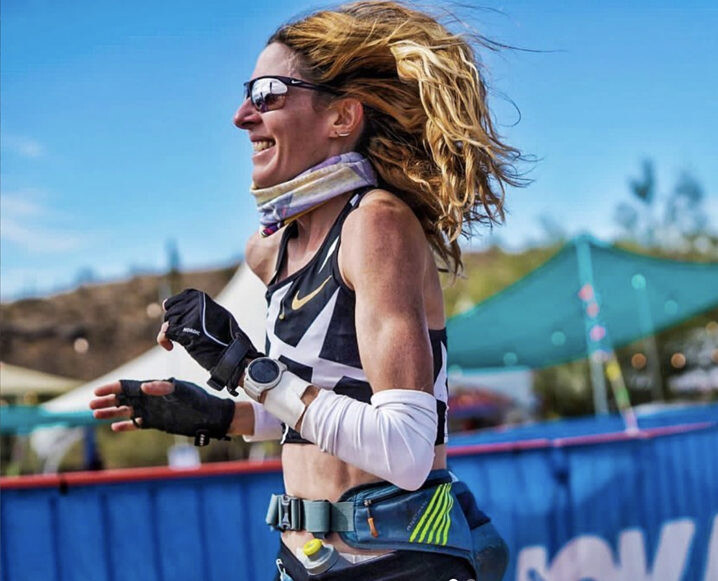
Whether you love to log your mileage alone or enjoy a club atmosphere, it can be helpful to have some people you can count on for support. Herron says “great support and guidance from my husband/coach, sponsors, and everyone around me,” has helped her accomplish her goals.
Keep easy runs easy
Herron explains that she has learned to slow down the pace on easy runs. “I run at 60-70 per cent of heart rate max on easy runs,” she says. If you’ve checked out Herron’s social media, you’ve probably noticed that she always looks like she’s having a blast. She stops to photograph animals and unusual foliage as she runs, and pauses to snack on berries on the trail, taking time to enjoy the process.
Try running twice a day instead of loading your legs all at once
Herron, who has a background in exercise science, often runs twice a day rather than doing a single big training run. She explains that running twice a day is “healthier and more anabolic for musculoskeletal health than long single bouts, and helps maximize aerobic metabolism.” If you’re hoping to add mileage without causing injury, dividing up those runs may be key.
Stay adaptable
Herron says she notices what her body is feeling on any given day or at any point in her life, and is prepared to work with her body and the day in order to stay balanced. “Our bodies change,” she says. “Like right now, I’m a master’s runner and experiencing perimenopause symptoms.” Herron says she stopped taking her longtime oral contraceptive and has focused on stress management to adapt to the changes in her body, and feels immensely better.
Switch up your training to stress your body differently
“I train my body in a variety of ways, with different surfaces, intensities and shoes,” explains Herron. She also participates in both ultrarunning on road or track and trail running. “I’ve raced 400m-48hrs, and I enjoy stepping up, down, and over all types of running,” she says. “It’s all fun and challenging in its own way.”
by Keeley Milne
Login to leave a comment
2024 U.S. Olympic Marathon Trials to start at 12 noon
USA Track and Field (USATF) caused a stir on social media on Tuesday after announcing in an email addressed to athletes that the 2024 Olympic Marathon Trials would begin at 12 noon, due to broadcasting rights. The marathon trials are scheduled to take place in Orlando, Fla., on Feb. 3, 2024.
The late start time has already caused worry for many coaches and athletes due to the potential for high temperatures. In February, the average temperatures in Orlando range from a low of 13 C to a high of 23 C, but in recent years, it has not been uncommon for temperatures to soar to 30 C–which would be detrimental to performance and potentially unsafe for elite marathoners.
According to Runners World, the email sent to athletes mentions that the Local Organizing Committee (LOC) in Orlando has extensive experience in planning and executing high-level events and has contingencies in place for any potential challenges, including weather-related ones.
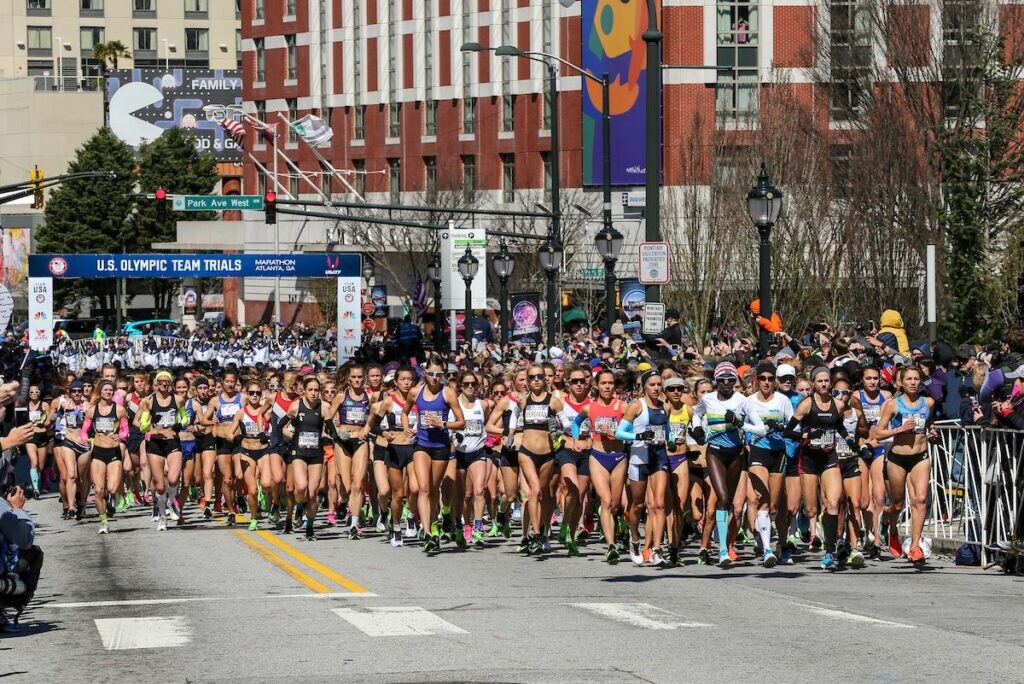
The decision to set the start time at noon is believed to be influenced by executives at NBC, the network broadcasting the event. The email highlights that the race will be televised live on NBC for three hours, providing coverage of the men’s and women’s runners and races.
The Paris Olympic marathon, which is also expected to be warm, is scheduled for Aug. 10–the middle of summer in the French capital. But both the men’s and women’s races are set to begin at 8 a.m. local time. This disparity in start times has added to the concerns raised by the late start for the U.S. Trials in Orlando.
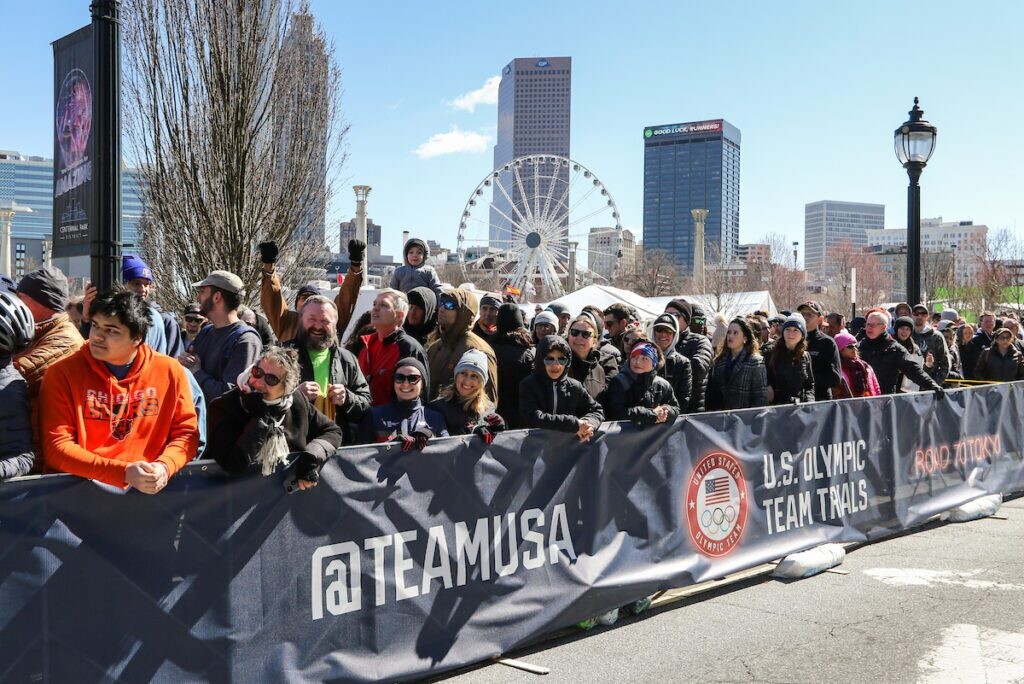
The U.S. Olympic Marathon Trials serves as the selection race for the men’s and women’s Olympic teams that will compete at the Summer Games in Paris. The top three finishers who also meet World Athletics’ qualifying standards will go on to represent Team USA at the Olympics.
Some athletes and coaches have expressed concern, while others seem to be looking forward to it. 2018 Boston Marathon champion Des Linden tweeted: “Warmer temps should slightly minimize the pace of super shoes and reward smarter racing. Count me in!”
U.S. ultrarunner Camille Herron said “We are seven months out from the Olympic Marathon Trials. No excuses to not be prepared for a potentially hot day in Florida.”
Renowned U.S. marathon coach Kevin Hanson, who currently has 13 athletes (eight women and five men) qualified for the U.S. Trials, stressed his disappointment that athletes’ health is not taken into consideration. “There is no amount of TV coverage that is worth the health of our athletes,” Hanson tweeted.
This isn’t the first time USATF has faced criticism for its handling of extreme heat during events. At the 2021 Olympic Track and Field Trials in Eugene, Ore., where temperatures were forecasted to reach highs of 40 C, several events were rescheduled for safety. However, the heptathlon was not, and athlete Taliyah Brooks collapsed on the track due to the heat and later filed a lawsuit against USATF.
In the 2016 Olympic Marathon Trials in Los Angeles, which began at 9 a.m., some athletes struggled on an unusually warm day, with temperatures reaching the mid-70s Fahrenheit. Shalane Flanagan, who placed third in 2:29:19, collapsed at the finish line, and the organizing committee and USATF later faced criticism for not providing adequate water on the course for the athletes.
by Marley Dickinson
Login to leave a comment
2028 US Olympic Trials Marathon
Most countries around the world use a selection committee to choose their Olympic Team Members, but not the USA. Prior to 1968, a series of races were used to select the USA Olympic Marathon team, but beginning in 1968 the format was changed to a single race on a single day with the top three finishers selected to be part...
more...2023 Western States 100 Women’s Preview
The 2023 Western States 100 is just around the corner and we’re here to take a look at the pointy end of this year’s women’s field. Before we get started, in case anyone needs a reminder of this unique, point-to-point, net downhill course, here are the stats for the standard course: 100.2 miles, 18,000 feet of climbing, and 22,000 feet of descending.
At the time of writing this, we don’t know if the huge snows of this winter or last year’s wildfire on the course will necessitate any significant course modifications for this year’s running. However, we know the race organization is doing everything they can to host the race on the normal course. We also know that those conditions will likely play into the competition, with snow present on the first 25 miles of the course for a spicy warm-up, as well as miles of wildfire-exposed course that’s likely to make the middle miles feel more severe than normal. And, also, we are expecting the normal race-day heat.
Last year’s race further showed how much faster the Western States women’s field has gotten in recent years. While Ellie Greenwood’s 2012 course record of 16:47 has remained untouched, 15 of the 24 fastest women’s times at the race have been logged in just its three recent races — 2019, 2021, and 2022 — with those 15 times logged by 13 different women. Ruth Croft’s 2022 winning time of 17:21 was the third-fastest women’s time ever while fifth-place Emily Hawgood’s 18:16 would have won the women’s race in all but 10 other years.
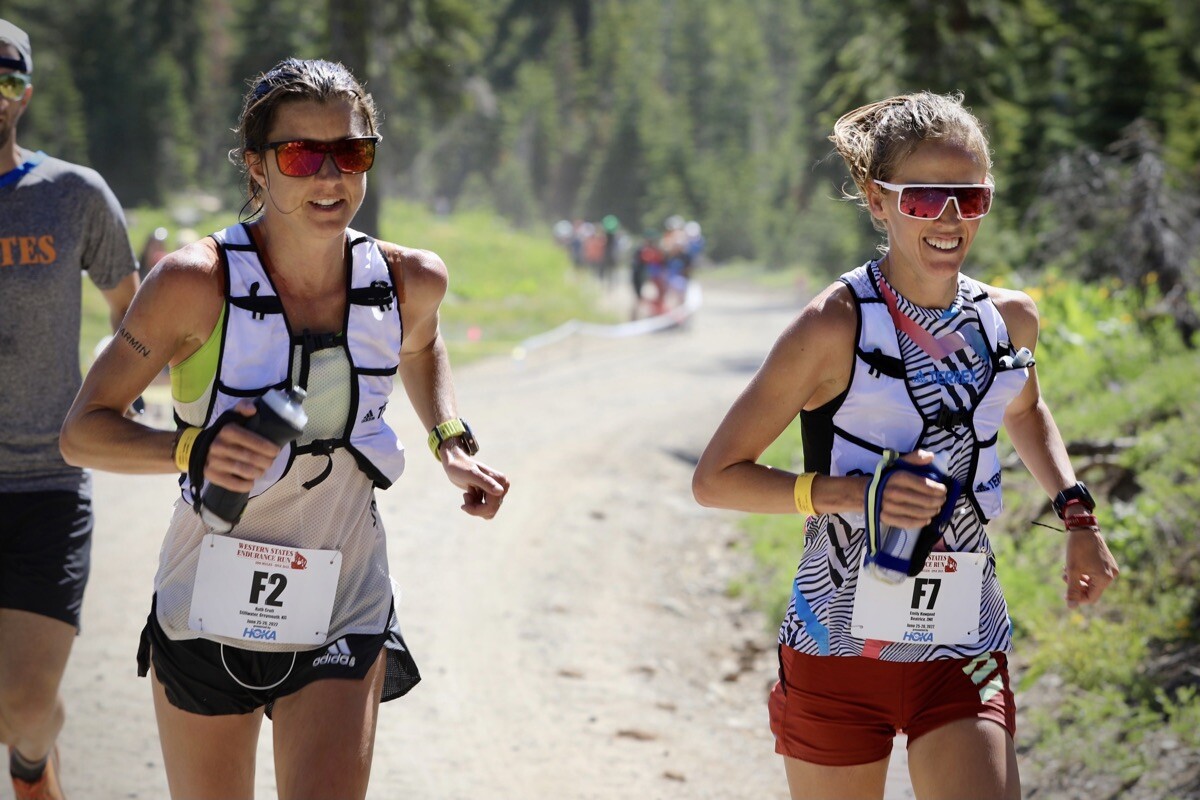
We’re in for one heck of an exciting women’s race at this year’s Western States 100. None of last year’s top-four women are returning while everyone who finished between fifth and ninth will be returning. Lining up aside those five will be another half dozen women, each of whom could make a push for the podium, including a couple of the world’s best 100-mile racers at the moment. Another dozen strong women will add to the excitement in running for the top 10.
As you’d guess, iRunFar will be there to report firsthand on all the action as it unfolds starting at 5 a.m. U.S. PDT on Saturday, June 24. Stay tuned!
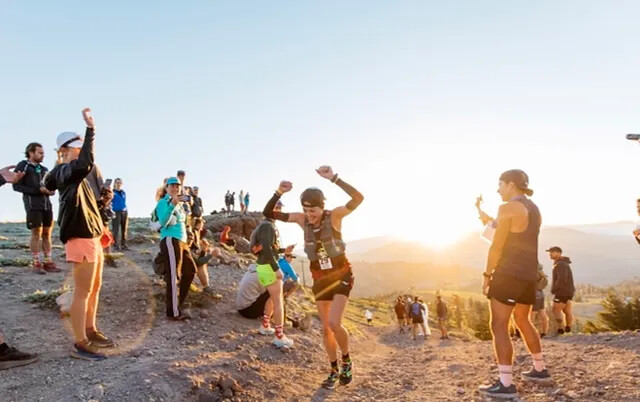
A special thanks to HOKA for making our coverage of the Western States 100 possible!
Emily Hawgood – 5th, 18:16:02
Well, look at that, Zimbabwe’s Emily Hawgood comes into the 2023 Western States 100 as the top returning women’s runner after her fifth-place finish last year. That fifth place is no fluke as over the past two years, Hawgood has been seventh at the 2021 Western States 100 as well as taking 10th and sixth at the past two UTMBs. Living over here in the U.S., she ran and won the same local 50k both last year and this February.
Leah Yingling – 6th, 18:32:31
After many years of quieter success, Leah Yingling made herself known with a great 2022 season. In addition to taking sixth at Western States in 2022, she was third at the Bandera 100k, third at the Transgrancanaria Advanced 60k, second at the Canyons 100k, and 19th at the Trail World Championships 80k. She’s started her 2023 just as strong with a second place at the Way Too Cool 50k in March and a win at the Bull Run Run 50 Mile in April.
Taylor Nowlin – 7th, 18:46:42
Although she’s run ultras since at least 2016, I’d have to say that 2022 was Taylor Nowlin’s best season to date. Not only did she take seventh in her 100-mile debut at Western States, she also took fourth at the Black Canyon 100k and ninth at CCC. We can’t find any race results for Taylor so far this year, so we’ll have to wait until race day to find out what kind shape she’s in.
Camille Herron – 8th, 18:51:54 (2022 post-race interview)
What a journey it’s been for Camille Herron at Western States! She DNFed in both 2017 and 2019 before finishing in 27:28 in 2021. She kept at it last year, finishing eighth in 18:51. I’d hypothesize that what’s sure to be a snowy course in 2023 could challenge that inspiring progression, but she’ll surely come into the race fit if her recent racing is any indication. In December she clocked 13:02 for 100 miles at the Desert Solstice races before setting the 48-hour world record of 270.5 miles this March.
by Bryon Powell
Login to leave a comment
Western States 100
The Western States ® 100-Mile Endurance Run is the world’s oldest and most prestigious 100-mile trail race. Starting in Squaw Valley, California near the site of the 1960 Winter Olympics and ending 100.2 miles later in Auburn, California, Western States, in the decades since its inception in 1974, has come to represent one of the ultimate endurance tests in the...
more...World-record holder Camille Herron lands a bird feeder after ruling the roost in her final long-distance race before Western States
U.S. ultrarunner Camille Herron broke the men’s course record at a trail marathon in Texas over the weekend, confidently capping off her last long-distance race ahead of the 100-mile Western States Endurance Run at the end of the month.
Herron finished Saturday’s 42.2-km race at the Texas Trail Running Festival in 3:49:47, beating the men’s course record by 1:41 and the women’s course record by almost 29 minutes. She completed the four-loop course at the Grelle Recreation Area trail system in Spicewood, Texas, more than 40 minutes before this year’s top men’s finisher and more than an hour before the marathon’s second-place women’s finisher. There were 10 runners in the women’s category of this year’s race and 57 competitors overall.
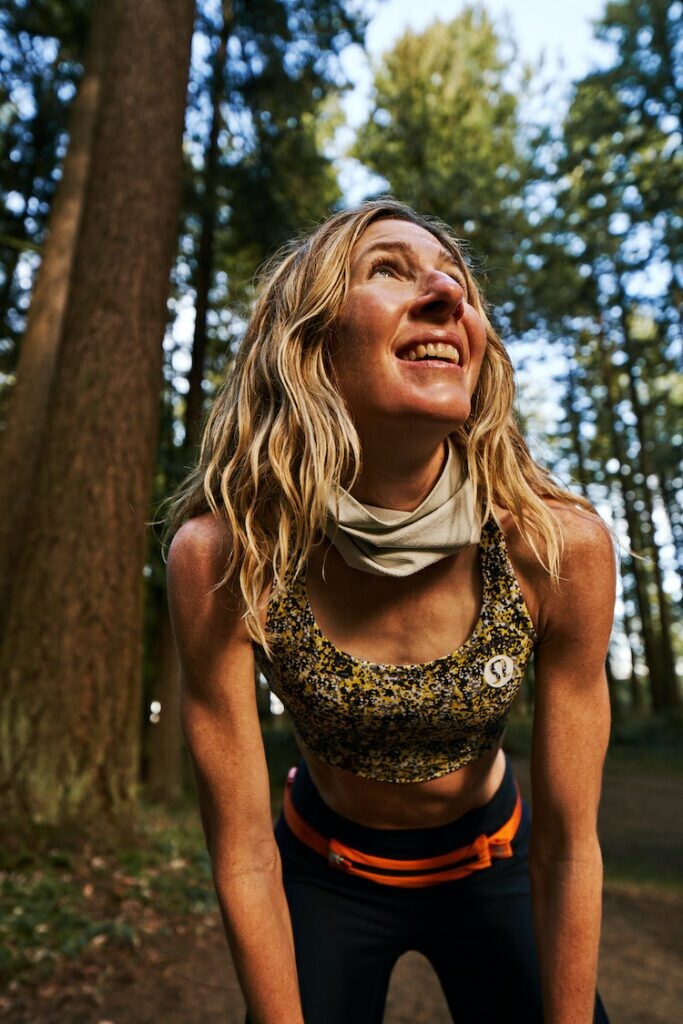
Herron proudly displayed her first-place prize—a bird feeder in the shape of a Texas Longhorn—in social media posts over the weekend. “It was a great course and good prep for Western States,” Herron wrote. “I won a really sweet bird house. Thank you @trejatrails for putting on a fun event.”
Herron, who lives in Oklahoma, wrote that it had been a few years since she’d run in Texas and that it was good to be back: “They have a great trail community—I’ll have to come back for more.”
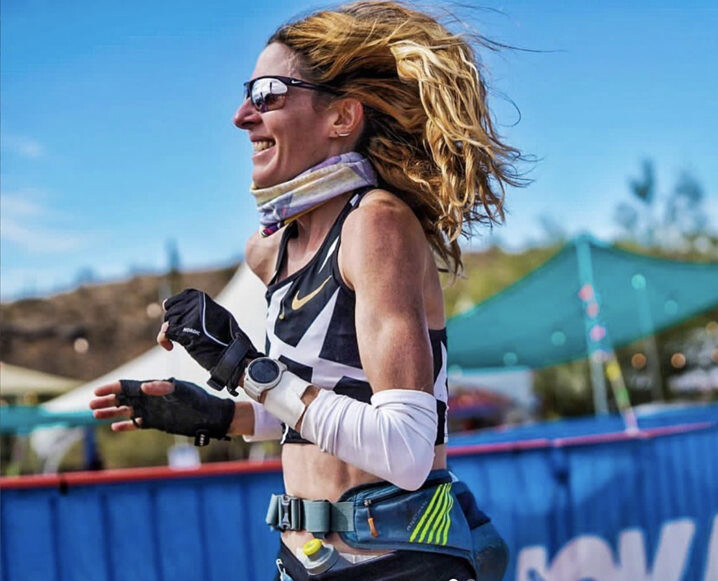
Amid the many congratulations posted in her Instagram feed, Herron was asked if Saturday’s race will be her final long run before Western States, which kicks off in California’s Olympic Valley on June 24. “Yep,” she replied, “ready to roll.”
A “roll” is exactly what Herron has been on at events large and small in 2023. The runner, who has set world records in 50-mile, 100-mile, 100-kilometer, 12-hour and 24-hour events, set the 48-hour women’s world record in Canberra, Australia in March by running 435.336km. If she’s to add to her impressive string of ultrarunning records at this year’s Western States, Herron will have to best the 16:47:19 run by Vancouver’s Ellie Greenwood in 2012. Herron cracked the top 10 in the women’s field at last year’s Western States, running 18:51:54 to place eighth.
Looking beyond Western States, Herron will be among 10 women athletes to compete in Lululemon’s recently announced Further six-day ultramarathon next March.
She noted she’ll also need to fit hanging a birdfeeder into her busy schedule, and that she’s curious to see who flocks to her newest racing trophy. “Can’t wait to see who becomes our new neighbor.”
by Paul Baswick
Login to leave a comment
Western States 100
The Western States ® 100-Mile Endurance Run is the world’s oldest and most prestigious 100-mile trail race. Starting in Squaw Valley, California near the site of the 1960 Winter Olympics and ending 100.2 miles later in Auburn, California, Western States, in the decades since its inception in 1974, has come to represent one of the ultimate endurance tests in the...
more...Lululemon launching six-day ultramarathon for women in 2024
Lululemon will launch a six-day ultramarathon next year–a step into new territory for the athleticwear brand that it says is aimed at promoting and better understanding the potential of women in endurance sports.
The company says the Further six-day ultra will kick off on March 8—International Women’s Day—on a certified looped course at a location to be announced. Ten athletes are slated to compete in the event: Camille Herron, Devon Yanko, Kayla Jeter, Leah Yingling, Mirna Valerio, Montana Farrah-Seaton, Stefanie Flippin, Vriko Kwok, Xiaomeng Jia and Yoon Young Kang.
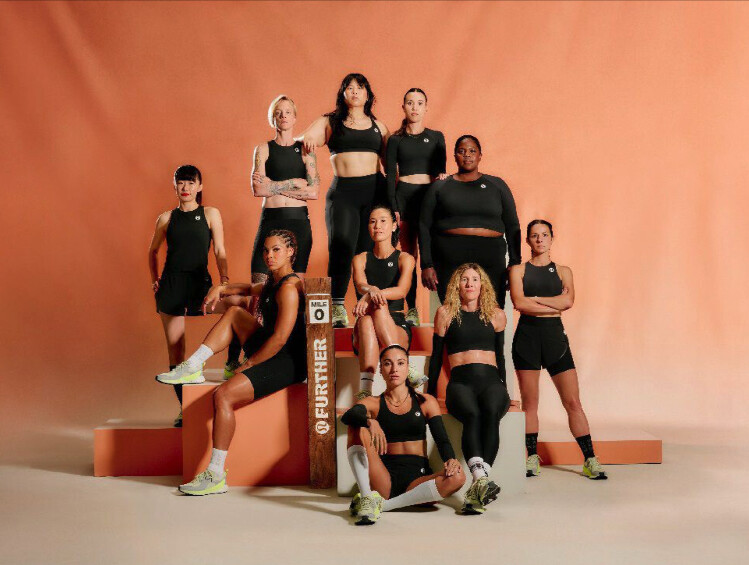
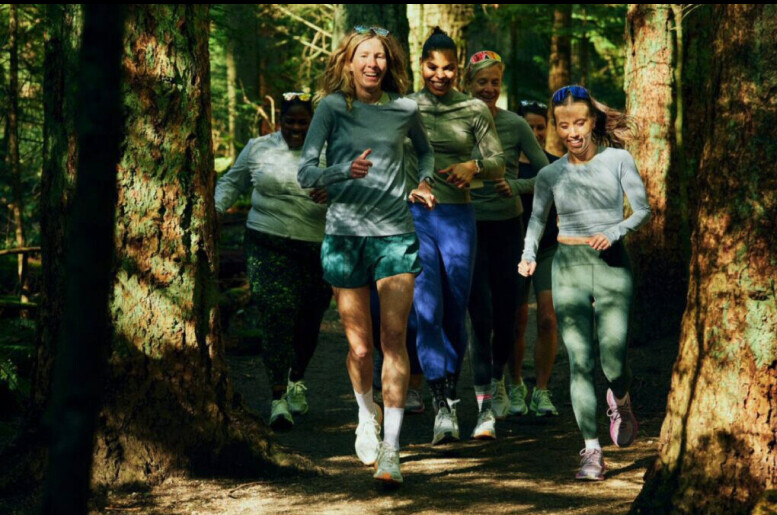
“Women are continuing to redefine what’s possible,” says Herron, the American ultrarunner who set the 48-hour women’s world record in Canberra, Australia in March by running 435.336km. “It’s important we have the platform and opportunities to showcase what we’re capable of. Further represents this to me. I’m honoured to join this phenomenal group of athletes, elevate women’s running and celebrate our human potential.”
The multi-day event will give the runners the chance to run the furthest distance of their careers with the opportunity to set world records, says the company.
Lululemon says it will be partnering with Canadian Sport Institute Pacific to conduct research studies on athletes during training and the ultramarathon itself to better understand female endurance performance and human endurance performance in general. Each athlete will have access to sport science and medicine support to inform personalized training programs spanning physical, mental and emotional support. Findings from the research are expected to be published at the beginning of March.
“Women are continuously setting new ultramarathon records, with the difference between male and female performance appearing to get smaller the further humans run,” says Trent Stellingwerf, senior adviser of innovation and research at Canadian Sport Institute Pacific. “However, there is limited research in this space, which creates a biased understanding of human endurance as women are heavily under-represented in sports science.”
Lululemon cites an an audit of select sports science and sports medicine journals that found only four to 13 per cent of published studies were female-only. The new research is intended to address the “limited knowledge around female athletes while bringing awareness to the need for additional research,” says the company.
“Women are historically underserved when it comes to opportunities to compete, research devoted to the pursuit of their goals, and product innovations built with them in mind, yet they continue to push the boundaries of human possibility in sport regardless of the inequities they face,” says Nikki Neuburger, Lululemon’s chief brand officer. “Further is grounded in our purpose at lululemon to unlock greater possibility and well being for all, and we see it as an opportunity to better serve women, solving for their specific unmet needs. With Further, we aim to inspire belief in what is possible for women when they’re supported with resources typically reserved for men.
Canadian multi-day ultramarathoning pioneer Trishul Cherns tells Canadian Running that while organizing a multi-day race may seem to some as unusual territory for Lululemon, he sees many positives in the Further project.
“From my perspective, it puts the spotlight on something close to my heart, multi-day running. The goal of the Global Organization of Multi-Day Ultramarathoners (GOMU) is to make multi-day running mainstream,” says Cherns, who adds the Further project “puts a spotlight on women in multi-day running. Ultramarathons are not just 100 mile trail runs; they are diverse–10-day, 1,000-mile, 3,100-mile races on tracks on roads—just like the group of women that make up this project.”
He applauds Lululemon’s effort to invest more resources and attention to women’s sports. “Their focus is on data capture to further sports science and research on women’s endurance. Brava!” says Cherns. “It’s very true that women are sorely under-represented in the research data and the science of female performance is marginalized or non-existent … Only recently has the discussion of women’s menstrual cycles on sports performance even been openly talked about by women athletes, let alone the subject of serious study.”
Along with its announcement of the Further multi-day ultramarathon, Lululemon unveiled the Blissfeel Trail, the company’s first road-to-trail running shoe. The company says the insights it gains from the Further project will help the company expand on products designed to support women as they go further on their runs.
by Running Magazine
Login to leave a comment
Former world record holder disqualified for taking a car during 50-mile race
Scottish ultrarunning record holder Joasia Zakrzewski has been stripped of a recent third-place finish at a British 50-miler after it was discovered that she rode in a car for about two and a half miles mid-race. Zakrzewski told the BBC that while she did hitch a ride with a friend, her decision to do so “wasn’t malicious.” Zakrzewski is the owner of multiple Scottish and British ultrarunning records, and she ran the 48-hour world record in February (although her distance was bettered by Camille Herron in March).
Zakrzewski lives in Australia, and she reportedly travelled last-minute to the U.K. for the April 7 Manchester to Liverpool ultramarathon, arriving the night before the race. As she told the BBC, she got lost on the course halfway through the race, at which point she began dealing with leg pain that eventually became too much to handle. She saw a friend on the sidelines and decided to pull out of the run, hopping in his car and riding to tell the race marshals she was done for the day.
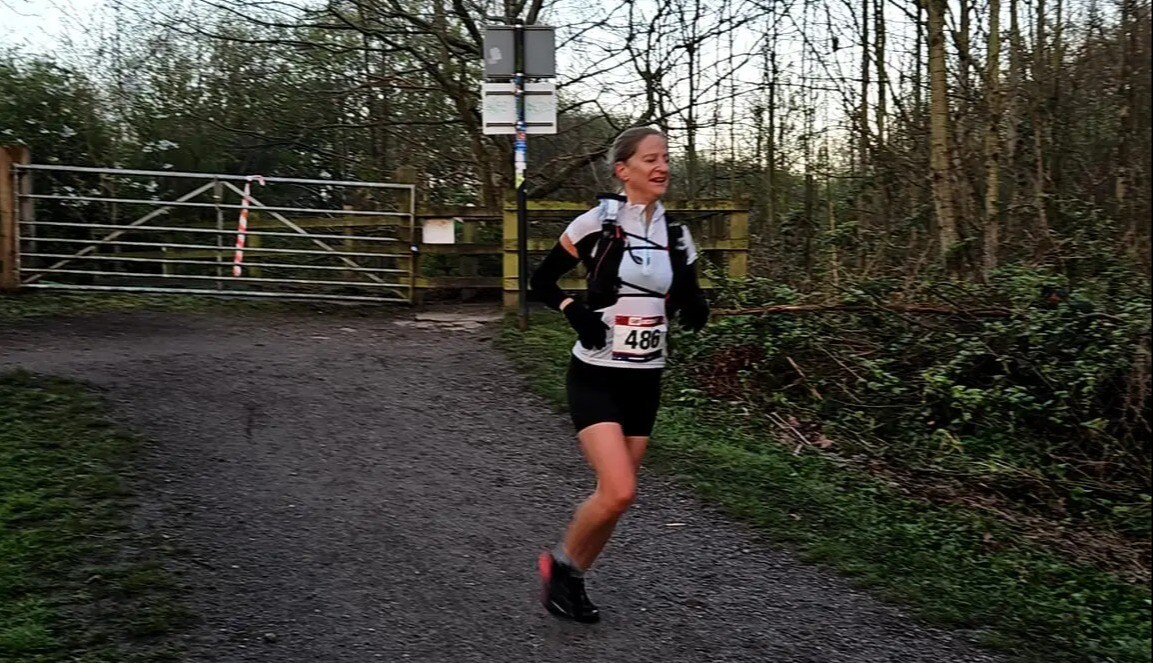
“When I got to the checkpoint I told them I was pulling out and that I had been in the car,” Zakrzewski said. “They said, ‘You will hate yourself if you stop.'” Zakrzewski agreed and carried on, later telling the BBC that she only planned to finish the race non-competitively.
After crossing the line in third place, however, Zakrzewski was given a medal, a trophy and she was asked to pose for podium pictures. She didn’t stop to let anyone know she had cut the course, but Zakrzewski said that was not intentional.
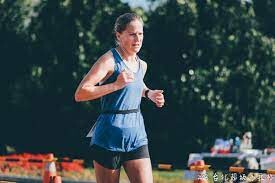
“I made a massive error accepting the trophy and should have handed it back,” she said. “I was tired and jet-lagged and … I was feeling unwell and spaced out and not thinking clearly.” Zakrzewski’s car ride blip was not noticed immediately, but race director Wayne Drinkwater was eventually tipped off that she had received an “unsporting, competitive advantage during a section of the event.”
Drinkwater and his team checked the race tracking data and took statements from other competitors, before moving forward with Zakrzewski’s disqualification. As The Guardian reported, a GPS file shows that Zakrzewski covered a mid-race mile in one minute and 40 seconds.
With Zakrzewski disqualified, a runner named Mel Sykes is the new third-place finisher at the race. “I’m an idiot and want to apologize to Mel,” Zakrzewski said. “I would never purposefully cheat.”
by Ben Snider-McGrath
Login to leave a comment
Unbelievable! Camille Herron Shatters 48-Hour World Record
She covered 270.5 miles in two days of running.
She averaged 10:39 per mile pace, which included at least one 40-minute nap, according to her Instagram, so her actual moving pace was faster.
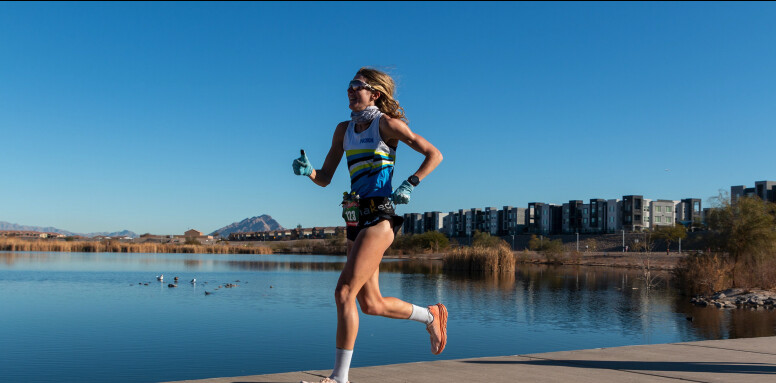
She hit 148 miles for the first 24 hours, and 122.5 miles in the second day, as rain poured down on the runners. Only two men have ever run farther over 48 hours. She covered 1,088 laps of the track.
Herron, 41, ran marathons in the early part of her career, recording a personal best of 2:37:14 in 2012 in Houston. She began running ultra distances in 2015 and found immediate success. She won the 2017 Comrades Marathon in South Africa, and she’s also the world record holder for 100 miles, 12 hours, and 24 hours.
In a phone call with Runner’s World before she left for Australia, Herron said she planned to take 6- to 8-minute power naps a couple of times in the first 24 hours. “A lot of 24-hour runners don’t sleep at all for 24 hours, but I found when I did that little bit of lying down and closing my eyes and meditating, it really helped me,” she said. “I was able to extend my 24-hour record by 5 miles.
“You hear about hallucinations with ultra runners,” she continued. “When I start to feel that happening with my brain is when I lie down.”
Earlier in her career she was sponsored by Nike and Hoka, but at the end of 2022 she left Hoka and signed a new deal with Lululemon.
Other elite runners weighed in on the snippets of video posted to Herron’s instagram during the event. Colleen Quigley, Keira D’Amato, and Zach Bitter were among those expressing their admiration for Herron’s feat.
Camille Herron destroyed the world record for 48 hours of running, covering 435.336 kilometers (270.5 miles) around a 400-meter track in Bruce, Australia.
The previous record, 411.5 kilometers (255 miles), was set by Jo Zakrzewski of Great Britain in February. Herron exceeded that by 15.5 miles. She bested the previous record about 45 hours into the event—and kept running for almost another 3 hours after that.
by Runner’s World
Login to leave a comment
Ultrarunner Camille Herron announces new sponsor: Lululemon
Hundred-mile and 12-hour world record holder Camille Herron of Oklahoma City, Okla. ended speculation about her new sponsor with Wednesday’s announcement that she has joined forces with the running and yoga brand Lululemon. The runner recently announced that she would be sponsored by a company that is new to the ultratrail space in 2023. “It feels like a dream come true,” Herron told us after a week spent at the brand’s Portland, Ore. facilities.
Herron is the first and only woman to achieve sub-13 hours for 100 miles, 150 km for 12 hours and 270 km over 24 hours, and she won the 90-km Comrades Marathon in South Africa in 2017. She reached 100,000 lifetime miles in 2022. She was formerly sponsored by Hoka.
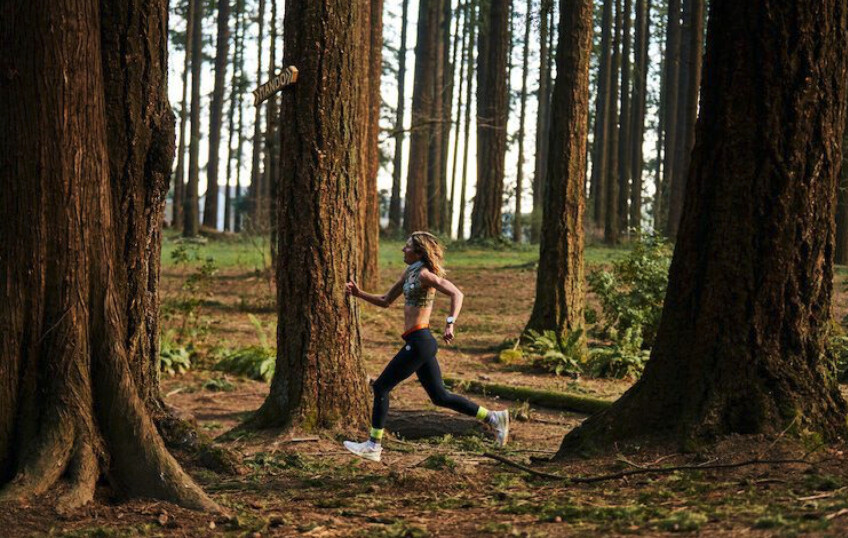
Herron says she’s most excited for the support she’s received beyond her athletic ability: “It means a lot to me that they appreciate my human qualities beyond my athletic talents,” she says. “My professional background is in science and research, and they recognized how I can help the brand with my scientific knowledge. I’m a cerebral person–I’m more than an ultrarunner. It spoke to my heart that Lululemon recognized this. They seemed to know more about me than I knew about myself! I was blown away.”
The philosophy
Herron is excited to be partnering with Lululemon because of their track record as a brand that has women front and centre, and she joins a long list of other female Lululemon-sponsored runners, including Colleen Quigley, Mirna Valerio and Tara Davis, and others. “I feel a sense of women’s empowerment joining with them,” Herron says. “They believe in me and support me, and they care about the whole human. They’ve been asking me about my mental health and wellbeing, and I thought that was really cool–I’ve never been asked about that. I’ve connected with someone to help me with my mental and emotional health, and how I manage stress.”
“Last year at Western States, I started my period after the Forest Hill aid station, and I shared that, and it resonated with a lot of women. Sharing my journey, my athletic career in my 40s–that’s pretty much unheard of. It’s really cool for me to have Lululmeon’s support. I’m very grateful.”
The gear
Herron’s excited about Lululemon’s running clothing: “We’ve been having fun mixing and matching that top [the Invigorate Training Tank] with shorts. I really like old-school split shorts, and Lululemon has that. I imagine myself being a unicorn or a superhero, mixing and matching Wonder-Woman-type colours. We’re bringing back colour to the sport!”
She is also impressed with their socks, and their run bras: “Being an ultrarunner, I spend a lot of time on my feet,” says Herron. “To be able to take off my socks after a run, and my feet are dry and my toes are in good shape, is huge. “I also love how they put pockets in everything.”
She’s also impressed with the brand’s efforts to produce high-quality running shoes, even if shoes appropriate for very long days on the road, track or trail remain a work in progress. “Me being a science person, I can offer a lot of feedback on developing their shoes,” Herron says. “It’s such a great opportunity to collaborate. We’ve had lots of meetings–I’ve been to the company headquarters in Vancouver and met the shoe people; all the products are incredible, and I’m excited to bring them to the ultratrail community.”
Goals for 2023
Herron is excited for the future: “I feel so blessed to be 41 and still getting faster,” she says, adding that she’s grateful for the brand’s support. “This is a long-term commitment, not only for my athletic career but also helping them with product development. I’m going to be continuing my focus on world records, try to improve some of them, and also go further; I want to go for the 48-hour and 6-day records; I’m hoping I have the opportunity this year to go beyond 24 hours.”
This summer, however, she’ll be focused on trails, with Western States in June and Leadville (another 100-mile trail race) in August. “Every time I show up at Western States, I get a bit better,” she says.
On Feb. 18, Herron plans to challenge her own world records for 100 miles and 12 hours at The Raven in Mount Pleasant, S.C. She will also plan to qualify for the 24-hour world championship in Taiwan, which takes place in December 2023.
by Running Magazine
Login to leave a comment
Camille Herron’s Advice: Skip the Long Run
Bones are made of dynamic tissues that need stress, just not too much, says one of the world's best ultrarunners
In January, my social media feeds were filled with the typical new year posts—year-end recaps, reflections and resolutions, and hopes for the coming year. But one tweet caught my eye.
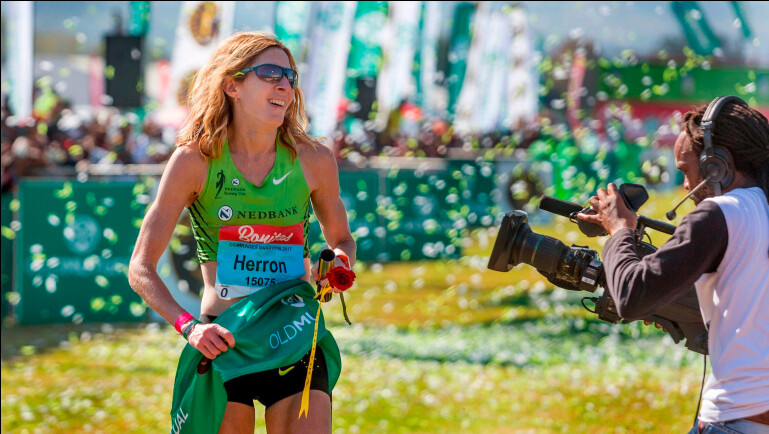
Ultrarunner Camille Herron shared one reason why she thought she was “crushing world records” in her forties: She only does one or two long runs a month (nothing over 22 miles) and she never does back-to-back long runs. Case in point: she ran one easy 20-miler in the lead-up to the Jackpot Ultra Running Festival’s 100-mile race last year, which she won outright. Instead, she focuses on cumulative volume and running frequency.
In her words, “Long runs are overrated.”
In the world of ultrarunning, where there’s a bravado around epic big-mileage days, Herron seems like an anomaly. Among the replies to her tweet, there was curiosity tinged with a side of skepticism. How could an ultra-distance athlete—one who holds world records for 100 miles and for the longest distance covered in 24 hours—run no longer than what you’d typically do in a marathon build-up? Shouldn’t her training mirror what she’d need to do in an ultra?
Karen Troy saw Herron’s tweet too. But her first thought was, “Wow. Someone’s actually trying to do it.” To Troy, who’s a professor of biomedical engineering and the director of the musculoskeletal mechanics lab at Worcester Polytechnic Institute, Herron’s training philosophy reflected what she’d read in scientific journals and seen in the lab related to mechanical stress and bone adaptation. “To me, it really aligned well with a lot of the theory,” she says.
Bone is a dynamic tissue. It changes, adapts, and gets stronger in the same way that muscles do. And in order for them to get stronger, you have to load them.
Bones have a “set point”—akin to the thermostat in your house—for the optimal amount of mechanical stress it wants to experience. Depending on the amount and rate of force transmitted through the bone, bone cells respond by either adding or removing bone. Too much force and the cells build bone to temper the load. Too little force and the cells get rid of bone so that it can sense more load.
Scientists have long been interested in finding the sweet spot between the amount of physical activity that induces adaptation and strengthens bone and the amount that can lead to injury—a fine line that many runners are intimately familiar with. What they’ve found in studies with animals like mice and rats is that, after back-to-back loading cycles, bone cells start to ignore the mechanical stress and stop adapting. Troy says it’s like when you walk into a smelly room. “It smells pretty bad for 10 to 15 minutes, and then you adapt. If you stay in the room, it stops smelling,” she says.
However, just like your nose can become re-sensitized if you leave the smelly room, bone cells do too. Studies have found that bone cells start to pay attention to mechanical stress again after a four-to-eight-hour rest period. When you spread the load over multiple sessions rather than one sustained bout, you gain more bone. (Tendons and ligaments respond similarly.)
The evidence suggests that distance running has diminishing returns when it comes to bone health. Troy hypothesizes that bone may respond to the stress of running over the first half mile or so but then become desensitized to the monotonous, repetitive loading. “You’ll get muscle and cardiovascular adaptations, but your bones aren’t paying attention anymore,” Troy says. “You’re just adding miles and potentially accumulating damage, but you’re not going to add adaptive stimulus that will help the bone become stronger.”
There isn’t a lot of data in people, making Herron an interesting case study. “Humans are made to move frequently,” Herron says. “The body responds to change and dynamic stimuli, so you need to stress the body in different ways.” It’s an approach she believes can work for runners at all levels and distances.
Her training is peppered with frequent, shorter bouts of running. Most days, Herron will run 10 to 15 miles and then doubles back for six or seven miles after a four-to-eight-hour rest period. Over a two-week period, she completes four main workouts—short intervals like 400-meter repeats; long intervals like one-to-three-mile repeats; a progression run, usually incorporated into a long run; and a hill session where she stresses both the uphill and downhill components to load her body eccentrically.
In between workouts, she runs easy and incorporates strides and drills twice a week. She likes to race a marathon or 50K a couple of weeks before a big race as a way to practice her nutrition and stress her body “just enough.”
“You can’t just look at a singular long run or back-to-back long runs. You have to look at the whole picture. Every run is like bricks that add up over time,” she says. Over the years, Herron has played around with her training formula and has cut back on her long runs, emphasizing quality over quantity and running for time rather than just distance. “I’m totally fine doing two hours as my long run,” she says.
It makes sense that Herron’s training is steeped in science. She was pre-med at the University of Tulsa before turning her focus to scientific research, studying the impact of strength training on bone and muscle. In graduate school at Oregon State, she investigated the relationship between mechanical stress and bone recovery for her master’s thesis. By studying bones, maybe she hoped to understand why she experienced multiple stress fractures in high school and college. What she learned shaped how she trains.
But she didn’t put the theory into practice right away. Early in her marathon career, she was still doing long runs up to 26 miles. It wasn’t until she started training at altitude that she began to split up her runs. Her coach (and husband) Conor Holt thought it would help her acclimate to the altitude, but she says, “It was like a rocket to the moon.” She recovered better and felt more spark in her legs.
Sabrina Little, ultrarunner and five-time U.S. National Champion, has also seen the benefits of this style of training. In college, she used to log big miles, a 30-mile run before doubling back for another 20 miles the next day. But once she graduated, she no longer had the luxury of dedicating endless hours to training. She expected to be less prepared for races but a funny thing happened—she performed better. It turns out that running multiple times a day may have other performance-boosting effects too.
“When I set the American record in the 24-hour run, my longest run was maybe 16 or 17 miles,” Little says. She would train in the morning and then come back for a faster session in the afternoon. “Breaking things into shorter blocks was beneficial. I was able to do higher integrity work instead of just long, slow distance,” she says. She thinks it helped her body absorb her training.
Now, as a parent to two young kids, Little definitely doesn’t have long blocks of time, so she practices what she calls “prepositional running”—before things, between things, and after things.
However, both Herron and Little logged many miles before happening upon their current training strategy. “I don’t want to say big days aren’t needed, but it’s hard to say what role they play,” Little says. “There’s a way in which the big races are kind of grandfathered into your legs, like you’re never too far away from your last 50-miler.”
While Herron and Little’s training mirrors research findings, it can’t be considered in isolation.
There are other factors that influence bone health and adaptation aside from mechanical loading—genetics, nutrition, running gait, and how much bone you laid down during your peak bone-building years. Hormonal health matters, too, because bone cells have sex hormone receptors. If your hormone levels are low, Troy says it tips the balance toward bone removal, leaving the tissue more vulnerable to injury.
Whether or not eschewing long, sustained bouts of running is the key to success and injury prevention, there are benefits to fostering the idea that not everyone needs big days on the road or trails.
“Most people have responsibilities and can’t spend all that time outside,” says Little. “People should know there are other possibilities. It could get a broader scope of people participating.”
Login to leave a comment
Here's Why It Feels Like Every Elite Runner Is Changing Sponsors Right Now
Tim Tollefson celebrated the new year shoveling a lot of snow, dreaming about a summer of possibility, and changing his shoes.
After six years with Hoka, Tollefson, 37, the well-known elite American ultrarunner from Mammoth Lakes, California, signed a new multi-year sponsorship deal with Craft. It might seem like a curious move this time of the year, but, in reality, most athlete sponsorship contracts in running are one-year partnerships that end on December 31. That typically gives brands the upper hand in these situations because they can have an easy out whenever an athlete doesn't have a great year of results, or they no longer fit with their marketing goals. It always comes down to the money, though sometimes it's in the athlete's best interests to start fresh, to leverage their recent results and social media platform to find a better deal with a brand that better fits their racing goals.
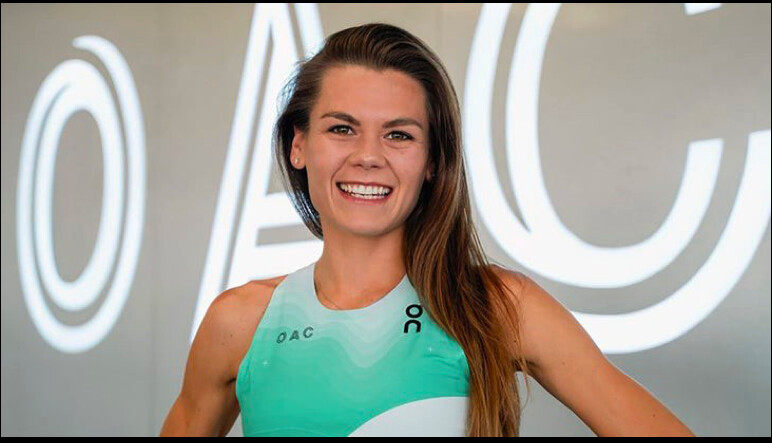

Because there are more brands partnering runners than ever before, and presumably more sponsorship money available, top-tier distance runners who are still at the top of their game-like Tim Tollefson, Allie McLaughlin, Josette Norris, Paige Stoner, David Ribich, Dani Moreno, Erin Clark, Natosha Rogers, Colin Bennie, Dillon Maggard, Camille Herron, and others-have been able to seek out new opportunities to continue their careers with the necessary support.
The terms of the newly signed deals haven't been disclosed, but there is a huge range in pay for professional distance runners-roughly $15,000 on the low end for a partially sponsored trail runner without significant international results, to $300,000 at the high end for a top-tier marathoner with Marathon Majors podium results. Certainly that means some live a life of luxury, while others are forced to work part-time jobs and pinch pennies to get by.
But there are also often signing bonuses, as well as premiums paid for earning appearance fees, major victories, global medals, podium finishes, breaking records, and other incentives, so running faster can be a fast track to a boost in income. However, most athletes are considered independent contractors, and many have to pay for their own healthcare, body work, and travel, depending on the details of their brand partnership.
"You start getting an idea of who's going to be available, for one reason or other, in the last few months of the year, and that's when brands and athletes start talking," said Mike McManus, Hoka's global sports marketing director. "As an athlete, you're as valuable as whatever money anyone wants to give you, but it's a process and all about negotiating. Sometimes you can match the money being offered; sometimes it just doesn't make sense for the partnership."
What Tollefson liked about Craft was similar to what he liked about Hoka six years ago-an upstart brand ready to make an impact in trail racing, its new line of trail shoes, and the trail community overall. Craft sees Tollefson as a runner with name recognition and several significant race wins in the past three years, not to mention a leader in the sport who started the Mammoth Trail Fest last year.
"This [new partnership with Craft] has reignited my deep passion for the sport and has reminded me of the things I want to accomplish," he said. "It's almost like a start-up situation led by passionate people who are excited to make an impact and want to support the people who are along for the journey. Curiosity drives me and I like a challenge. I know I am going to have some lifetime achievements ahead."
More Big Moves in Trail and Ultra
After an extraordinary year of racing on the trails, Allie McLaughlin changed from On to Hoka as her primary sponsor. The charismatic 32-year-old from Colorado Springs won the daunting Mount Marathon race in Alaska, placed among the top five in several Golden Trail Series races, and won both gold and bronze medals in the inaugural World Mountain and Trail Running World Championships in Thailand. She'll be representing the U.S. in this year's World Championships in Austria, in June, while also returning to the OCC 54K race, as part of the Ultra-Trail du Mont-Blanc (UTMB) festival in Chamonix, in August.
"It was really interesting to see how much trail means to them [Hoka], not only with their sponsorship of UTMB, but in general how they're helping push the sport forward," said McLaughlin, who had been with On since 2021. "There are a lot of reasons I like what Hoka is doing, but ultimately, the emphasis they're putting on the team and their athletes is really exciting."
Other trail and ultrarunners who have switched brands include Erin Clark, who finished 7th at last year's CCC, who left Hoka to sign with Nike, even though her partner, Adam Peterman, the 2022 Western States 100 champion and ultrarunning world champion, re-signed with Hoka.
Spanish trail runner Sara Alonso has changed from Salomon to ASICS, while Craft also signed Arlen Glick, a prolific 100-mile specialist from Ohio, and Mimmi Kotka, a Swedish runner with numerous podium finishes in Europe, to its team. Meanwhile, previously unsponsored American trail runners Tabor Hemming (Salomon) and Dan Curts (Brooks) are among those who have signed new deals.
Meanwhile, Dani Moreno, a world-class mountain runner from Mammoth Lakes, California, and Camille Herron, a record-setting ultrarunner from Warr Acres, Oklahoma, are both also leaving Hoka for yet-to-be-announced brands that offered better deals.
Bigger Transitions for Road and Track Runners
For track athletes and marathon runners, a change of shoe brands is often a more involved change, mostly because it often means changing training groups and coaches, too.
For example, Josette Norris, the fifth-place finisher in the 1,500m at the 2022 World Athletics Indoor Championships, not only switched from Reebok to On, but she left Reebok's Virginia-based Boston Track Club, and coach Chris Fox, and moved west to Boulder, Colorado, to join the On Athletics Club under Dathan Ritzenhein.
Similarly, David Ribich, one of the best American mile runners on the track last year, switched from the Seattle-based Brooks Beasts track club to the Nike-backed Union Athletics Club under Pete Julian.
Colin Bennie, the top American finisher in the Boston Marathon in 2021-previously with Reebok but unsponsored last year-signed with the Brooks Beasts but will be training on his own in San Francisco. Dillon Maggard, who was second at the U.S. cross country championships and ninth in 3,000m at the indoor world championships in 2022, is returning to Seattle to train with the Brooks Beasts, after being unsponsored last year. Natosha Rogers, who was a finalist in the 10,000m at last summer's World Athletics Championships in Eugene, Oregon, has changed from Brooks to Puma, but will continue to train on her own in Colorado. Middle-distance runner Cruz Culpepper, after short stints at the University of Washington and the University of Mississippi, gave up his remaining college eligibility to sign with Hoka and its NAZ Elite (NAZ) team.
Last summer, Paige Stoner left the Virginia-based Reebok group and Fox, her longtime coach, to train in Flagstaff, Arizona, partially because she didn't have other marathoners to train with on a regular basis in Charlottesville. She increased her volume last fall training with Sarah Pagano and Emily Durgin and won the U.S. championship at the California International Marathon in December with a course record of 2:26:02, her debut at the distance.
In January, Stoner parlayed that into a new deal with Hoka, as she also joined the Flagstaff-based Northern Arizona Elite and will be training with a group of strong marathoners-including Aliphine Tuliamuk, Alice Wright, Kellyn Taylor, and the recently unretired Stephanie Bruce-under the guidance of coaches Alan Culpepper, Ben Rosario, and Jenna Wreiden.
"I was especially drawn to NAZ because they have proven to be a powerhouse in the marathon, which will likely be my primary focus in the years to come," Stoner said. "I believe the team has all of the tools it takes to compete at the highest level in the sport, and I am eager to begin this new chapter."
Learning the Ropes
For track and road running, the path to success for elite-level, post-collegiate athletes typically includes earning a sponsorship right after the track season in June and joining a sponsored training group and coach. From there, it's all about improving times and placing high in U.S. championship races, with hopes of becoming fast enough to earn a spot in elite track meets in Europe or one of the World Marathon Majors.
But most road and track runners have agents to help smooth out those transitions, whereas most trail runners do not. Plus, trail running is considerably more unstructured, with a greater range of race distances and a lot more unknown variables. That means the challenge of figuring out what opportunities exist on the trails-what races to run, how to train on trails, what gear is needed, how to race considerably longer distances, and how to attract sponsors-often requires them to learn on the fly.
Those are all reasons professional trail runner Andy Wacker recently formed The Trail Team, a non-profit organization that will help guide young runners along the path becoming successful, potentially sponsored trail runners, while also playing a role in boosting the level of competitive trail running in the U.S.
The Trail Team put out a call for candidates to become one of six inaugural team members in 2023. Once selected this spring, those athletes will go through a training camp, receive a stipend, get continued mentorship from Wacker, McLaughlin, Adam Peterman, and Grayson Murphy, and prepare for a variety of U.S. races.
"I've reached out to a lot of young athletes and the main thing I found is they need a mentor," said Wacker, a Salomon-sponsored athlete. "They don't necessarily need a coach-a lot of them have a college coach that they might continue working with-but they need someone who is going to help them with all of their questions and translate everything to trail running.
"It's still really hard to be an individually sponsored athlete, and I think it's hard for a young athlete to get recognition and build their brand, so we're hoping to help with that," he added. "There are more participants and more excitement than ever in trail running, but there are also growing pains. So there are a lot of ways we think we can help so they don't have to figure it out on their own."
Like Wacker, Tollefson is one of those athletes who did have to figure it out on his own. He was a good runner in high school and college, but he never qualified for the state meet and never earned All-American honors. But, with a relentless work ethic, he's become one of the most successful American trail runners of the past decade, having placed second at the CCC 100K in Chamonix, in 2015, and twice placed third in the Ultra-Trail du Mont-Blanc 171K in 2016 and 2017.
Although his personal race plans aren't finalized yet, those deals are allowing him to step away from his career as a physical therapist and become fully immersed in running for the first time in his career.
"All of us athletes are multidimensional; we're more than just a pretty face rocking a bib," Tollefson said. "Everyone has a unique story. I think there are more brands interested in telling those stories, and Craft is definitely one of them. Some people have written me off, but I'm confident my best races are ahead of me. Craft believes in me, and I feel like I need that belief to get the best out of myself."
by Trail Runner Magazine
Login to leave a comment
World ultrarunning champion Camille Herron parts ways with Hoka
The women’s 100-mile world record holder, Camille Herron, announced on social media today that she is parting ways with her longtime sponsor, Hoka, and beginning a partnership with a major brand new to the ultra-trail community in 2023.
“The end of 2022 marks the end of my journey representing Hoka. Thank you for all the wonderful support,” Herron wrote on her Instagram. “My time with the brand has been some of the best years of my career, and it is a testament to the harmony and happiness I have felt while representing Hoka.”
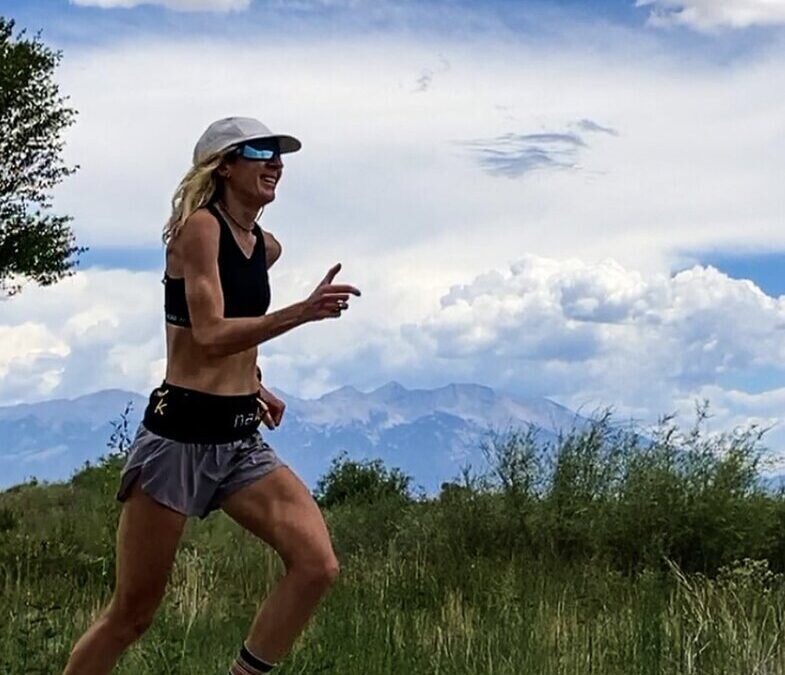
The 2022 season was eventful for the 41-year-old ultrarunner from Norman, Okla. She set 12-hour and 100-mile world records on the track and road and became the 117th runner and the youngest female ever to reach the 100,000 Lifetime Miles club.
She is also the first and only woman to run under 13 hours for 100 miles, exceed 150 km for 12 hours and reach 270 km over 24 hours.
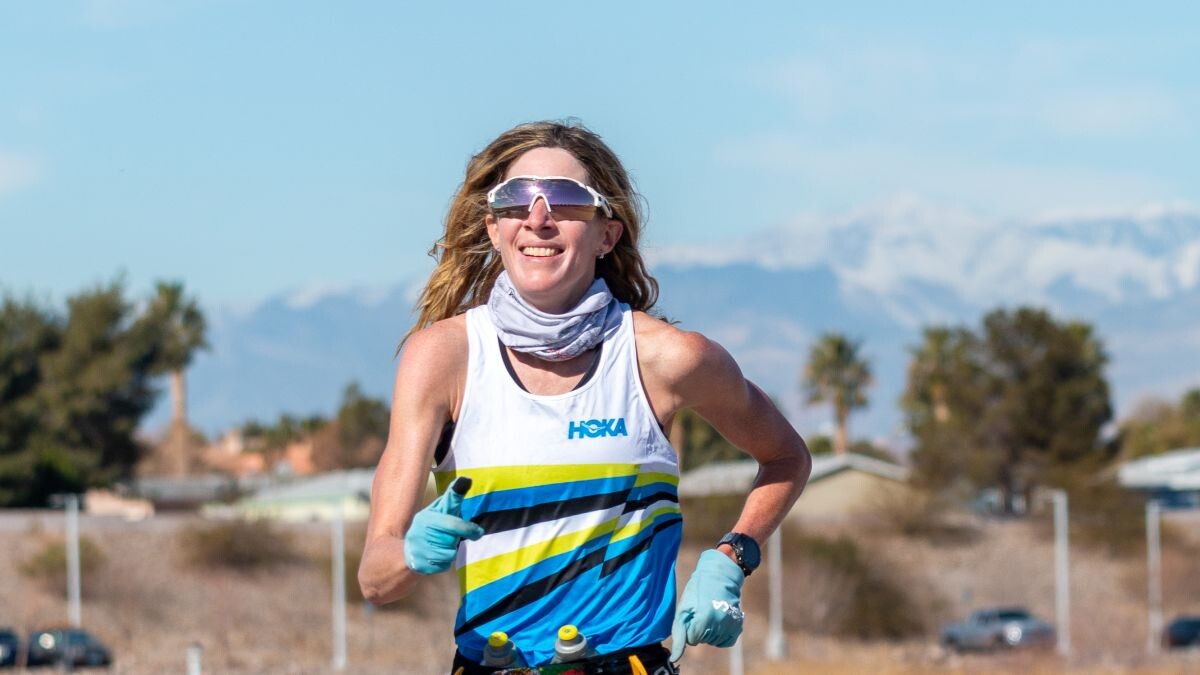
Herron plans to announce her new sponsor in mid-January, but she gave her fans a hint, stating that she was presented with a dream opportunity to partner with a major brand that will be new to the ultra-trail community. “Right now is the time for brands to get behind, support and elevate women in a significant way, and I am excited about all the possibilities to come from this new collaboration,” Herron wrote.
Many major running brands, such as Nike, New Balance and Adidas, have already dipped into the ultra-trail scene. Two running brands with strong records of empowering women in sport are Puma and Lululemon, neither of which has really dipped into the ultra-trail scene yet.
Herron said on her Instagram that the news will come in a few weeks.
by Marley Dickinson
Login to leave a comment
Camille Herron sets new 100-mile record at Desert Solstice Invitational
Ultrarunning champ Camille Herron, 40, set a new American 100-mile track open record in 13:02:16 (pending verification) on Sunday at Desert Solstice Track Invitational in Pheonix, Ariz., bettering her record from last year’s event, when she finished in 13:21:50.
“Desert Solstice was a magical experience once again,” Herron shared on social media post-race. “I aimed to go quicker than 100-mile pace, to achieve my 50 mile and 100K track American records. Then it was a test of ultra grit.”
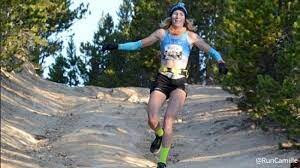
Herron nailed her goals, improving her American records in the 50 mile (5:57:46) and 100K (7:35:50), along with multiple age group records–for a grand total of eleven records at the event. She tapped out of the 24-hour elite invitational race at the 100-mile mark.
Herron led the race until the 50-mile mark, when she took an 11-minute break to deal with some GI distress. “I persevered through the pain, fatigue, and a few bouts of puking to get my 100-mile track American record–unofficially a track world record and masters WR too, 13:02:16, 7:49 per mile (4:51/km),” the runner shared.
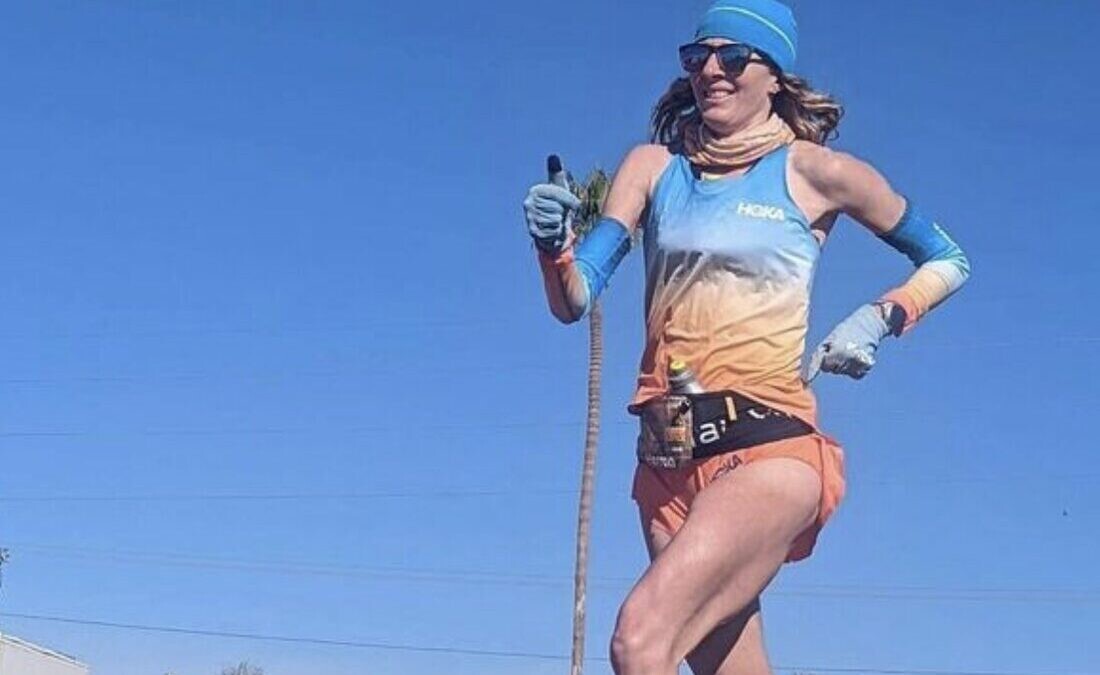
“I feel the best in my life right now at age 40 (turn 41 on Christmas),” added Herron. It’s an exciting time in my career, and we’ll keep the ball rolling into 2023. I’m looking forward to a break to recharge and go to Ireland for Christmas.” 2022 is ending on a high note for the athlete, who has had a challenging year dealing with some controversy around the ratification of her world 100-mile road record set at Jackpot Ultrarunning Festival in February.
California-based repeat champ Marisa Lizak was the overall winner of the 24-hour race with 252.18 kilometres (156.7 miles), bettering her PB for the fixed time by four miles, and qualifying her for the U.S. 24-hour team. Lizak, who was second at Spartathlon earlier this year, now ranks third on the all-time chart behind Herron and Courtney Dauwalter.
New Canadian 12-hour record
Canada’s Amanda Nelson set a new Canadian 12-hour record of 135 kilometers, (previously 134.025 km) and was the 3rd place female finisher in the 100-mile event behind Herron and Lisak. She was the 5th woman finisher in the 24-hour event with 15 hours of running.
Nelson set out to tackle the 24-hour Canadian record, but readjusted her goals after experiencing some severe GI issues.”I hit my B goal in the 100-mile event, with my second fastest time of 14:53:47. On my way to 100 miles I managed to better my existing 12-hour national record,” Nelson says.
Heading into the race, Nelson says she knew track running wasn’t her thing. “I do not enjoy such a tight, flat loop course but I needed to see how I could do in an elite field of runners,” she says, describing it as “a whole other feeling.” Nelson says faster paces felt easier for longer and shared, “it was fun for a while, chasing other like-minded athletes. I did what I could on that day.”
Nelson opted to stop after the 100-mile mark, explaining: “Not every race is going to go as planned and we have to learn to trust ourselves and listen to our bodies. I feel that stopping after 100 miles was the right decision for me this past weekend and still feel incredibly accomplished with what I had achieved.”
Whitby, Ont.’s Viktoria Brown was also competing but shared that she wasn’t feeling her best from the start of the race, mentally and physically, and ended up dropping out after 11 hours. After an extremely successful season that included breaking three national records and competing at IRONMAN Kona, Brown says she had possibly simply reached her limit for the year.
“My 24-hour split at 6 Days in the Dome of 213 kilometers puts me in second place for the Canadian 24-hour team, behind Amanda. I feel that I made the right decision to save myself for a better day.”
Login to leave a comment
Camille Herron’s 100-mile world record may go unratified
Renowned ultrarunner Camille Herron beat her previous world record 100-mile time at the Jackpot Ultra Running Festival in Henderson, Nev., in February, setting a new record that the USA Track and Field (USATF) committee has decided not to ratify, the Washington Post reported on Wednesday.
Herron, 40, won the race in 12:41:11, beating second-place (and first male) finisher Arlen Glick by more than 30 minutes and surpassing her own 2017 record of 12:42:40 by almost a minute and a half. The race doubled as the USA Track and Field 100-mile road championships, and Herron, who is a champion of clean sport and respected for holding herself and others to high standards in competition, was celebrated globally.
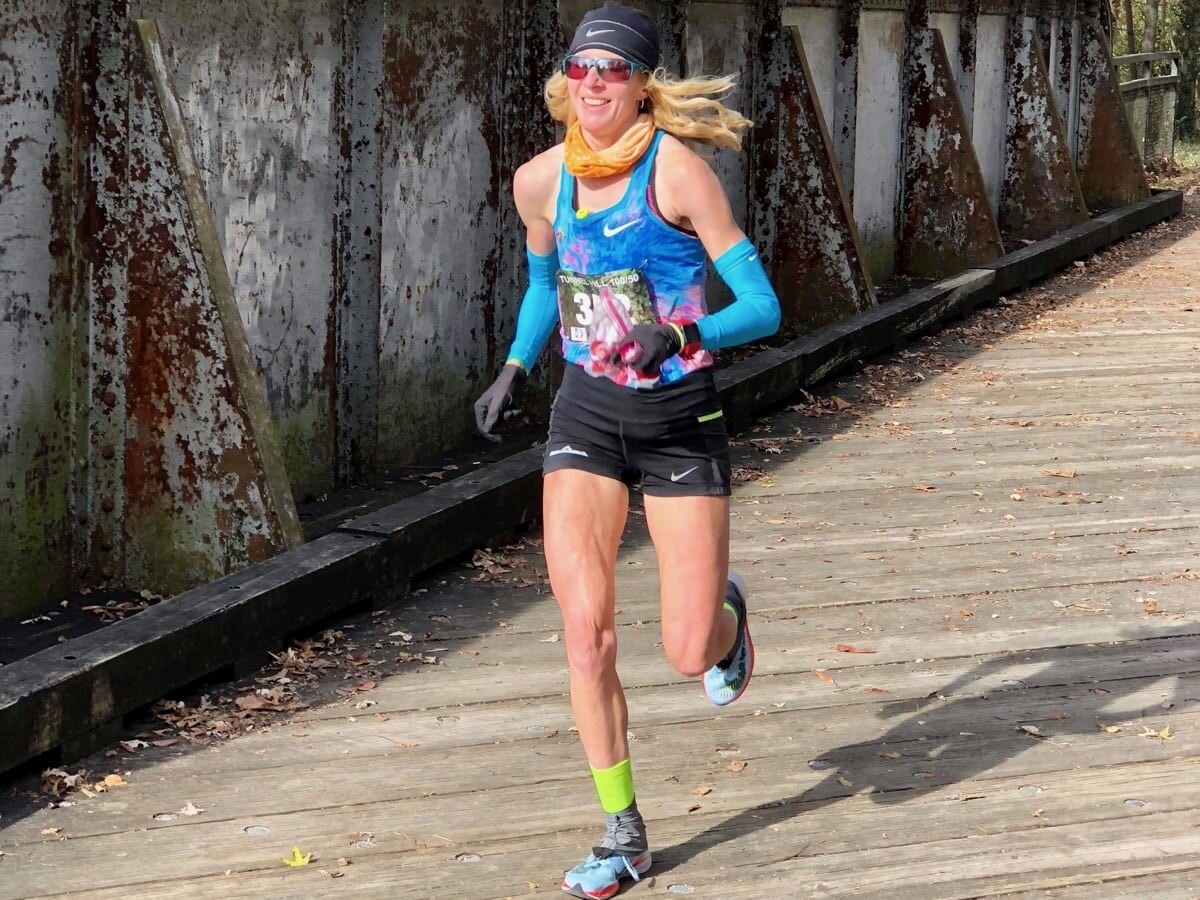
A certified race is always remeasured (course verification) after a record is set–the Jackpot Ultra was measured post-race in February, found to be accurate, and Herron’s record was thought to be clear while not yet official. In October, USATF official Brandon Wilson returned to the Jackpot course and measured once again, determining that the course was short by 716 feet, coming in at 99.864336 miles.
The record ratification process is often lengthy, but there has been no clarification as to why the USATF returned to the course in October, without race director Ken Rubeli (who has since sold the race) present.
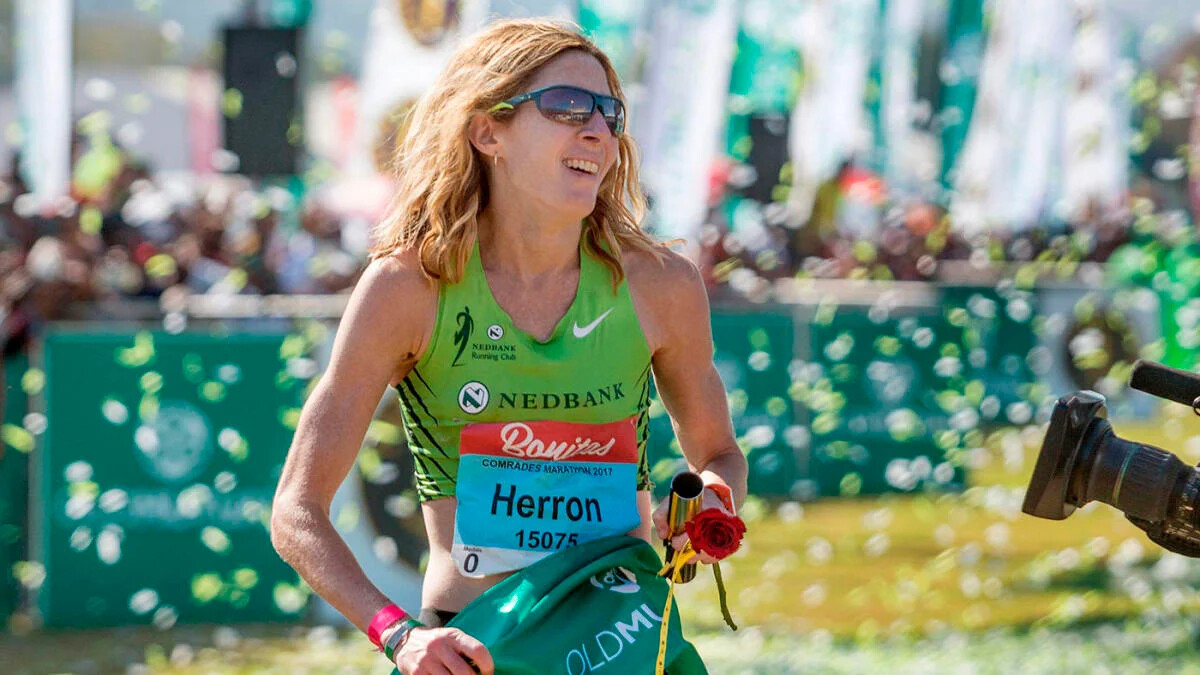
Herron and Conor Holt (her husband and coach) have expressed frustration with the USATF’s process and lack of transparency, along with Rubeli, who sent a letter to USATF questioning the accuracy of measurements made eight months post-race.
“I set a world record in that race, and now they’re telling us that we don’t know whether the course was 100 miles or not,” Herron said to the Post. She shared that the situation has been stressful for her, and has impacted her performance in races since.
“My time is now that I’m in the best shape of my life. And, I mean, these moments can be fleeting. I put my heart and soul into that performance, and it was such a big deal for the sport and the history of the sport that it needs to count,” Herron said.
The Jackpot Ultra is held on a 1.17-mile loop, and the distance was questioned after Wilson (the measurer in February) attended the event, because his wife was running in the 100-mile race, and noticed a discrepancy between the course being run and the certified course map on the USATF website.
Former race director Rubeli explains that he changed one turn on the course for safety reasons, “due to a near collision between a runner and a baby stroller,” adding that he compensated for the change with precise cone placements on the course–something that wasn’t taken into account in Wilson’s February measurement.
Herron, Rubeli, and others are firm on their stance that Herron’s 100-mile record should stand, and the situation is ongoing. “It’s not a done deal yet that it’s unratified,” explains Herron. “USATF wasn’t working with Rubeli the last eight months, so we think the lack of communication created the current situation.”
Herron who describes herself as “propelled by joy and tacos,” has remained positive on social media, noting that she’ll be chasing several of her world records at the upcoming Desert Solstice Invitational, an elite-level event held on a track in Pheonix, Ariz.
by Keeley Milne
Login to leave a comment
Camille Herron’s breakfast of champions, Fuel up and go chase a world record (or maybe a PB)
I’ll try any running (or eating!) advice Camille Herron has to offer. The multiple world-record holder continuously levels up, finding new ways to improve her running and racing. Herron is in South Africa running the downhill course of the legendary Comrades Marathon this weekend, an 89K ultra that she won (on the uphill course) in 2017.
She shared with us the pre-run breakfast she swears by. If you haven’t heard of teff, you aren’t alone; while Westerners are still learning about the tiny, protein-rich grain, it’s been a staple in Ethiopian cooking for thousands of years. Teff has a mild, nutty flavor. Herron substitutes it for oatmeal, and says it’s been a “game-changer.”
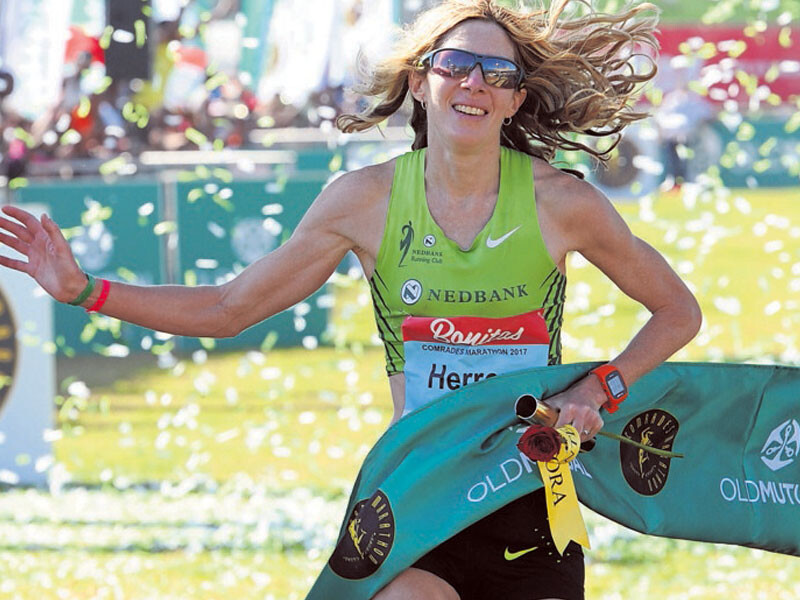
Camille Herron’s breakfast of champions
Ingredients
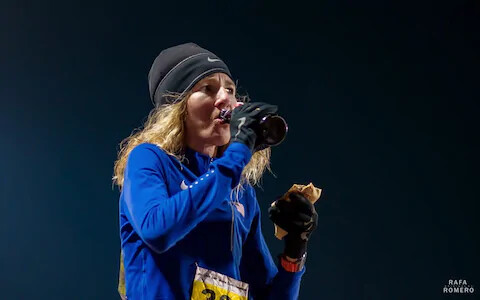
4 Tbsp of teff
1 Tbsp ground flax seed
1 Tbsp chia seeds
Handful of cut walnuts
Handful of blueberries
1 tsp camu powder
1 tsp bee pollen
1 Tbsp non-fortified nutritional yeast
1 to 2 Tbsp honey
Pinch of salt
Directions
Add hot water, stir, and let sit for 10 to 15 minutes. Add or substitute any nuts or fruit that you enjoy. Herron says teff has been a pre-run fuel revelation for her: “it doesn’t retain as much water as oats, so it doesn’t feel heavy on the gut pre-run.” She adds, “it feels like it stabilizes blood sugar for a long time.”
1 Tbsp wheat germ
by Running Magazine
Login to leave a comment
America’s Camille Herron finished sixth at the Comrades Marathon on August 27
"Oh Comrades Marathon you were magical! Thank you everyone for making us feel like rockstars out there. I’m proud to finish 6th this time and another top 10 finish. It was an honor to be here again and share the road with you all. Enjoy the moment for all your hard work," posted Camille Herron.
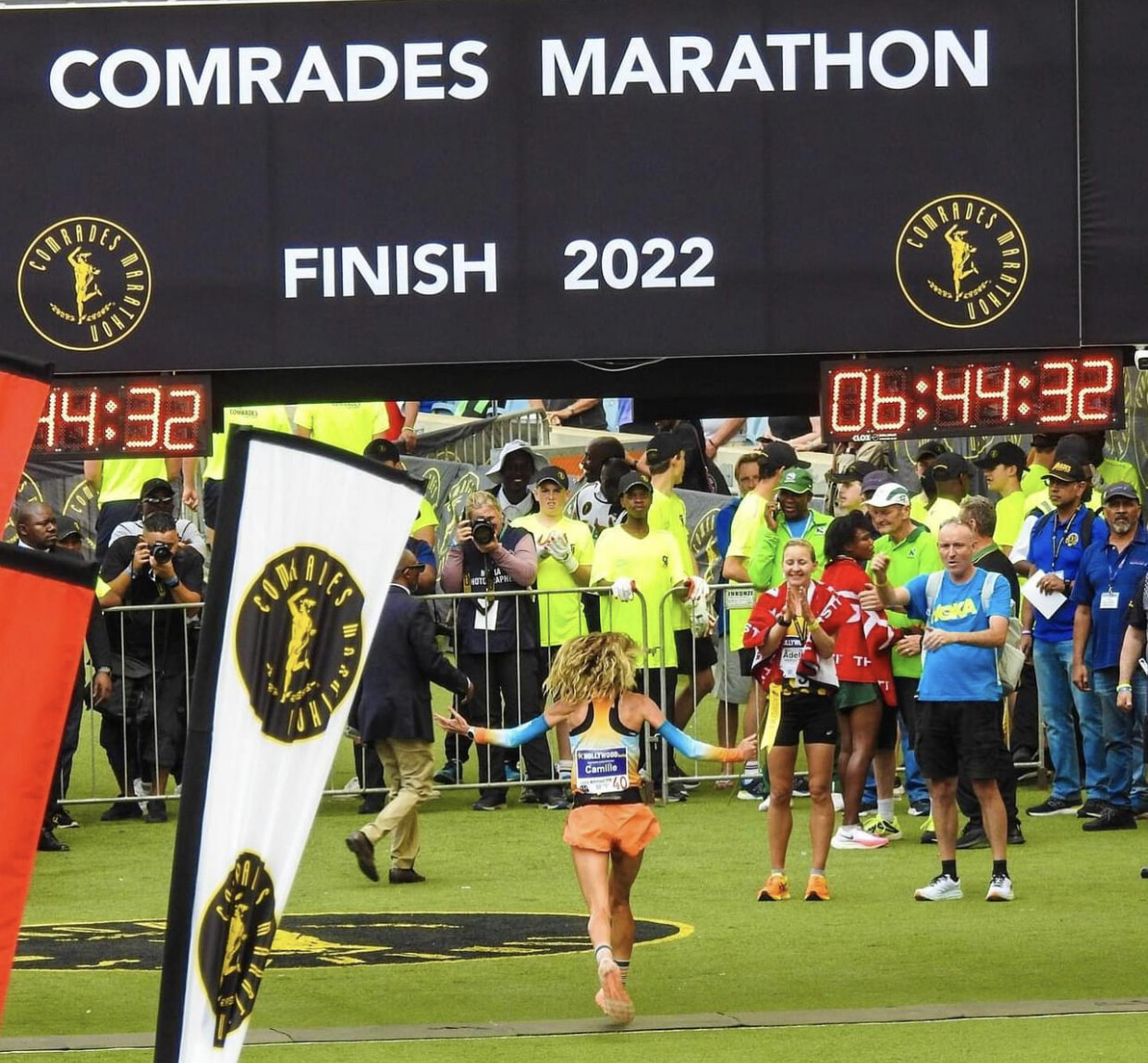
Camille Herron is an American ultramarathon runner. She is the first and only athlete to win all three of the International Association of Ultrarunners' 50K, 100K, and 24 Hour World Championships.
She won the 2017 Comrades Marathon and holds several World Record times at ultramarathon distances, along with the Guinness World Record for the fastest marathon in a superhero costume.
In November 2017, she broke Ann Trason's 100-mile Road World Record by over an hour in 12:42:40. She broke her 12-Hour and 100 Mile World Records in February 2022 at the Jackpot 100/US Championship, winning the race outright and beating all of the men.
In April 2022, she became the youngest woman to reach 100,000 lifetime miles. She is the first and only woman to run under 13 hours for 100 miles, exceed 150 km for 12-Hours, and to reach 270 km for 24Hrs.
Login to leave a comment
Comrades Marathon
Arguably the greatest ultra marathon in the world where athletes come from all over the world to combine muscle and mental strength to conquer the approx 90kilometers between the cities of Pietermaritzburg and Durban, the event owes its beginnings to the vision of one man, World War I veteran Vic Clapham. A soldier, a dreamer, who had campaigned in East...
more...2022 Western States 100 Women’s Race
Last year’s winner Beth Pascall was absent from the start list for 2022, but there was still plenty of talent toeing the line. Six of last year’s top 10 made the final starting list, including hot favorite and previous second-place finisher, New Zealand’s Ruth Croft and last year’s seventh-place woman Emily Hawgood, who was believed to be capable of ruffling some feathers on her second attempt.
Outside of the returning top runners, this year’s start list also featured 100-mile world record holder Camille Herron, former podium finisher Lucy Bartholomew (Australia), and second-place woman at last year’s UTMB, France’s Camille Bruyas.
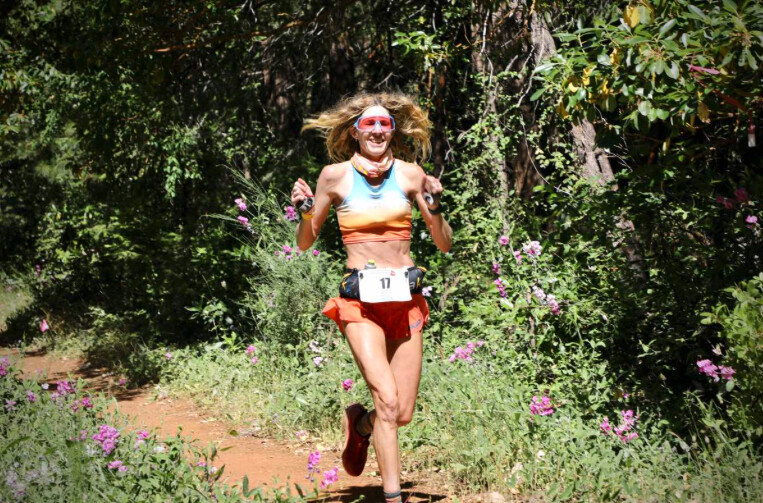
Herron was first to the top of the Escarpment, the race’s high point at mile 3.5, with Ellie Pell hot on her heels. They were followed by Keely Henninger, Poland’s Dominika Stelmach, Katie Asmuth, Canada’s Marianne Hogan, Lindsey Hagen, and Camille Bruyas, all within a couple of seconds of each other. Hawgood followed along in ninth position, followed by Switzerland’s Luzia Buehler in 10th.
The race had yet to space out at Lyon Ridge at mile 10, with Stelmach, Herron, and Hogan coming in together, closely followed by Henninger, Hawgood, Asmuth, and Pell.
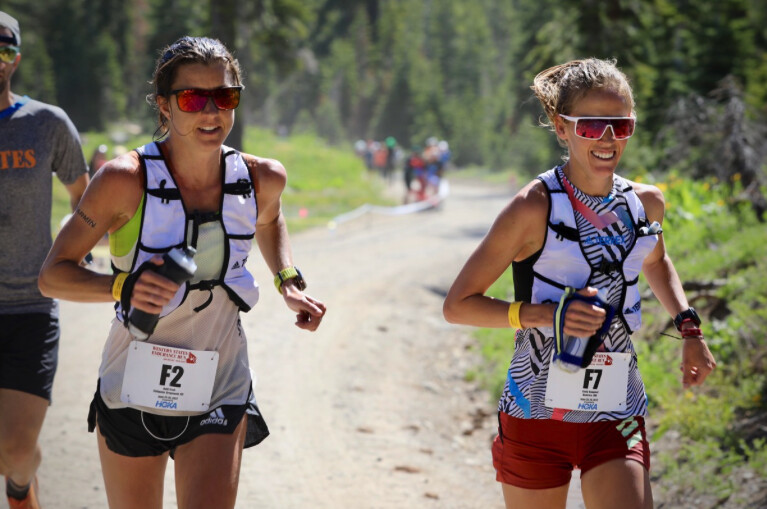
By Red Star Ridge at mile 15, Croft had begun to make her presence felt and climbed up the field to fourth position. Hogan led the field into Duncan Canyon, mile 24, just 20 seconds clear of Stelmach in second, then Hawgood, Henninger, and Croft.
By Robinson Flat, mile 30, Hawgood and Croft had moved up to share the lead and they continued to run together through mile 38, which they passed just under course record pace. Stelmach followed about 90 seconds back in third, a minute clear of Henninger in fourth. Herron had moved back to seventh position but still looked good.
The two leaders were still together at Devil’s Thumb, mile 47, but shortly after Croft managed to break away and ran through Deadwood Cemetery, mile 49.5, seven minutes back of course record pace. Hawgood came through just 30 seconds later, still looking happy and fresh and Henninger looked strong in third, 1:15 back from Croft.
The top two remained the same through mile 62, Foresthill, but Herron had begun to fight back and moved up to third position, about 18 minutes back from the leader and four minutes clear of Ailsa Macdonald in fourth. By the Rucky Chucky river crossing, mile 78, Croft had further extended her lead, but the real action was taking place behind her, with Macdonald making moves and climbing up to second place, 24 minutes back from Croft and three clear of Hawgood. Then with 10 miles to go at Quarry Road, Marianne Hogan, who had never been too far out of the frame, made a push and climbed up to third position.
Croft sealed the deal with a 17:21:30 finish to take the win, the third fastest women’s time on record. Macdonald finished impressively close, just 25 minutes back in 17:46:46. Marianne Hogan took the final podium spot in 18:08:32, less than three minutes clear of Buehler in fourth, in a race that really wasn’t over ‘til it was over.
Hawgood, who ran a brave race, finished fifth in 18:16:02, almost an hour better than her previous time. We expect there will be more to come from her if she takes her place on the 2023 start line.
Leah Yingling was sixth in 18:32:31, and Taylor Nowlin, who had a strong second half, took seventh in 18:46:42. Herron, who’s had bad luck in this race before, had a strong eighth place finish in 18:51:54 and Asmuth and Bruyas rounded out the top 10 in 19:30:26 and 19:34:24 respectively. Overall, 11 women broke 20 hours this year, with Anne-Marie Madden finishing just outside the top 10 in 19:38:44.
Women’s DNFs included Bartholomew and Henninger, both due to injury.
Login to leave a comment
Western States 100
The Western States ® 100-Mile Endurance Run is the world’s oldest and most prestigious 100-mile trail race. Starting in Squaw Valley, California near the site of the 1960 Winter Olympics and ending 100.2 miles later in Auburn, California, Western States, in the decades since its inception in 1974, has come to represent one of the ultimate endurance tests in the...
more...Camille Herron becomes youngest runner to join 100K Lifetime Miles club
The 50 and 100-mile world record holder, Camille Herron, has become the youngest runner to join the 100,000 Lifetime Miles club. At 40, she has had an illustrious running career in marathons and ultras, but on Thursday evening, she knocked off her 100,000th lifetime mile surrounded by her friends and family.While there are no official records for such achievements, 100K Lifetime Miles uses the honour system. Herron began keeping track of her mileage on her wall calendar back in 1995, while she was in high school. She later transitioned her miles into an Excel spreadsheet, which she still uses today.Herron is the 117th runner to join the club.
The distance is equivalent to approximately four trips around Earth. Herron has averaged 3,700 miles (5,950 km) per year since 1995. In her biggest year, 2011, she hit 5,848.48 miles.
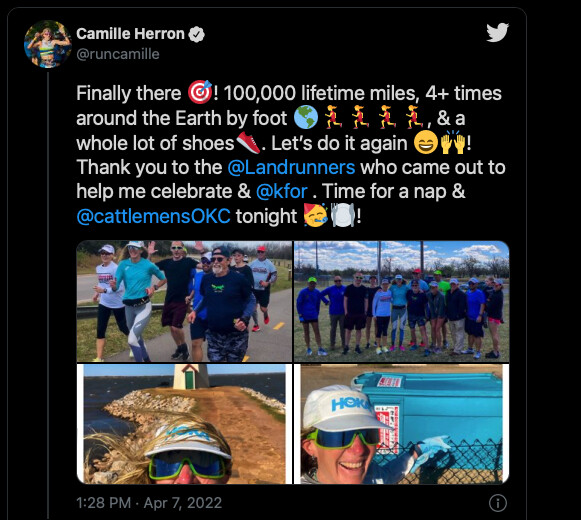
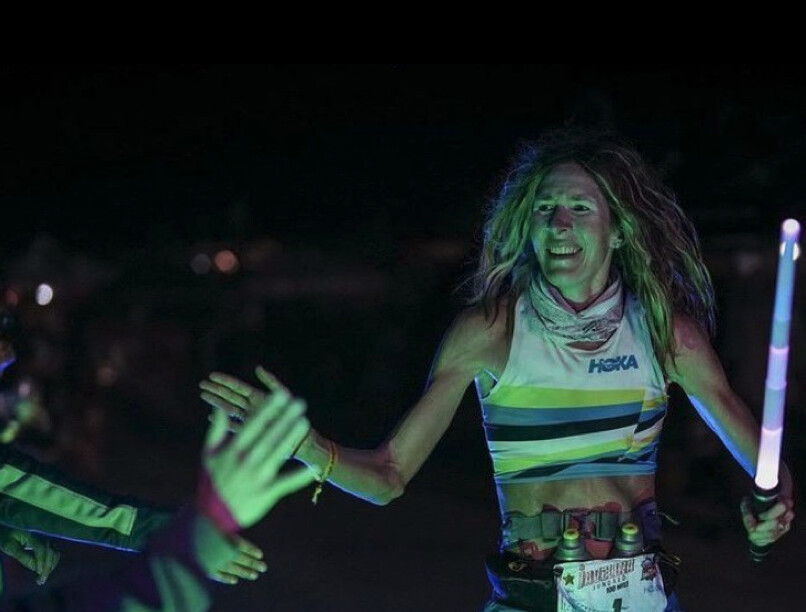
As she finished her run, Herron was ecstatic about the achievement but immediately said “Let’s keep going,” in typical ultrarunner fashion.She claimed she will celebrate this accomplishment with a steak dinner and possibly post-run donuts.
In February, Herron broke her 100-mile world record time of 12:42:40 at the Jackpot Ultras in Nevada. She is also the only ultrarunner to win all three of the 50K, 100K, and 24-hour World Championships.
by Running Magazine
Login to leave a comment
Camille Herron Breaks Her Own 100-Mile World Record- And Then Some
"What a difference a year makes."
That was the first thing Camille Herron had to say when she reflected on her latest record-breaking run at the Jackpot Ultra Running Festival on February 19. Herron, a new addition to the master's division (as of December 2021), opened her 2022 campaign with a commanding performance.

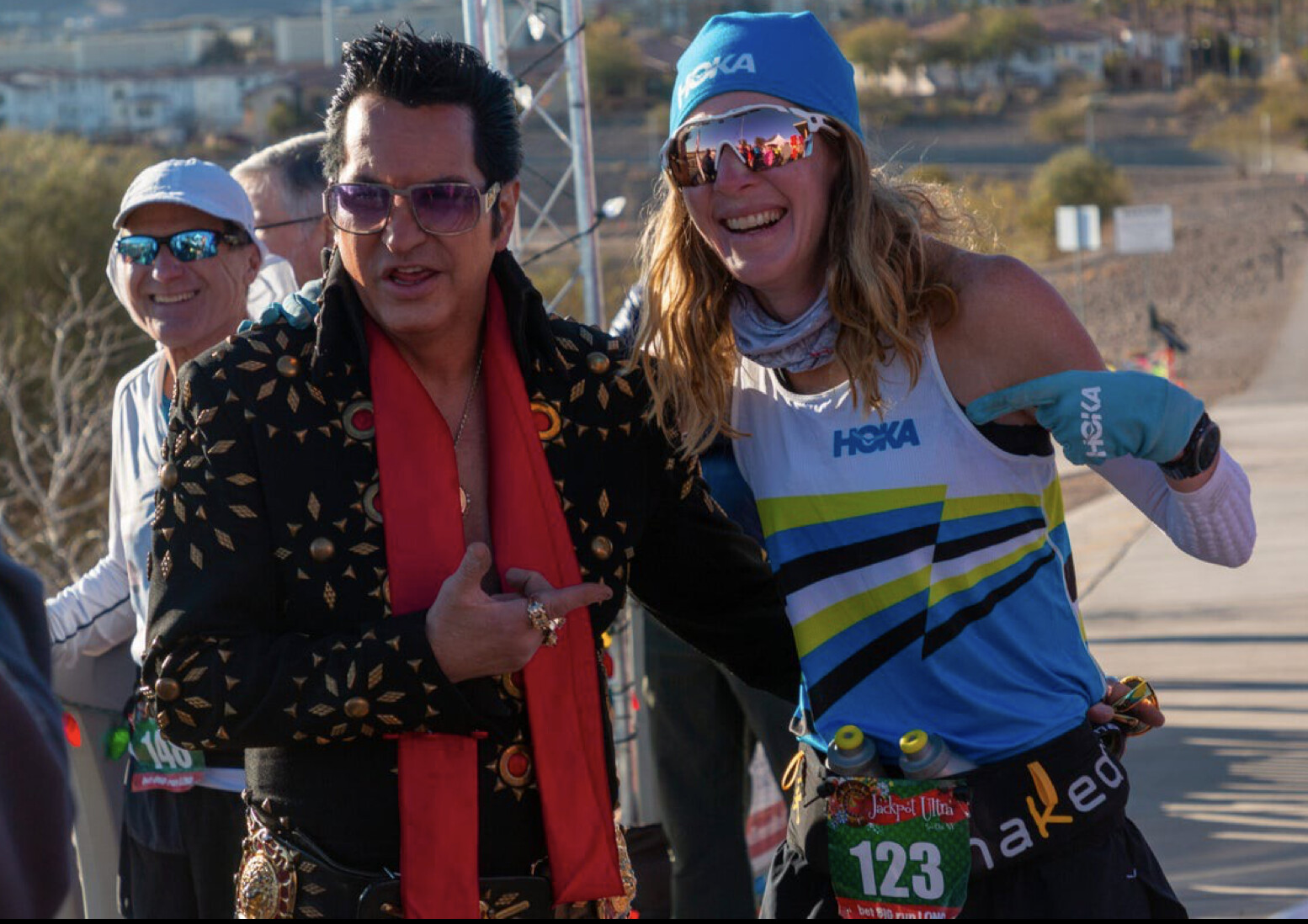
She was the outright winner of the 100-mile race and the USATF 100-mile national champion; she set a 50-mile age group world record (6:08:24), a 12-hour world record (94.5 miles), and a 100-mile world record (12:41:11, breaking her own previous record of 12:42:40 from the 2017 Tunnel Hill 100).
For Herron, this performance, coupled with dominant wins last fall at the Javelina Jundred and Desert Solstice, is just what the doctor ordered after a tough 2021.
"I ran the Jackpot 100 last year and I just didn't feel good during that race," Herron says. "It was the fourth race that I just didn't feel right. I'd hit 40 miles and want to lie down and sleep. That followed me to Western States."
That tired feeling turned out to be a result of high iron levels and low levels of magnesium and vitamin B12. The iron overload was the main culprit, which she learned from InsideTracker data. Most endurance athletes commonly have low iron levels. The result of Herron's iron excess was anemia-like symptoms.
"I was feeling so bad. My breathing was heavy, I was extremely tired, and it wasn't normal race fatigue," Herron says. "It was pretty scary."
To normalize her iron, Herron worked with her longtime friend and dietitian, Jackie Dikos. Together, they mapped out a plan starting in July. By mid-August, Herron "had [her] mojo back and was feeling energized."The jumpstart catapulted Herron back into training, hitting paces she hadn't seen in years. That's when she got the bug to go after her 2017 100-mile record.
The record was something she'd contemplated for 2020 before the pandemic hit. She nearly went for it after feeling better in 2021 at a race in Hungary, but food poisoning pulled her from the start. That was after a hip flexor injury cost her a six-day race in Germany.
Fast forward to Javelina Jundred and Desert Solstice, Herron was looking for redemption.
"Going into Javelina, I was fired up," Herron says. "I was overdue for a good race. I broke the course record by like 49 minutes. I wanted to keep that fire going."Hitting the Jackpot
A week and a half after moving home to Oklahoma after three years in Arizona, Herron was on a plane with her husband and coach, Conor Holt, to Las Vegas for the Jackpot 100. Most of all, she wanted redemption from her 2021 outing there. Breaking 13 hours sounded good, but if her record was in reach, she wanted it.
That's where she found herself at the 50-mile mark. Her 6:08:24 split was enough for the 40-44 age group world record, and that had her on pace for the 100-mile record. She kept her foot on the pedal.
"Between the elevation gain and the heat, it was much more fatigue than I felt in previous world records," Herron says. "I was trying to assess how my body felt at 50, and I was feeling quite a bit of fatigue. I had to wrap my head around having to endure the second half of the race."
Battling minor issues from the heat and a nosebleed, Herron troubleshot everything the race threw at her. Around mile 75, she caught race leader Arlen Glick.
Herron saved time by only stopping once during the entire race. That lone,15-second break came around mile 70, when she shotgunned a non-alcoholic beer: an Upside Dawn Golden from Athletic Brewing."You know when you do long runs and you have a craving for a beer? Because of the iron overload, I've had to cut out alcohol. So, I've been hooked on non-alcoholic beer," Herron says. "I've never done a beer mile, but I guzzled it pretty fast."
With three laps to go of the 85 total, Herron had already secured the 12-hour record. Doing the math, she realized she was 20 seconds under her 100-mile world-record pace. There was no margin for error. With three miles to go, Herron dropped the hammer.
"I went into beast mode," she says. "I thought about Keira D'Amato chasing down Deena Kastor's marathon record. [Keira] powered through those last miles. I channeled that and thought back to what my high school track coach would say, 'Lift your knees. Drive your arms.'"
Holt cheered Herron on until she came across the line in 12:41:11 for the new world record and the outright win. In the final three miles, she went from a 20-second cushion to break the record by almost 90 seconds. Her final mile was 7:08, and her average pace over the full 100 was 7:37.
"As a woman, you can't be afraid that you could win the race," Herron says. "I've done it a few times now. It was added motivation as I was going after [eventual men's winner] Arlen Glick. Everything worked out. Pretty much, every goal I had, I achieved. I was overjoyed."Eyes on the Prize
Herron is back to the top of the 100-mile ranks as she enters her Western States training block. At 40, she's more fired up than ever to deliver the best performances of her career.
"I can remember hitting my 30s and thinking I'm on some downward slope," Herron says. "We need to shift that mindset. When I look at my training logs from 10 years ago, it's crazy. I used to do long runs every Sunday. As I've gotten older, I've taken better care of myself. If I do one or two long runs a month, that's good enough for me. I've said, women ultrarunners age like fine wine. What I may not have in leg speed anymore, I make up in physical and mental strength to keep going."
Herron credits changes in her diet and training, and the addition of a squat rack, for her continued strength as she enters into the master's ranks. These are the tools she plans to use in preparation for Western States. If all goes to plan, she will be a force to be reckoned with come June.
"I just feel like I have to keep going back and try to have a magical day there," Herron says. "Now that I've run the entire course, it's gonna be fun to go back and push my human limits. I'm hoping to have that dream day."
by Trail Runner Magazine
Login to leave a comment
Kilian Jornet Announces Return to UTMB for 2022
"Return of the King."
That was the title of a YouTube video tweeted out by UTMB on February 23 to announce Kilian Jornet's return to the legendary race in Chamonix.
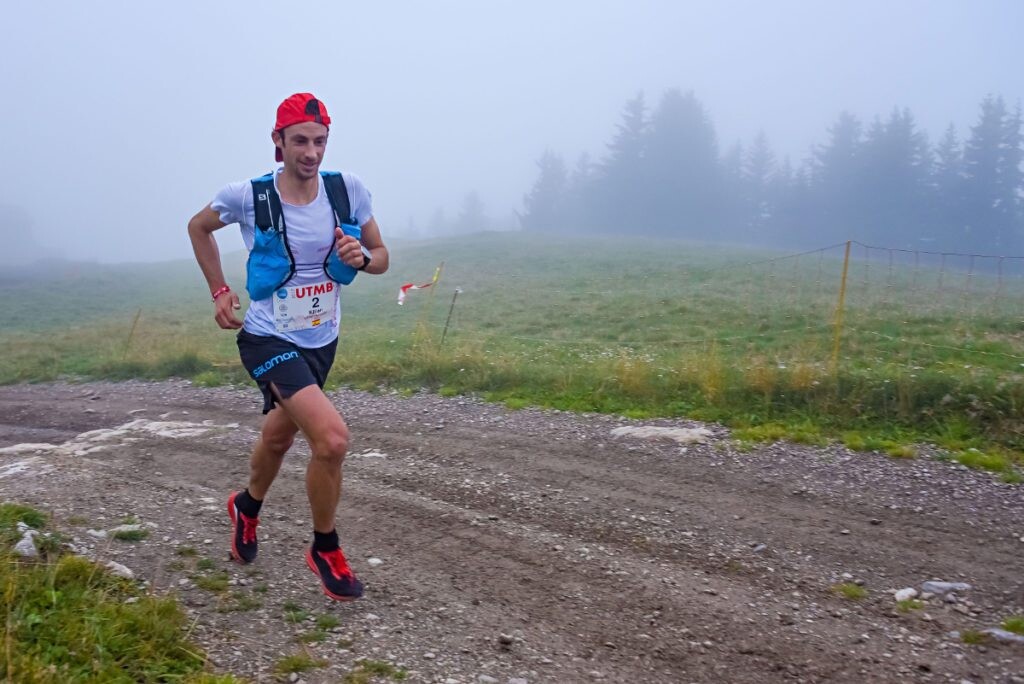
"This year I'm coming back to UTMB," said Jornet, in a clip sprinkled with quotes touting him as the sport's greatest of all time. "Why, you will ask me: it's because I really love to suffer. I really love the pain in the legs, the feet, and everywhere in the body. That's what long distance is about. To enjoy the pain!"
It will be Jornet's first time back at the 105-mile (170K) race since 2018, when he dropped 11 hours in. He has raced UTMB six times since 2008, including victories in 2008, 2009, and 2011. In 2017, he broke the race's course record while finishing second to Francois d'Haene's 19:01:54 and becoming the second man ever to break 20 hours on the course in 19:16:59.
The 2022 edition of UTMB is slated for August 21-28, with the 105-mile flagship race kicking off on Friday, August 26. It will come just six weeks after Jornet's appearance at the Hardrock 100 on July 15, where he will go after another win to complement those from 2014, 2015, and 2017 (as well as a co-victory with Jason Schlarb in 2016, when the two finished hand-in-hand).
Other athletes expressed their excitement for Jornet's return in the Twitter video.
"It would be a bit empty if Kilian wasn't there, to be honest," said Tim Tollefson, who will also race UTMB in August. "He is the king of the sport, so it just feels right to have him on the line."
Once August rolls around, Jornet will compete against one of the strongest fields UTMB has ever seen. Two-time champion Xavier Thevenard of France and an American contingency including Tollefson, Jim Walmsley, Jared Hazen, Sage Canaday, Dylan Bowman, Jason Schlarb, and Cody Reed will all be aiming for a podium finish. On the women's side, Americans Camille Herron, Brittany Peterson, and Hillary Allen will be in attendance, as well as Beth Pascall of the U.K., Audrey Tanguy of France, and Ragna Debats of the Netherlands.
"UTMB always has such a big level, so many good athletes, so I really love this competition," said Jornet in the video announcement. "I'm really looking forward to being at UTMB again this year."
by Trail Runner Magazine
Login to leave a comment
American Jim Walmsley will be taking another stab at UTMB
The 2022 edition of the Ultra-Trail du Mont-Blanc (UTMB) is seven months away, but the elite fields have been made official. Although he has never done better than fifth (and that was back in 2017), American Jim Walmsley will be gunning for a podium finish again on Aug. 28, along with seven of Canada’s top ultrarunners, including last year’s third-place finisher, Mathieu Blanchard. Check out the top athletes who will be racing this year.
UTMB — men

Blanchard, who is from France but lives and trains in Montreal, is among the top men who will be competing this year. Going into the race, Blanchard says his goal is to win the race, and he’ll have two main focuses for his training: “the first will be to prepare myself mentally, to visualize, to accept this possibility of a big goal because I still have trouble believing it today,” he says. “The second will be to build a logical race path to prepare for this race, choices of reason rather than choices of the heart.”
Last year’s second-place finisher, Aurélien Dunand-Pallaz of France will be returning, along with 2019 UTMB winner, Pau Capell of Spain. Walmsley, whose top finish was fifth in 2017 but who has won the Western States 100 for three consecutive years (2021, 2019, 2018) will also be challenging for a podium spot, as will France’s Xavier Thévenard, who has won UTMB three times (2018, 2015, 2013) and placed second in 2019. Nine other recent top-five finishers will also be joining them on the start line.
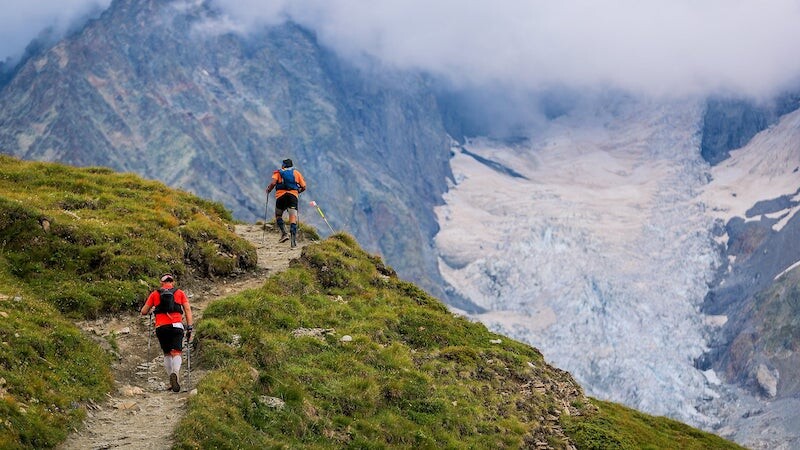
Notably absent from the start list is last year’s winner, François D’Haene and three-time UTMB champion, Kilian Jornet.
UTMB – women
Canadian ultrarunning fans will have plenty to cheer about in the women’s race in August. Three top Canadians will be on the start line, including Montreal’s Marianne Hogan, who won the 2022 Bandera 100K and placed second at the Ultra-Trail Cape Town 100k. Toronto’s Claire Heslop, Canada’s top finisher in 2021, will be joining Hogan, along with Alissa St. Laurent of Moutain View, Alta., who placed fifth in the 2018 UTMB TDS 145K in 2018 and sixth at UTMB in 2017.
“My dream result would be a top 10 at UTMB,” says Hogan, “so I will definitely shoot for that. A lot can happen come race day, so I will make sure to show up to the start line as ready as possible.”
Other top contenders on the women’s side include Camille Herron, who won the 2021 Javelina Jundred Mile (and broke the course record) in 2021 and set the 24-hour world record in 2019, Anna Troup, who won the 2021 Lakeland 100 Mile and the 2021 Spine Race Summer Edition 268 Mile, Sabrina Stanley, two-time winner of the Hardrock 100 and Beth Pascal, winner of last year’s Western States and two-time top-five finisher at UTMB.
There will be five other recent top-five finishers on the start line as well, but running fans will be disappointed to hear the two-time winner Courtney Dauwalter, 2019 third-place finisher Maite Maiora, among several other past winners, will not be in Chamonix on August 28.
CCC — women
There will be three elite Canadian women in the 100K CCC, including Victoria’s Catrin Jones, who placed in the top-10 at the 2019 Comrades Marathon 90k and holds the Canadian 50-mile and six-hour records. She will be joined by Ailsa MacDonald of St. Albert, Alta., who won the 2020 Tarawera 100 Mile and the Hoka One One Bandera 100K, and placed sixth in the CCC in 2019. Rounding out the Canadian squad will be Vancouver’s Kat Drew, who was third at the 2019 Bandera 100K, first at the Canyons 100K and eighth at Western States in 2019.
Other notable runners in the CCC include New Zealand’s Ruth Croft, who won the 2021 Grand Trail des Templiers 80k, placed second at the 2021 Western States 100 and won the UTMB 55K OCC in 2018 and 2019. France’s Blandine L’hirondel will also be looking to land on the podium after winning the OCC last year.
by Brittany Hambleton
Login to leave a comment
North Face Ultra Trail du Tour du Mont-Blanc
Mountain race, with numerous passages in high altitude (>2500m), in difficult weather conditions (night, wind, cold, rain or snow), that needs a very good training, adapted equipment and a real capacity of personal autonomy. It is 6:00pm and we are more or less 2300 people sharing the same dream carefully prepared over many months. Despite the incredible difficulty, we feel...
more...Camille Herron breaks course record at Javelina Jundred 100-miler
The 19th annual Javelina Jundred took place this weekend in Arizona’s McDowell Mountain Regional Park, and Camille Herron won the women’s race and placed fourth overall, setting a new course record in the process of 14:03:23. Arlen Glick of Ohio won the men’s race in 13:14:51, his ninth win at the 100-mile distance since his first one in 2018.
The 100-mile course is made up of five loops run on the Shallmo, Pemberton and Cinch trails and features rolling single track through the Sonoran Desert. There is also a 100 km event in which runners complete three loops, as well as a single loop race, called the Jackass 31K. Each loop climbs slowly from the start to the finish, for a total elevation gain of about 1,580 feet (457m) for each loop.
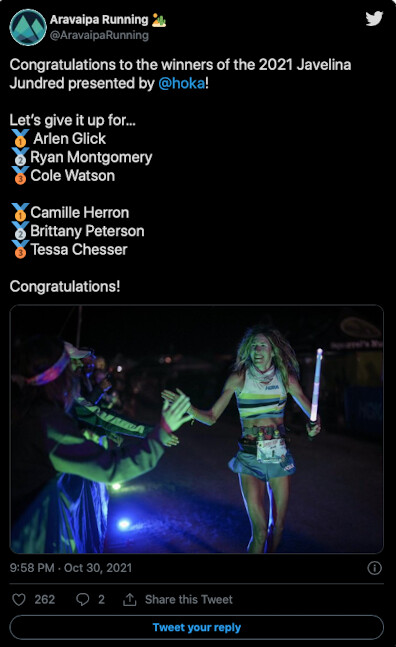
Herron set a strong pace right from the start line and didn’t let up for the entire race, creating a nearly 10-minute lead by the 22-mile mark. She crossed the finish line fourth overall, more than 90 minutes ahead of the next-best woman, in 14:03:23. This time smashes the previous course record of 14:52:14, set by Devon Yanko in 2015. Idaho’s Brittany Peterson, who was the fourth woman at Western States in June, managed to stay within 30 minutes of Herron for more than half of the race, but was not able to keep up that pace all the way to the finish, taking second place and eighth overall in 15:47:23. Tessa Chesser of Arizona rounded out the women’s podium in 10th overall in 16:25:05.
by Running Magazine
Login to leave a comment
2021 Western States 100 Women’s Race
With three women inside the top-10 overall, some of the fastest times ever run on the course, and tight competition wire to wire, the top-10 women changed Western States 100 history—and women’s ultrarunning history—this weekend.
Numerous international women chose to make the trip to the States for States. Among them were Beth Pascall (pre-race interview) from the U.K., who’d spent the past 10 weeks in the U.S. after running the Canyons 100k. Ragna Debats (pre-race interview), who is from the Netherlands but who lives in Spain, was present, running her first Western States, as was Ruth Croft (pre-race interview), all the way from New Zealand, lining up for her first attempt at 100 miles. On the domestic side, defending champion Clare Gallagher (pre-race interview), Brittany Peterson (pre-race interview), Addie Bracy, Camille Herron, and so many more women all hoped to have a good run. What ensued was tight racing from start to end with impressive performances all around.
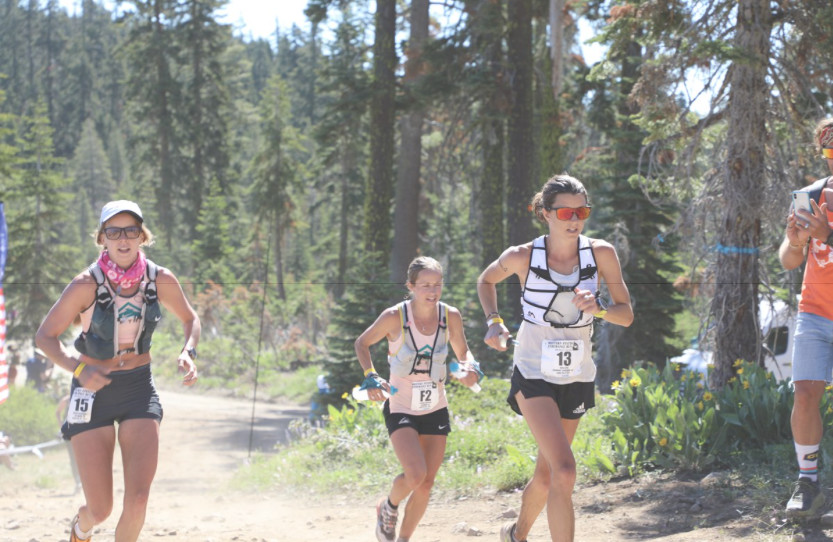
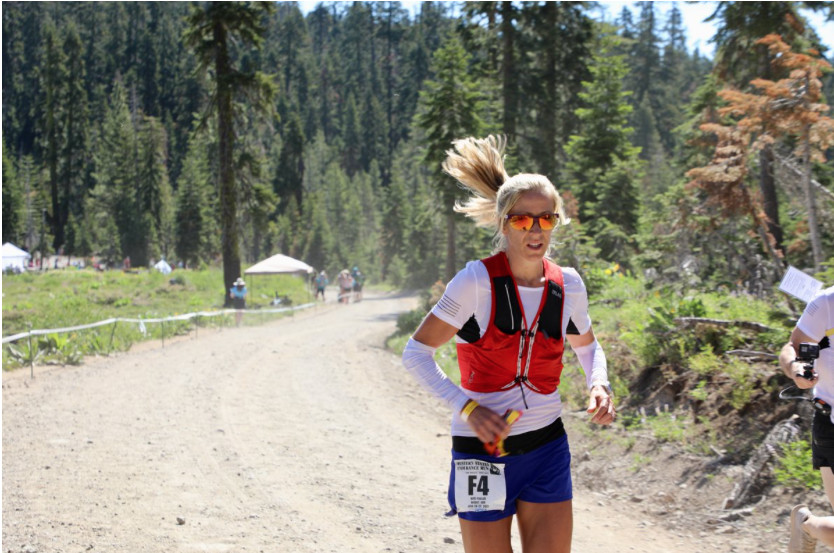
The race started under clear skies, a setting moon, and a comfortable 53 degrees Fahrenheit. Fast out of the gate, France’s Audrey Tanguy was the first over the Escarpment, mile 3.5, followed a minute back by Herron. Gallagher, Pascall, and Bracy filled out the top five just two minutes back from Tanguy. All the women received enthusiastic encouragement from the resident Yeti of Olympic Valley who’d come out to spectate.
By Red Star Ridge at mile 15, Pascall had moved to the front. After finishing just off the podium in fourth in 2019, she was eager to move up in the final standings and wasted no time making her intentions known. Tanguy, Bracy, and Gallagher gave chase, all within 90 seconds, and a long string of women trailed just as closely behind.
By Robinson Flat at mile 30, we understood that Pascall meant business. Looking relaxed, she’d moved to just three minutes off of course-record pace. Bracy and Debats continued to chase, holding the gap to within five minutes. In the next eight miles, Pascall went from three minutes over record pace to nine minutes under it. She flew in and out of the Dusty Corners aid station in a minute.
Halfway through, many of the top women were looking comfortable. Pascall even claimed that it didn’t feel too hot. Still, the heat must have been affecting her as she slowly lost some time on the course-record pace. Debats continued a steady march forward, keeping the gap at a manageable size. Katie Asmuth, now running in third, received the award for the happiest runner through midway, and the one with the hat with the most flair.
By mile 61, Pascall had worked herself into 10th overall, but the full group of top-10 women were running within about 45 minutes of each other. And at 10.5 hours in, there were 19 women in the overall top 40, a testament to the depth and talent in the field.
At mile 71, along the infamous Cal Street, the race was on. Pascall came through at 11:51, moving up to ninth overall with a fast transition. At just 14:15 back, Debats barely stopped at the aid station. Two minutes later, Asmuth ran through, only grabbing ice. Croft followed less than four minutes in arrears, and Peterson came through flying two minutes later. Tanguy left a mere four minutes after that. Count them! That’s six women within 27 minutes of each other almost three quarters of the way through a 100 miler. What, what?
In the next 14 miles, Croft made her move, coming through Auburn Lake Trails, mile 85, in second, just 18 minutes down on Pascall, but only a mere two minutes up on determined Dabats. A charging Peterson moved by Asmuth. With the top-six women now within 45 minutes of each other at mile 85, there was still plenty of racing to be done in the final miles.
But no one could stop Pascall. Consistent from Olympic Valley to Auburn, she finished in 17:10:41, the second-fastest time in women’s history. She was also seventh overall, continually moving up through the field as the day wore on.
Croft finished a strong second in the women’s field and ninth overall with a time of 17:33:48. Debats would hold on to finish third with a time of 17:41:13, putting three women into the top-10 overall.
This trio was followed by Peterson and Asmuth rounding out the top-five women. For the balance of the women’s top 10, sixth place was ultimately Tanguy, her first Western States finish. This year, seventh place belongs to Emily Hawgood, the Zimbabwean who lives in the U.S., and who has a charmer of a story. Hawgood tried three Golden Ticket races to gain Western States entry this year, achieving it on the third try. In eighth was Camelia Mayfield, who follows up on her fifth-place finish in 2019 with another smartly run race in this gnarly year. Keely Henninger gains the F9 bib in her debut 100 miler, and 10th place belongs to none other than Kaci Lickteig (pre-race interview), whose finish marks her seventh at this event.
Together these 10 women finished within the top-21 overall. Let’s just pause a moment to let that significance soak in.
And to bring this full circle, Gallagher and Herron crossed the line outside of the top 10 having their own challenging days. And Bracy threw in the towel at mile 62.
by I Run Far
Login to leave a comment
The Western States 100 Is Back and It’s Going to be HOT!
Western States is famously competitive - and this year is shaping up to be one of the toughest competitions yet with hot temps, and a stacked field.
Jim Walmsley and Magda Boulet will be back at the Western States Endurance Run this week.
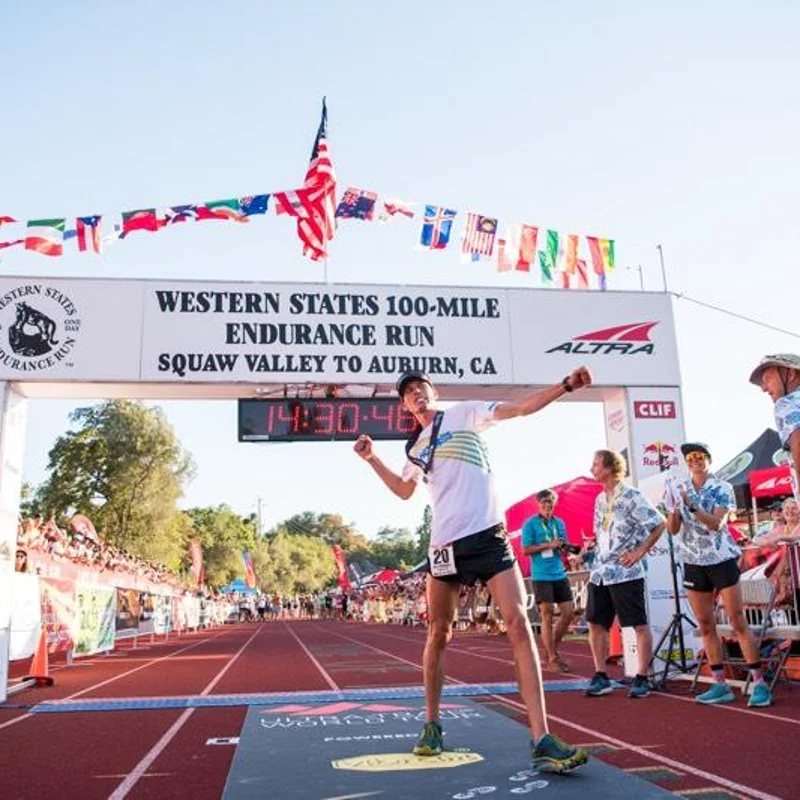
And so will Clare Gallagher, Patrick Reagan, Max King and Brittany Peterson. And, so too is race pioneer Gordy Ainsleigh and 312 other inspired runners who have been training for more than a year and a half to get to the starting line. In fact, we’re all heading back to the Sierra Nevada range this weekend — even if vicariously — to what feels like a bit of normalcy returning.
After a year mostly away from the trail racing running scene, things are starting to feel like old times. With stacked men’s and women’s fields, scorching heat in the forecast and last year’s Covid-19 hiatus hopefully mostly behind us, it’s definitely the event the ultrarunning community has been looking forward to. The race begins at 5 a.m. PST on June 26 and it looks like it’s going to be an epic one. (Follow via live tracking or the live race-day broadcast.)
“Yeah, it will be good to be there and see people and actually be in the race,” says Walmsley, who won the race in 2018 and 2019 in course-record times. “It’s been an odd year.”
Odd for sure, but with deep men’s and women’s fields, hot weather, dusty trail conditions and the late June gathering of a few hundred runners on this hallowed ground feels somewhat normal. The mountains and canyons in and around Olympic Valley northwest of Lake Tahoe have been a sacred place for the native Washoe people for thousands of years before Gordon Ainsleigh’s first romp over the Western States Trail in 1974.
It’s been an especially odd year for Walmsley, who, for the second straight year, had planned to use the first half of his year training for the 90K Comrades Marathon in South Africa. But that was canceled last year (with just about every other big race, including the Western States 100) and this year, too.
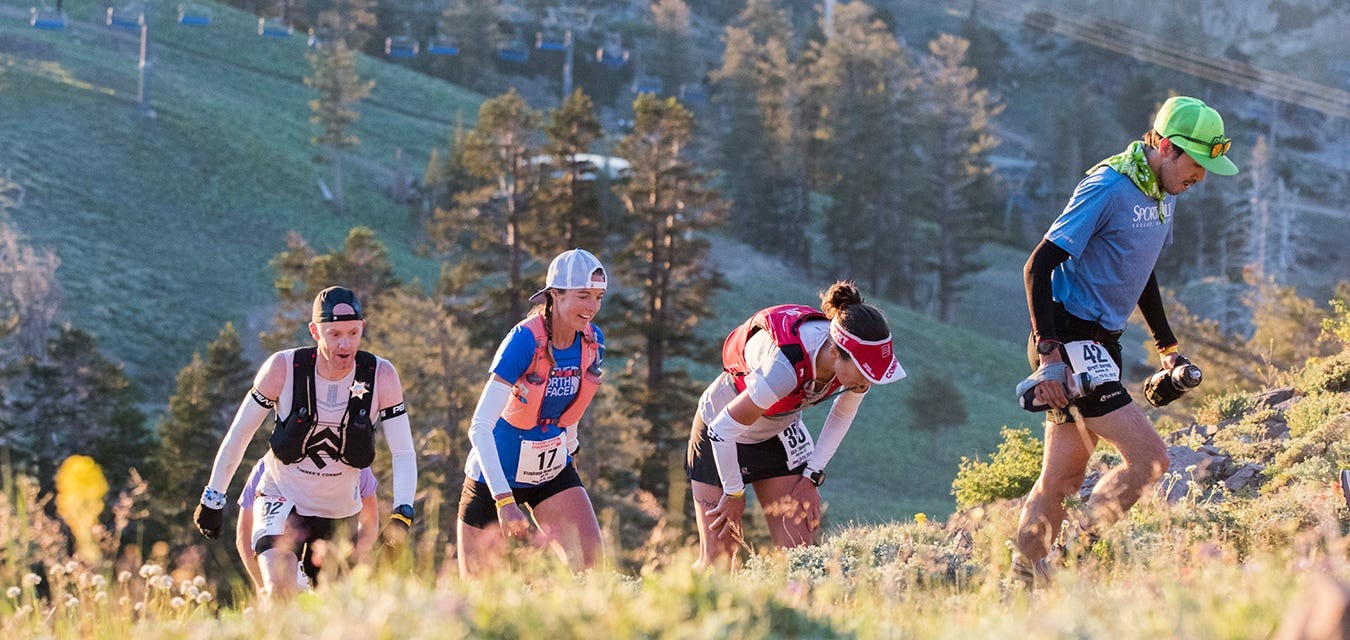
So instead, after setting a new U.S. 100K road record in January, he took a sponsor’s entry into the Western States 100 from HOKA One One and will be once again lining up in America’s most celebrated trail running race. With notable first-timers Tim Tollefson and Hayden Hawks in the mix along with Walmsley, Reagan, King, Matt Daniels, Alex Nichols, Kyle Pietari, Mark Hammond, Stephen Kersh, Jeff Browning and Jared Hazen all returning with previous top-10 finishes, on paper anyway, the men’s race is shaping up to be one of the most competitive in recent memory or maybe ever, even though it’s comprised entirely of domestic runners.
The women’s race might be even more competitive with former champions Boulet, Gallagher (2019) and Kaci Lickteig (2016) leading the way, plus elite American runners Camille Herron, Addie Bracy, Camelia Mayfield and Keely Henninger and international stalwarts Ruth Croft (New Zealand), Audrey Tanguy (France), Beth Pascall (UK), Emily Hawgood (Zimbabwe), Kathryn Drew (Canada) and Ragna Debats (Spain) joining the fray.
Who are the favorites? It’s hard to tell. Most of those runners, including Walmsley and Boulet, have admitted to having dealt with some minor injuries, inconsistent training, a lack of motivation and other setbacks over the crazy year that was. Based on what runners have been reporting, it seems like most are just eager to get back and immerse in a competitive 100-miler and see what they can do.
However, one of the keys will certainly be who can survive the heat the best. The forecast is calling for high temperatures in the upper 80s to the high 90s on Saturday after and the canyons between Robinson Flat and Michigan Bluff could even reach over 100 degrees.
Walmsley has said he’s dealt with some IT band issues and has focused mostly on running with a lot of vert, focusing on getting optimal recovery, strength sessions and body work, as well as spending as much time running in extreme heat as possible. That includes running and hiking countless laps to the summit of 9,298-foot Mt. Elden in Flagstaff, averaging 20 to 25 hours per week on the trails and also spending a lot of time on a bike trainer.
But he’s also spent a lot of time in the infrared sauna in his home and spent time with family in the Phoenix area, where he ran in the afternoons amid 115- to 120-degree heat.
“The heat training is kind of lucky for me, because growing up in the heat in Arizona, I didn’t know any different,” Walmsley says. “I just thought everyone was roasting in the heat. It’s what I grew up with and I try to lean into those memories and embrace the heat.”
Boulet, who lives in Berkeley, Calif., has also gone out of her way to train in the heat. While she says her build-up has been inconsistent compared to previous years, she’s been doing a lot of climbing and descending in the heat, and also working on box jumps to strengthen her legs for the long descent into Auburn. She says a recent 40-mile run up 3,849-foot Mt. Diablo east of Berkeley, is a good indicator that she’s ready to roll.
“I’ve definitely been spending more time in the heat lately, which is something I personally don’t enjoy running in,” says Boulet, who won the race in 2015, DNF’ed in 2016 and placed second in 2017. “But I know the importance of preparing in the heat and falling in love with running in the heat by race day. You can be as physically as ready as possible in terms of your fitness, but if you don’t have the heat training and you’re trying to tackle some of the parts of the canyons that are in the middle of the race, It’s really tough.”
Given the extreme heat, it’s not likely that anyone will challenge Walmsley’s 14:09 course record set two years ago, when it was in the low-80s and cloudy on race day. But there’s also no snow on the course this year, so the early sections that have previously forced runners to hike and walk early on will likely be faster, and that will likely result in fatigue that will slow them down in later stages of the race.
“You’ve got to take what the course gives you,” Walmsley says. “I’ve learned that you don’t fight the course where you shouldn’t. I have some splits in mind that would get me there under 15 hours and maybe close to 14:30, but it’s going to be all about feeling out what the course is giving me, following those guidelines and not forcing it. Because anyone who forces it in that heat will be doomed.”
by Outside Online (Brian Metzler)
Login to leave a comment
Western States 100
The Western States ® 100-Mile Endurance Run is the world’s oldest and most prestigious 100-mile trail race. Starting in Squaw Valley, California near the site of the 1960 Winter Olympics and ending 100.2 miles later in Auburn, California, Western States, in the decades since its inception in 1974, has come to represent one of the ultimate endurance tests in the...
more...Western States 100 preview: pre-race favourites
Women’s field - There are three former WSER champions entered in this year’s race: Gallagher, who won in 2019, 2016 winner (and 2019 third-place finisher) Kaci Lickteig and 2015 champ Magdalena Boulet. All three women are American, and they’ll be joined on the WSER start line by several of their high-profile compatriots. Brittany Peterson, the second-place finisher from 2019, will be in the race for just the second time in her career, along with Nicole Bitter, the seventh-place woman in 2019, which was also her WSER debut.
Pascall and Drew headline the international entries in the women’s field. Pascall, who hails from Great Britain, finished fourth in 2019, and she is a serious threat to take the win this year. Earlier in 2021, she won the Canyons 100K in California, and in 2020, she broke the Bob Graham Round FKT in her home country. She has also recorded two top-five finishes at the past two editions of the famed Ultra-Trail du Mont-Blanc. Pascall is in incredible form, and she’s a threat to run away with this year’s race, which would make her the first non-American woman to win the WSER title since Ellie Greenwood (who is British but lives in Canada) in 2012.

This will be Drew’s second WSER appearance, and she, too, has what it takes to improve on her result from 2019. She has several big wins to her name, including top finishes at the Chuckanut 50K and Canyons 100K in 2019. She has also represented Canada at the IAU Trail World Championships. B.C.’s Sarah Seads will also race in California, making her first WSER appearance.
When it comes to debut WSER runs, there are several big names to watch. New Zealand’s Ruth Croft is having a tremendous season, with a pair of big wins. Her first came at the Tarawera Ultra in Rotorua, New Zealand, where she won the overall title in the 102K race. A few months later, she was in action in Australia, where she won a 50K race in Katoomba, a town west of Sydney, at Ultra-Trail Australia.
France’s Audrey Tanguy is also running WSER for the first time. Tanguy has had a great year so far, first winning the Hoka One One Project Carbon X 2 100K event in Arizona in January and then following it up with a third-place finish at the Canyons 100K in April. She is also a two-time UTMB TDS winner (2018 and 2019).
Finally, there’s American ultrarunning star Camille Herron. The owner of multiple American and world records, Herron is another threat for the win at WSER. She has won the Comrades Marathon, multiple world championships and many other races around the world, and it shouldn’t be a surprise if she adds a top WSER finish to her resume.
Men’s field - The only WSER champion in the 2021 field is Walmsley, who has won the past two editions of the race. In 2018, he won in 14:30:04, and a year later, he set the course record with an incredible 14:09:28 run. This year, he has raced one ultramarathon, Hoka’s Project Carbon X 2, which he won in 6:09:26, coming extremely close to breaking the 100K world record of 6:09:14. That was several months ago, but if his fitness is anywhere close to where it was at that race, he should be able to lay down another historic WSER run.
Walmsley’s fellow American Jared Hazen, the 2019 runner-up, is also set to race this year. In 2019, Hazen ran a remarkable time of 14:26:46, which would have easily won him the WSER title if Walmsley hadn’t been in the race. He’ll be looking to take that final step onto the top of the podium this year.
A pair of Americans making their WSER debuts are Tollefson and Hayden Hawks. Tollefson has several big wins to his name in the past year alone, including titles at the 2020 Javelina Jundred 100 Miler and USATF 50-Mile Trail Championships. He has also recorded victories at the 120K Lavaredo Ultra-Trail race in Italy in 2019 and the 100K Ultra-Trail Australia in 2017, along with a pair of third-place finishes at UTMB in 2016 and 2017.
Hawks has won many races throughout his career, including the JFK 50-Miler in 2020. He set the course record of 5:18:40 at that race, beating Walmsley’s mark of 5:21:28 from 2016. The WSER course is twice as long as the JFK 50, but Hawks has proven he can match or better Walmsley’s efforts, so it will be interesting to see how he fares in California.
by Running Magazine
Login to leave a comment
UTMB announces stacked fields for 2021 races
The 2021 edition of the Ultra-Trail du Mont-Blanc (UTMB) is still months away, but the fields for the August race are officially set. After UTMB organizers cancelled their event in 2020 due to COVID-19, any race would have been exciting to watch this year, but fans will be treated to a pair of stacked lineups in the men’s and women’s fields. With six former UTMB champions and many other world-class runners set to race in Chamonix, France, later this year, the storied 170K ultramarathon looks like it will be can’t-miss action.
The women’s race
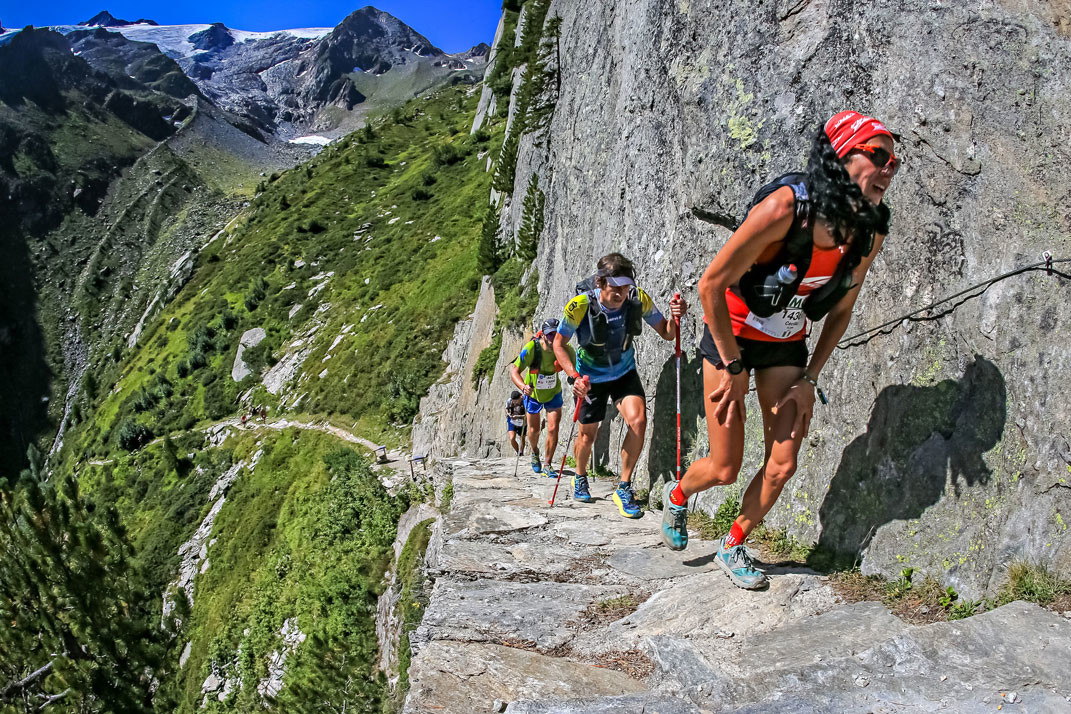
Former UTMB champs Courtney Dauwalter of the U.S. and Francesca Canepa of Italy headline the women’s race. Dauwalter is the reigning UTMB champion after her win in 2019, which was her first time running the race. She is widely recognized as one of the best ultrarunners on the planet, and she will be extremely tough to beat in Chamonix.
RELATED: UTMB adds to international race lineup with Thailand ultramarathon
Canepa won the women’s UTMB crown in 2018, and she also placed second in 2012. Other former top UTMB finishers on the start list for 2021 include Japan’s Kaori Niwa (fourth in 2017 and the winner of the 2019 Oman by UTMB 170K ultramarathon), Uxue Fraile Azpeitia of Spain (three-time UTMB podium finisher) and Beth Pascall of the U.K. (fourth- and fifth-place finishes in 2018 and 2019).
Multiple world record holder Camille Herron is also set to race in Chamonix. She has won ultramarathons around the world, including the Comrades Marathon in South Africa in 2017 and the Tarawera 100-miler in New Zealand in 2019, and she certainly has what it takes to win or place high in the overall UTMB standings.
Ailsa Macdonald is the lone Canadian in the elite UTMB women’s field. With big results like her wins at the Golden Ultra in B.C. in 2018 and the Tarawera 100 in 2020, Macdonald is another podium threat. She also has experience in Chamonix, having placed sixth in the UTMB’s CCC 101K ultra in 2019.
The men’s race
On the men’s side, there are four former UTMB winners: Pau Capell of Spain (winner in 2019) and French athletes François D’Haene (won in 2012, 2014 and 2017), Ludovic Pommeret (won in 2016) and Xavier Thévenard (won in 2013, 2015 and 2018). The past eight UTMB crowns belong to these four men, and they’re all capable of extending that streak to nine straight this year.
Jim Walmsley and Tim Tollefson are the top two American hopes on the men’s side. Tollefson made the UTMB podium in 2016 and 2017 with a pair of third-place finishes, while Walmsley has only raced in Chamonix once, running to fifth place. As Walmsley showed recently in a 100K world record attempt (he ran 6:09:26, missing the record by 12 seconds), he is in incredible shape this year, and while August is still months away, he has to be considered a favourite.
Also on the start list is the U.K.’s Damian Hall, who finished in fifth at the 2018 edition of UTMB. Hall is coming off a fantastic year of running that featured several prominent FKTs, and although he hasn’t raced in a while, he shouldn’t be counted out come August.
Finally, Canada will be represented by Mathieu Blanchard. Born in France, Blanchard now lives and trains in Montreal. He has raced in Chamonix before, running to a 13th-place finish in 2018, and in 2020 he ran onto the podium at the 102K Tarawera Ultra race.
UTMB is set to run from August 23 to 29, 2021.
by Running Magazine
Login to leave a comment
Six former UTMB champs are on the start lists for the famed ultramarathon's comeback in August
The 2021 edition of the Ultra-Trail du Mont-Blanc (UTMB) is still months away, but the fields for the August race are officially set. After UTMB organizers cancelled their event in 2020 due to COVID-19, any race would have been exciting to watch this year, but fans will be treated to a pair of stacked lineups in the men’s and women’s fields.
With six former UTMB champions and many other world-class runners set to race in Chamonix, France, later this year, the storied 170K ultramarathon looks like it will be can’t-miss action.
The women´s race

Former UTMB champs Courtney Dauwalter of the U.S. and Francesca Canepa of Italy headline the women’s race. Dauwalter is the reigning UTMB champion after her win in 2019, which was her first time running the race. She is widely recognized as one of the best ultrarunners on the planet, and she will be extremely tough to beat in Chamonix.
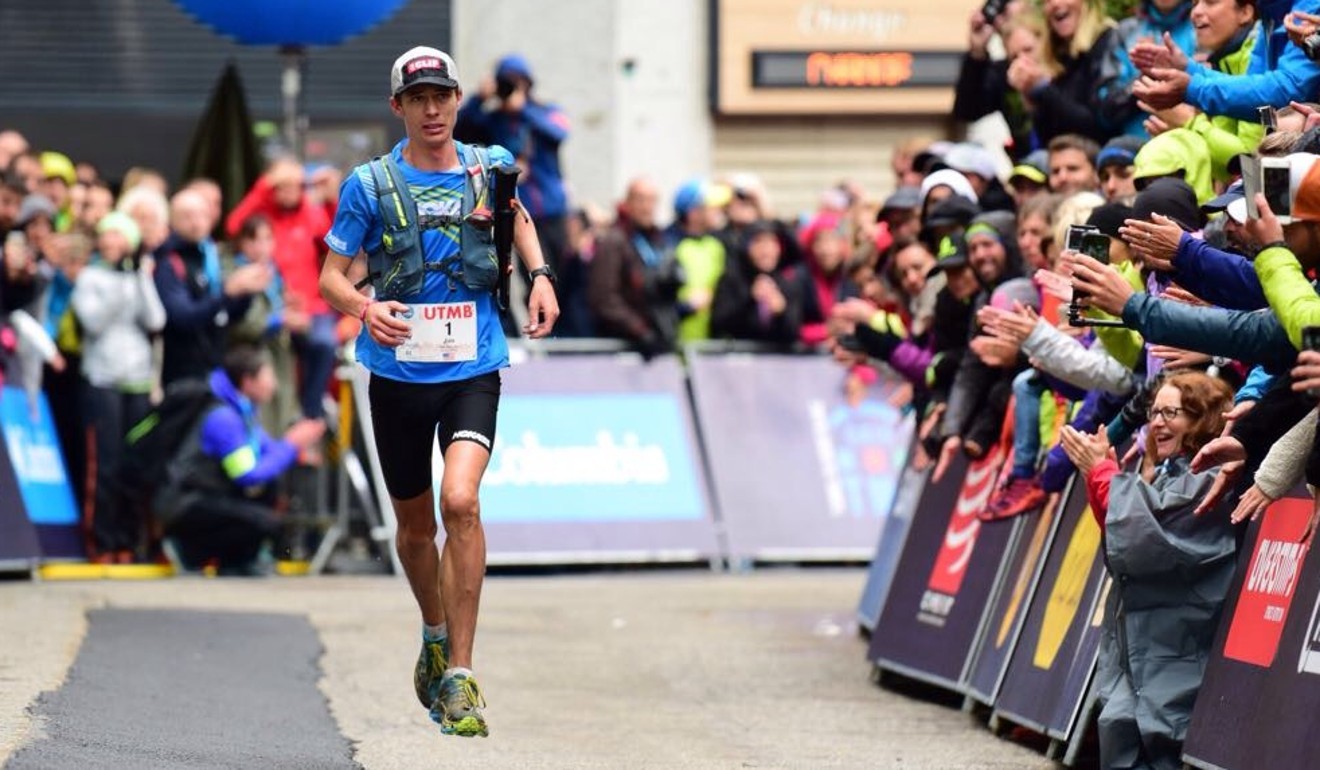
Canepa won the women’s UTMB crown in 2018, and she also placed second in 2012. Other former top UTMB finishers on the start list for 2021 include Japan’s Kaori Niwa (fourth in 2017 and the winner of the 2019 Oman by UTMB 170K ultramarathon), Uxue Fraile Azpeitia of Spain (three-time UTMB podium finisher) and Beth Pascall of the U.K. (fourth- and fifth-place finishes in 2018 and 2019).
Multiple world record holder Camille Herron is also set to race in Chamonix. She has won ultramarathons around the world, including the Comrades Marathon in South Africa in 2017 and the Tarawera 100-miler in New Zealand in 2019, and she certainly has what it takes to win or place high in the overall UTMB standings.
Alisa McDonald
Is the lone Canadian in the elite Camille Herron is also set to race in Chamonix. She has won ultramarathons around the world, including the Comrades Marathon in South Africa in 2017 and the Tarawera 100-miler in New Zealand in 2019, and she certainly has what it takes to win or place high in the overall UTMB standings.
The men’s race
On the men’s side, there are four former UTMB winners: Pau Capell of Spain (winner in 2019) and French athletes François D’Haene (won in 2012, 2014 and 2017), Ludovic Pommeret (won in 2016) and Xavier Thévenard (won in 2013, 2015 and 2018). The past eight UTMB crowns belong to these four men, and they’re all capable of extending that streak to nine straight this year.
Jim Walmsley and Tim Tollefson are the top two American hopes on the men’s side. Tollefson made the UTMB podium in 2016 and 2017 with a pair of third-place finishes, while Walmsley has only raced in Chamonix once, running to fifth place.
As Walmsley showed recently in a 100K world record attempt (he ran 6:09:26, missing the record by 12 seconds), he is in incredible shape this year, and while August is still months away, he has to be considered a favorite.
Also on the start list is the U.K.’s Damian Hall, who finished in fifth at the 2018 edition of UTMB. Hall is coming off a fantastic year of running that featured several prominent FKTs, and although he hasn’t raced in a while, he shouldn’t be counted out come August.
Finally, Canada will be represented by Mathieu Blanchard. Born in France, Blanchard now lives and trains in Montreal. He has raced in Chamonix before, running to a 13th-place finish in 2018, and in 2020 he ran onto the podium at the 102K Tarawera Ultra race.
by Ben Snider-McGrath
Login to leave a comment
North Face Ultra Trail du Tour du Mont-Blanc
Mountain race, with numerous passages in high altitude (>2500m), in difficult weather conditions (night, wind, cold, rain or snow), that needs a very good training, adapted equipment and a real capacity of personal autonomy. It is 6:00pm and we are more or less 2300 people sharing the same dream carefully prepared over many months. Despite the incredible difficulty, we feel...
more...Jim Walmsley Shatters the 100K American Record, But Misses the World Record by 11 Seconds
The king of Western States came so close at the Project Carbon X 2 race.
After more than six hours of running, Jim Walmsley crossed the finish line 11 seconds short of his ultimate goal—the world record in the 100K.
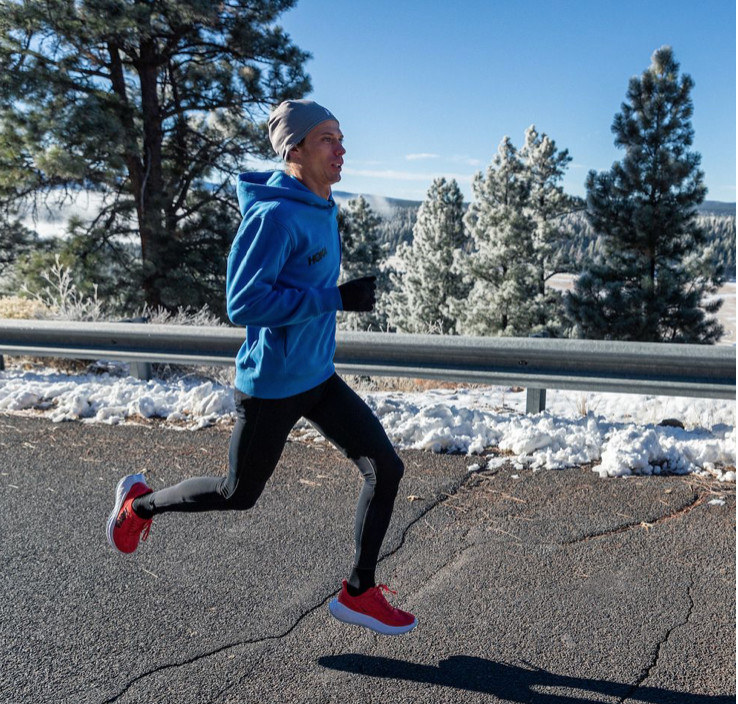
At the Hoka Project Carbon X 2 100K race on January 23, held in Chandler, Arizona, Walmsley ran 6:09:25, shattering the American record of 6:27:44, set by Max King in 2014. But the world record (6:09:14, set by Nao Kazami in 2018) continues to elude him.
“Definitely feels like one of the more special runs I’ve had,” Walmsley said, in his post-race interview. “Really felt like I got everything out of myself today, dug real deep, and fought all the way to the line. I don’t feel like I gave up, but it was tough to see the seconds tick by. It’s a little bittersweet, but definitely awarded with an American record today, and those don’t come very often. I don’t get to do things like this in my home state very often, so it’s extremely positive. A 45-minute PR. It was a pretty amazing day.”
Nineteen men and women were chasing national and world records in the 100K distance in Saturday’s race. Walsmley was the men’s favorite to set both the world record and the American record, while Camille Herron was favored for the women. Herron was forced to drop out of the women’s race with a hip injury.
Walmsley started the race in a pack with five other runners, running conservatively to keep his legs fresh. But the other four runners faded behind him, leaving Walmsley to chase the record alone. His pacing picked up over the final 30K, as he raced the clock with everything he had.
Around the 3:30 mark in the race, Walmsley clipped his left shoulder on a course sign, and he was visibly bleeding for the next two and a half hours. At water stops, he’d fuel and treat his wound as best he could while keeping his stride.
The race came down to the final 10K, as Walmsley needed to run 37:58 or faster over the final miles. Those watching the race on the live stream could see the fatigue and pain set in over that final stretch. He let out a loud “C’mon, Jim” scream with a little more than 5K to go, fighting the clock with everything he had.
As he entered the drag strip to the finish, he had just over a minute to cover the final hundreds of meters. He got on his toes, repeatedly checked his watch, and ran as hard as he could to beat the clock that was now in his sights. Ultimately, he watched the clock tick past 6:09:14, finishing 11 seconds later.
“We’ll have to try it again,” Walmsley said in his post-race interview. “We’re in the right ballpark and on the right track and we have a shoe to compete with this and we’re knocking on the door. I don’t think I’m done with the 100K. Fortunately, unfortunately, there’s likely another one down the road.”
The remainder of Walmsley’s year is uncertain, because of the pandemic. He told Runner’s World before the race that he’s looking at first are the Comrades Marathon and the Ultra-Trail du Mont-Blanc. In the near future, he’s hoping to do the Black Canyon 100K three weeks from this weekend on February 13.
The Flagstaff, Arizona, native wasn’t the only runner with a notable day out on the course. Rajpaul Pannu took second in the men’s 100K in his first-ever attempt at the distance. Pannu is a math teacher in addition to being a pro runner who finished 63rd at the Olympic Marathon Trials in February 2020.
In the women’s race, the United Kingdom’s Carla Molinaro and the United States’s Camille Herron led for the first half of the race before France’s Audrey Tanguy slowly made her way past both runners early in the second half of the race. After that, Herron was forced to drop out after six of nine laps due to a hip injury.
Tanguy, the reigning and two-time champion of the Ultra-Trail Sur les Traces des Ducs de Savoie (TDS), captured the lead and ran away with the race for the win in 7:40:35, unofficially.
American Nicole Monette did move close to Tanguy late in the race and took second, finishing less than three minutes behind the winner.
by Runner’s World
Login to leave a comment
Jim Walmsley, Hayden Hawks Going for 100-km World Record at Project Carbon X 2 in Arizona
A group of top ultra runners will gather in Chandler, Ariz., with hopes of breaking the World Athletics records for 100 kilometers on the road. The event, called Project Carbon X 2 and staged by Hoka One One for the benefit of their athletes, will start and finish at the Wild Horse Pass Motor Sports Park and will use some of the same roads as The Marathon Project which was held with great success last month.
“I’m incredibly excited,” said Hoke One One president Wendy Yang on a video conference today with reporters. “Also feel super fortunate that the team was able to bring this event together.”
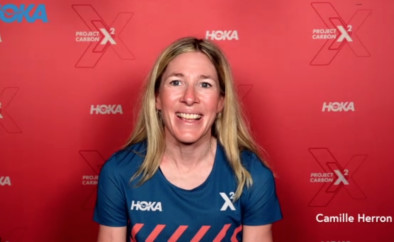
The pandemic has meant dramatically fewer competitive opportunities for road running athletes, especially ultra runners who specialize in distances longer than the standard marathon distance of 42.195 km, or 26.2 miles. However, since most ultra runners train alone or in very small groups, the pandemic has given them a chance to put in long blocks of uninterrupted, COVID-safe training and improve their strength and fitness. Tomorrow’s race will offer them a chance to show off their work.
We wanted to give our athletes the chance to compete,” Yang continued. “We felt like our athletes really needed this chance.”
The top targets for tomorrow’s race are the ratified World Athletics 100-K records of 6:33:11 for women, set by Japan’s Tomoe Abe in 2000, and 6:09:14 for men, set by Japan’s Nao Kazami in 2018. Both records were set at the same event, the Lake Saroma 100-K in Hokkaido, Japan. The women’s record works out to a pace of 3:56 per kilometer, which means running two 2:46 marathons back-to-back plus another 15.6 kilometers at the same pace. The men’s record pace of 3:42 per kilometer translates to running back-to-back 2:36 marathons plus the extra distance.
“You never know what can happen in an ultramarathon,” said Hayden Hawks one of the top contenders in the men’s division. Hawks smashed the course record at the venerable JFK 50 Mile (80.5 km) in Maryland last November, clocking 5:18:40. His pace at that event, which included rugged trails and some steep climbs and descents, worked out to 3:58 per kilometer. He said he’s been practicing on flat, loop courses to simulate the conditions in Arizona, and that with his strength and mental toughness he has a chance at the record.
“My greatest strength is probably just my stubbornness,” Hawks said. He added: “I feel like I have this mental strength to push through a lot of pain.”
Hawks’s main rival tomorrow will be ultra star Jim Walmsley, the man whose record he broke at the JFK race. Walmsley is best known as a trail runner, and is the course record holder for the impossibly difficult Western States 100-Miler in Auburn, Calif., where he ran 14:09:28 in 2019 (he also won in 2018). Walmsley already holds the world best for 50 miles on the road of 4:50:08. Using the popular Riegel Formula, that’s equivalent to 6:05:51 for 100-K, comfortably under the 100-K world record by more than three minutes.
Note: Walmsley was on the LetsRun.com Track Talk Podcast this week where he talked about his 100-k world record attempt, his big plans for 2021 and his cancelled 2020. Highlights here.
“I’m really looking forward to improving on my past performances in the 100-K,” Walmsley said today, admitting that he hasn’t yet perfected his approach to that distance yet. He continued: “I think I’m bringing a more mature approach of being more patient.”
If they don’t eclipse the world record, both men could surpass Max King’s USA record of 6:27:44 set in 2014.
On the women’s side, Camille Herron is the top entrant, and she rated her fitness at “80 to 85 percent.” Like Hawks, the holder of the world best for 24 hours on both the road and the track recently won the JFK 50-Miler. She played down the possibility of getting the world record, but said she was in about the same shape as when she won the famed Comrades Marathon in South Africa in 2017 over a distance of 86.73 kilometers. She allowed that a personal best (sub-7:08:35) was possible, despite only doing a six-week build-up.
“I’m definitely confident in my fitness,” said Herron who recently switched sponsors from Nike to Hoka One One and who will be doing her first race in Hoka shoes. She added: “I’m getting fitter every week. I have a pretty good idea of what I’m capable of.”
Also competing in the women’s division is Irish Olympic marathoner Caitriona Jennings, 40, who will be making her 100-K debut. Jennings will be taking a cautious approach to the race because she is 12 weeks pregnant. She said that there will be plenty of ice and fluids available on the course so that she can keep her core temperature in check.
“It wasn’t a decision I took lightly,” she said emphasizing that she had consulted with her doctor before agreeing to compete. She added: “I think (the water and ice on the course) will help with hydration and keep my temperature down.”
The athletes will start and finish on the race track, and will run about nine laps of an 11-kilometer circuit (Walmsley estimated that each full lap would take him about 41 minutes). The course was measured by two World Athletics “A” measurers, Joe Galope and Jay Wright (an “A” measurer must be used in order for a course to be eligible for a World Athletics record). The event will have in-competition drug testing done by the USA Anti-Doping Agency, also a requirement for setting a world record.
All of the competitors will be wearing the new Hoka One One Carbon X 2 shoe. Colin Ingram, Hoka’s director of product, called the new shoe “one of our sharpest tools in the box.” He explained that the shoe had been improved over its predecessor by incorporating “swallow tail construction” to improve deceleration on the foot strike, and lowering the carbon plate to get it closer to the ground.
“It allows for a more natural gait,” Ingram said.
While Hoka One One has not disclosed the cost of the event, it is significant, especially making it as safe as possible from the coronavirus. Mike McManus, Hoka’s director of global marketing, said that every athlete had at least three antigen PCR tests in the last week, and that masks and social distancing were required at all times except when the athletes are on the course. An industry insider contacted by Race Results Weekly estimated the cost of COVID mitigation for the event was around $60,000.
“It’s been a huge challenge for us to make this event happen in a very safe way,” McManus said.
The race will be streamed live and free at hokaoneone.com beginning at 9:00 a.m. Eastern Standard Time.
by Let’s Run
Login to leave a comment
Hawks soars to JFK 50 victory in record time
With most major running events having been canceled this year due to the COVID-19 pandemic, opportunities were not to be wasted at the 58th annual JFK 50 Mile ultramarathon in Washington County.
No one seized the chance to showcase their fitness quite the way Hayden Hawks did Saturday.
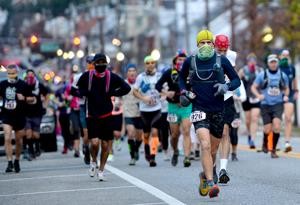
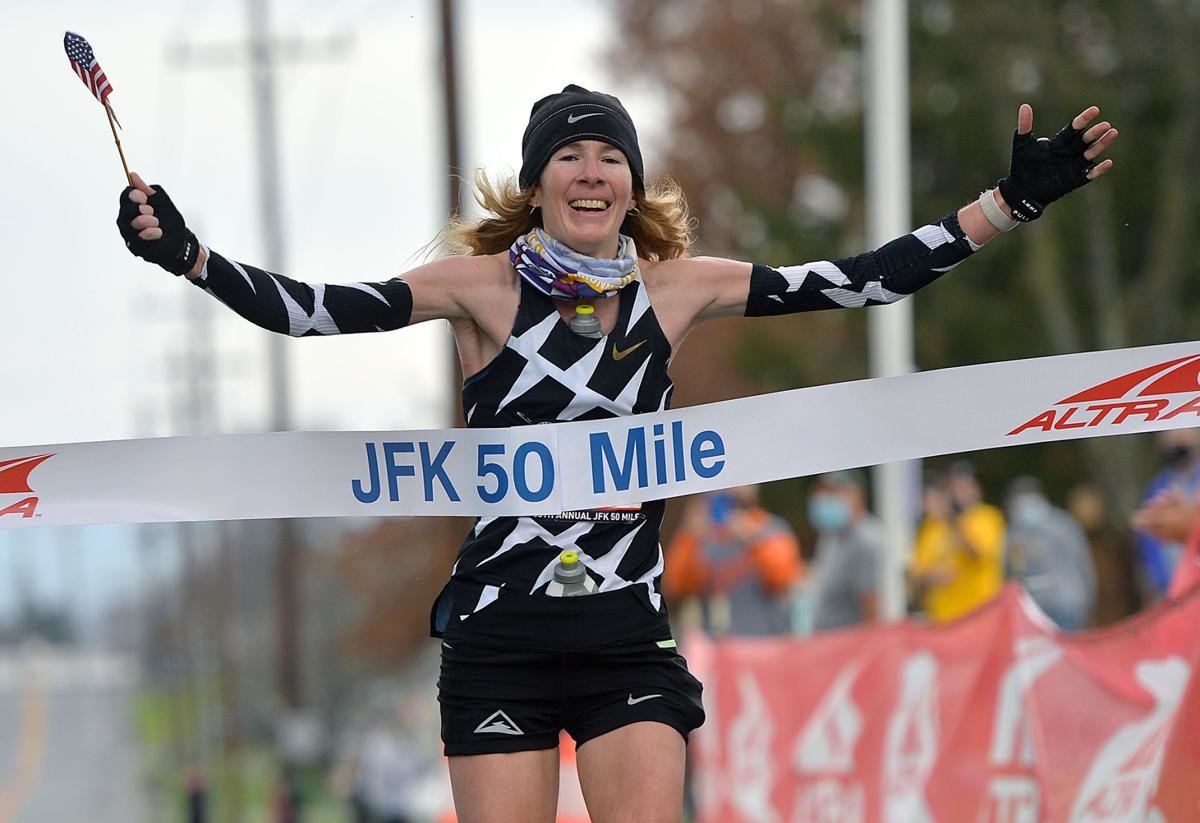
In his debut at the race, Hawks, 29, of Cedar City, Utah, turned in a stunning performance, winning in a course-record time of 5 hours, 18 minutes and 40 seconds — an average of 6:21 per mile.
The women’s title was captured by pre-race favorite Camille Herron in 6:31:14.
“I just really wanted to come out here, have fun and see what I could do. It just all clicked today,” Hawks said. “I kept thinking the whole time during the race how grateful I was to be out here.
“You know, it’s been a hard year for a lot of people, including us as professional athletes. My whole schedule was changed this year. I had all these big plans, competing at all these big things. Of course, all that got canceled, so I just took advantage of the time I had and really dialed everything in — my nutrition, my strength training, my running training — coming into this.
“I was like, you know, I need to be grateful and have gratitude because, really, this might be the first and the last race for a while for me. I was just really fortunate and really happy out there.”
The previous course record was 5:21:29, set by Jim Walmsley in 2016. That was a momentous achievement, as before Saturday, no one else had ever run faster than 5:34:22 in the first 57 years of the event.
“I fully expected Walmsley’s record to stand well into 2040, maybe even 2050,” JFK 50 director Mike Spinnler said. “It was just such a big quantum leap.”
With some help from Walmsley, Hawks took it a step further.
“Jim and I are really good friends. We talk all the time,” Hawks said. “Jim actually gave me some advice coming into this. I was texting him back and forth, asking for shoe advice and what I should do. And he gave me advice.
“He’s a really class-act guy, a really great competitor, and I’m really fortunate to have him as a friend. That’s what we do as competitors. We’re always trying to push each other and reach that next goal. I’m sure Jim is happy for me today to take this course record to the next step, just like I’d be happy for him if he did that as well.”
Stephen Kersh, 29, of Flagstaff, Ariz., placed second in 5:27:07 — the No. 3 performance in race history — in his first JFK.
“I’m definitely pretty happy,” he said. “It was just about as good as it could have been.”
Kersh’s training partners in Flagstaff include Walmsley and two other recent JFK champions, Jared Hazen (2018) and Eric Sensmen (2017).
“I’ve been picking their brains for the last couple months, so I didn’t come into this as green as some people. I knew what to expect,” Kersh said. “Training with those guys, this isn’t as unexpected as maybe some people think, because I’m not really a big name in the sport.”
After the first 15.5-mile segment of the race, mostly comprised of the rocky Appalachian Trail, a lead pack of four — Hawks, Matt Daniels, Hazen and Kersh — took the title fight to the flat C&O Canal towpath for the next 26.3 miles.
“Once we hit the canal path, Matt and I took off,” Hawks said. “We actually train a lot together and are really good friends.
“We talked beforehand about working together on the canal path, and then it would be every man for himself at the end, so that’s what we did. We started clicking off sub-6-minute miles and were feeling very comfortable, having a conversation and feeling really good.
“At Mile 27, I kind of broke Matt a little bit. I think maybe he had a calf injury. He’s been dealing with a lot of injuries over the past few months. Matt on his ‘A’ game would have been hard to beat today.”
Daniels ended up dropping out, and Hazen fell back to a 13th-place finish (6:36:13).
Jonathan Aziz, 29, of Colorado Springs, Colo., finished third in his ultramarathon debut in 5:37:14 — the No. 6 performance in JFK history.
Anthony Kunkel, 28, of Durango, Colo., placed fourth in 5:45:31, and Geoffrey Burns, 30, of Ann Arbor, Mich., took fifth in 5:52:51.
Herron adds to her résumé
In the women’s competition, Herron, 38, of Alamosa, Colo., showed why she was the overwhelming pre-race favorite, leading from start to finish as she won by nearly a half-hour in her first JFK.
Although Herron’s personal record for 50 miles (5:38:41) is an all-time world best, she specializes in even longer events, also owning world-best performances for 100 miles (12:42:40) and 24 hours (167.842 miles).
“Because I was coming down in distance, I felt a little slow and rusty today,” she said.
She had her sights set on the JFK women’s record — 6:12:00, set by Ellie Greenwood in 2012.
Although Herron was off course-record pace on the Appalachian Trail, she had hoped to make up for it on the C&O Canal towpath.
“I was trying to chase time the whole way, and I just didn’t have it. This was the best that I could do today,” she said. “Buy hey, I won. I’m not disappointed for such a crazy year. It’s awesome to even have a race.
“I definitely want to come back,” she said. “I think I have it in me to go for the course record — just keep trying. It’s a stout course record, I can tell you that.”
Sarah Cummings, 31, of Park City, Utah, was the runner-up in 6:57:11, while Haley Moody Gilpin, 31, of Chattanooga, Tenn., placed third in 7:00:52, Alicia Hudelson, 36, of Roswell, Ga., took fourth in 7:14:02, and Sarah Biehl, 26, of Hilliard, Ohio, was fifth in 7:22:32.
Login to leave a comment
American Ultrarunner Marisa Lizak runs 391K in 48 hours, sets new American record
American ultrarunner Marisa Lizak spent the weekend running the Three Days at the Fair, a multi-day ultra event that features many races, including 24-, 48- and 144-hour runs.
The Marina Del Rey, Calif., resident took the overall win in the 48-hour race, beating fellow Californian Bob Hearn, who took the top spot for the men and also set an American record for the M50-54 age group (a record that he already owned). In total, Lizak covered 391.87K, bettering the previous record of 390K. Hearn added another 13 kilometers to his age group record, posting a final distance of 386.72K.
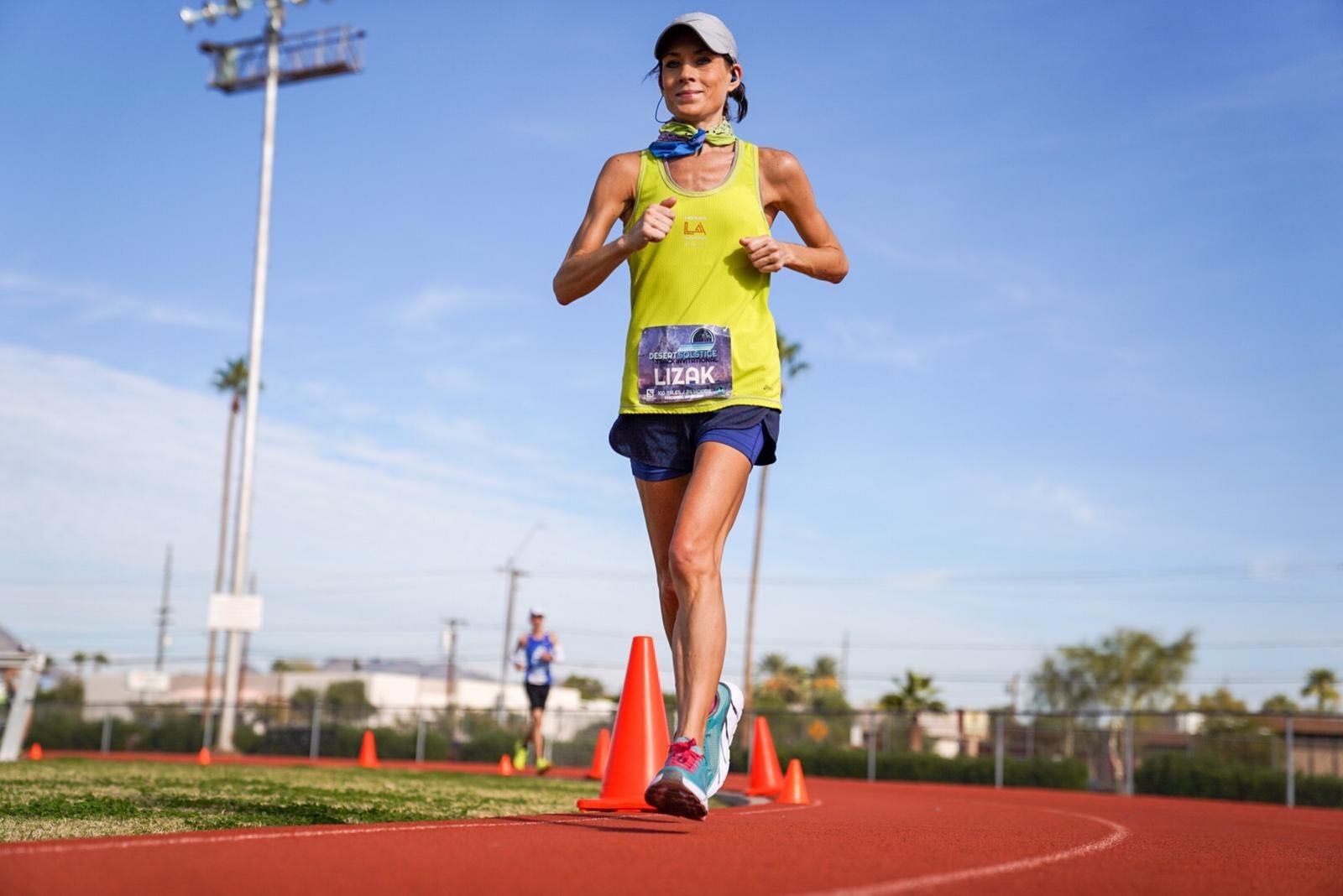
An unexpected record
Coming into the Three Days at the Fair, all eyes were on Camille Herron, who was looking to run farther than any American — man or woman — ever had before over 48-hours. The overall U.S. 48-hour record is 421.9K, a mark that was set by Olivier LeBlond in 2017. Had Herron achieved her goal and beaten this distance, she would have also surpassed Polish runner Patrycja Bereznowska‘s world record of 401K. Unfortunately, Herron had to pull out of the race due to injury after 177K.
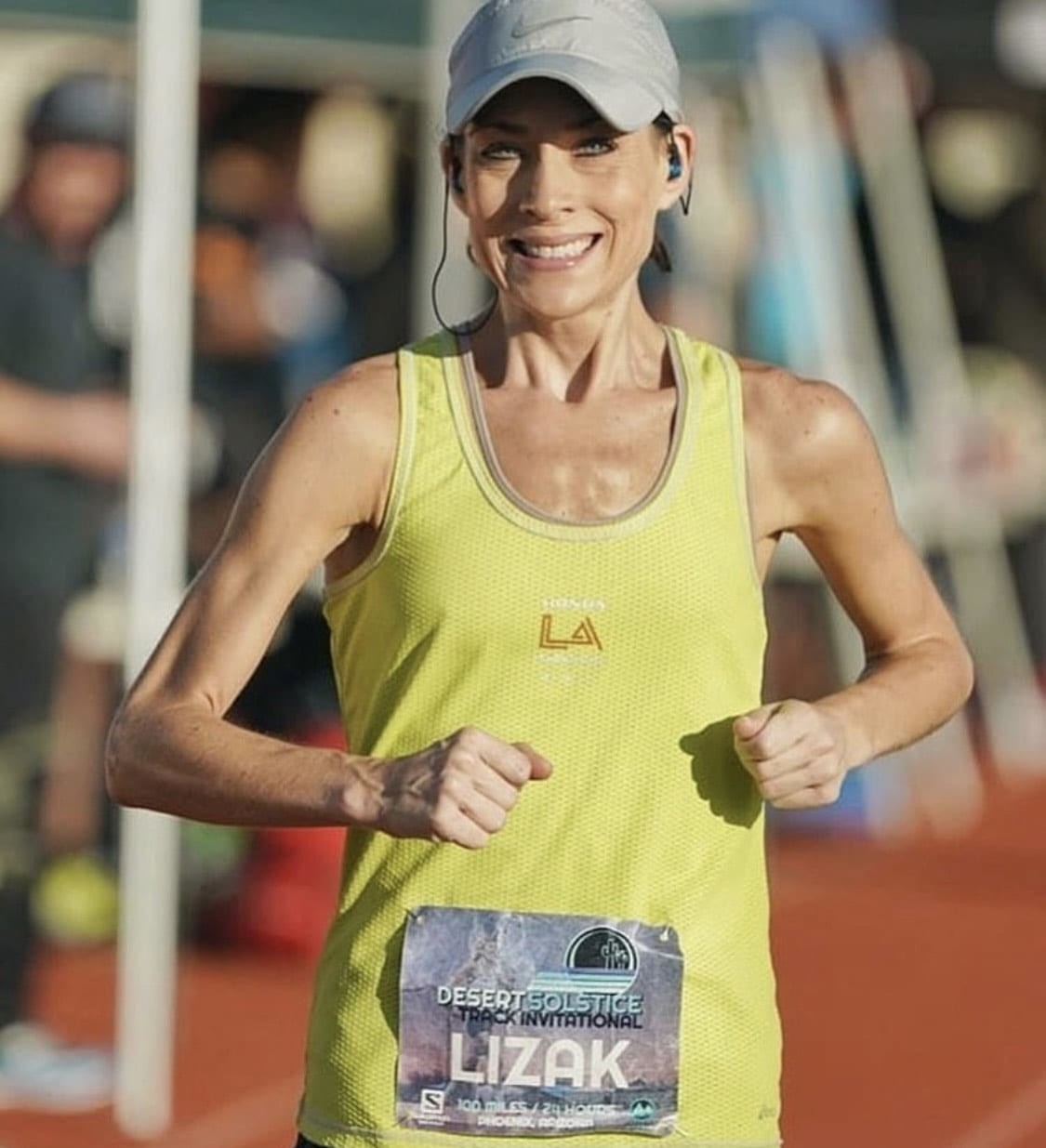
Thanks to Lizak, those present at the Three Days at the Fair still got to witness an American record. This is Lizak’s first outright women’s record, regardless of age, but she does have an age group record to her name. In December 2019, she set the 24-hour U.S. F40-44 record after running 238.32K at the Desert Solstice 24-Hour and 100 Mile Track Invitational in Arizona. She took third overall in the Desert Solstice 100-miler en route to the win in the 24-hour race that day, and she has posted many other big race results in her career.
earn’s big year
Hearn has six national records in the M50-54 category. In addition to his newly-lengthened record over 48 hours, he has the road and track records over both 24 hours and 200K, as well as the 100-mile road record. The result at the Three Days at the Fair is Hearn’s third podium finish of 2020. He also won a 100-miler in South Carolina pre-pandemic and he finished in second place at Laz Lake‘s Vol State 500K in July. Hearn and Lizak are both signed up to race the Desert Solstice, which is set to be run in December.
by Ben Snider-McGrath
Login to leave a comment
Camille Herron to Attempt Overall US 48-Hour-Record this Weekend
Camille Herron, the 24-hour world record-holder, is targeting the 48-hour world record this week in New Jersey. The event, which begins today, offers races from a 144-hour event all the way down to a six-hour run. Herron will get started on Friday, October 2 at 9 a.m. ET and end on Sunday, also at 9 a.m.
The current women’s world record stands at 397 kilometres and is held by Sumie Inagaki of Japan, but Herron wants to go one step further and become the overall U.S. record holder. This would require her to beat Olivier LeBlond, who ran 262 miles (or 421.9K) in 48 hours in 2017. The world record for the event is held by Yiannis Kouros of Greece who has run 433K on the roads.

Herron says she’s fit and ready to race this week. After having eight-consecutive races cancelled, she can’t wait to see a start line. “I keep signing up and they keep getting cancelled, but now that we’re under seven days out, I feel like it’s going to happen.” Herron explains that she was originally scheduled to race in Hungary this fall, but due to the travel ban, she wasn’t able to attend. This is what brought her to singing up for Three Days at the Fair. She chose the 48-hour event because regulars told her it’s the most competitive event of the week.
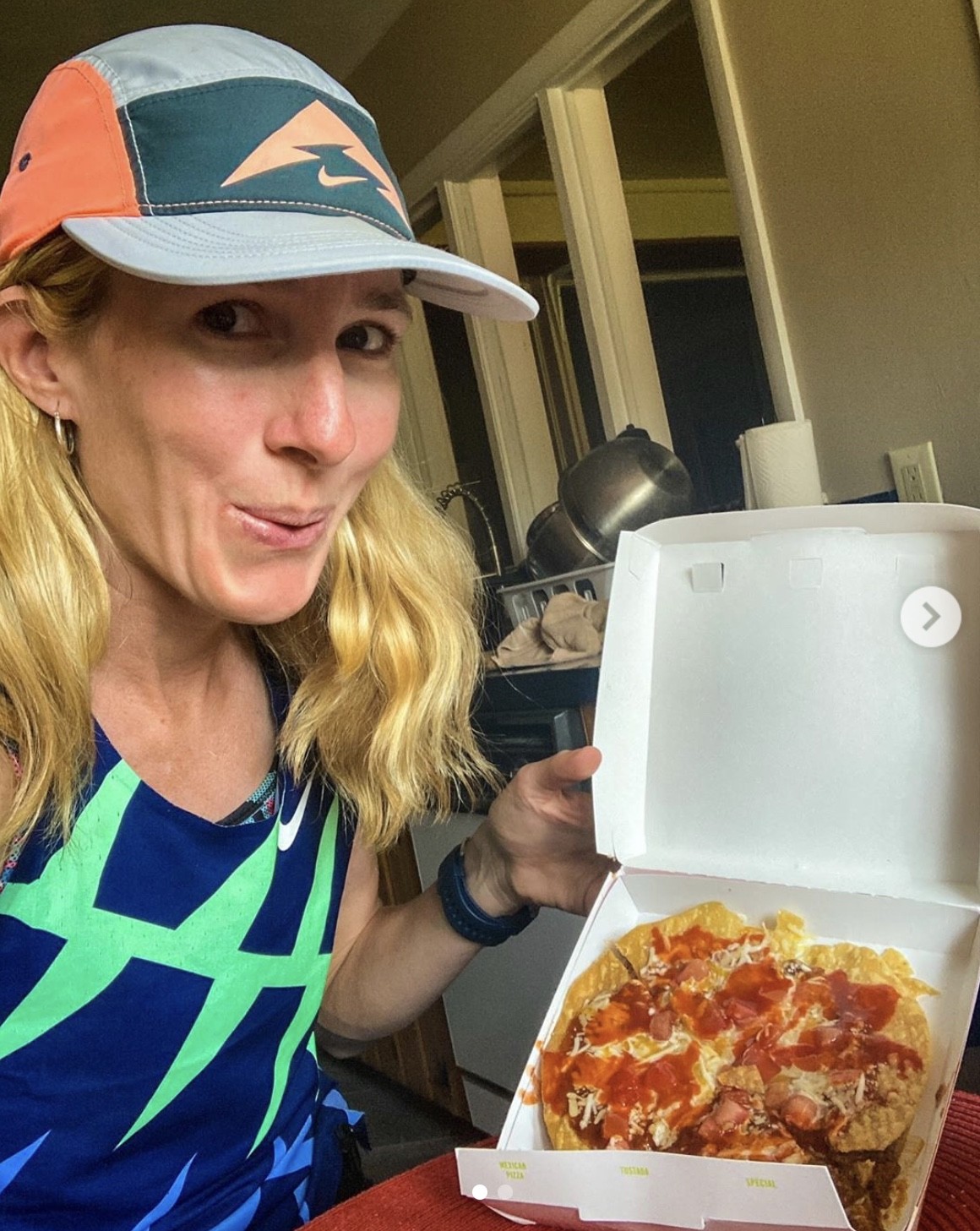
Herron says she’s going into this weekend with an open mind. “I’m not really sure what’s possible. I keep getting closer to Yiannis’s world records. For example, when I ran my 24-hour world record, I was only six per cent off his. Most women’s records are 10 to 12 per cent off men’s, but I’m getting pretty close. I don’t know what’s possible until I try, so I’m aiming for the men’s records. I’m trying to think big and get the most out of myself.”
Herron says while her motivation dwindled a bit at the beginning of the pandemic, having Three Days on the calendar reignited the flame. “I’ve been digging deeper since committing to this race. The competitor in me is still there – it’s just a matter of race opportunities coming back, and the world getting normal again.”
by Running Magazine
Login to leave a comment
Runners push back against new World Athletics shoe rules
Norway’s Sondre Nordstad Moen pulled out of the Brussels Diamond League due to new shoe rules
Norway’s Sondre Nordstad Moen, a seven-time national record holder, pulled out of Friday’s Brussels Diamond League citing World Athletics’ new shoe rules as the reason. According to Inside the Games, the 2:05 marathoner felt that he couldn’t safely compete in a shoe with only 25 mm of cushioning. “I’m not sure I would be any of those things if I raced in Brussels because I’d have to race on the track for something like a half marathon – and hopefully a bit further – in shoes which only have 25 mm of cushioning. To be honest, I’ve decided I just can’t do that as I feel pain in my feet after only a few kilometres in such shoes.”

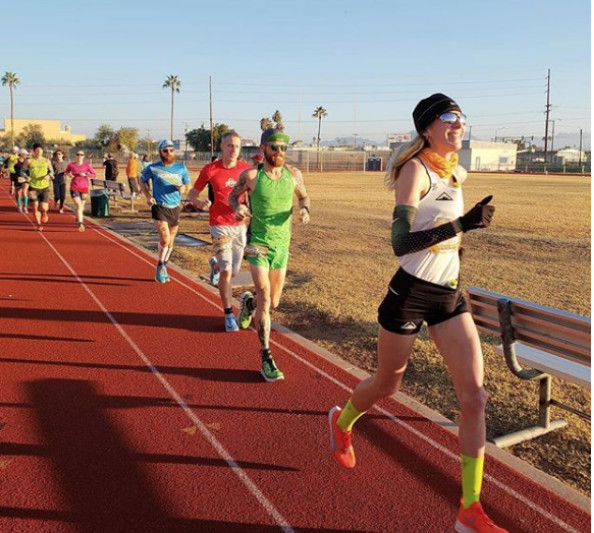
The new WA shoe rules put a limit on the stack height of any shoe worn on the track. This means for people running the 800m through ultramarathons, their shoe height can only be a maximum of 25 mm. On the road, shoes can reach 40 mm. For middle-distance events, this is an entirely fair stack height, however, other runners have pointed out that they miss the cushioning over the long haul (for example, a one-hour effort).
Camille Herron is an American ultramarathoner who holds the 24-hour track world record. She suggested on Twitter that the maximum stack heigh of 25 mm should only apply on the track through the 10,000m, so that runners competing longer could have the extra cushion.
In the ever-evolving landscape of carbon-plated racing shoes and mega stack height, WA has changed their rules several times in the last year. Their latest guidelines were only announced seven weeks ago, and could certainly change again between now and the Olympics next year.
by Running Magazine
Login to leave a comment
The Comrades Marathon 2020 has been officially postponed
The 2020 Comrades Marathon has been postponed indefinitely. The postponement of the most famous and historic ultramarathon in South Africa was announced on Friday morning by Athletics South Africa.
The Comrades Marathon route travels between two cities, Pietermaritzburg and Durban. The direction changes, however, between “up” and “down” years. “Up” years see racers run 87K with about 2,000 meters of elevation gain. “Down” years are a bit further, hitting 90K, but the run is a net downhill.
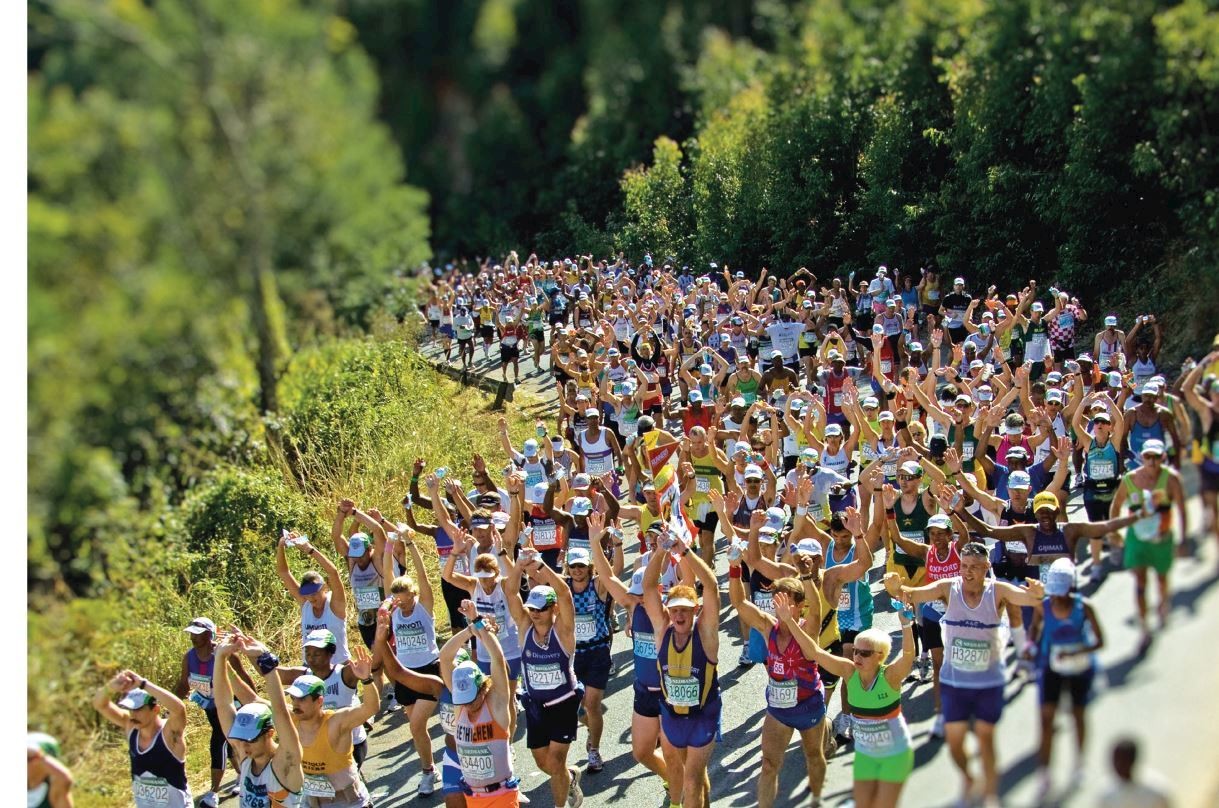
It was set to be a down year in 2020, so the race was scheduled to start in Pietermaritzburg and head to Durban, on South Africa’s east coast. The cut-off for the Comrades Marathon is 12 hours.
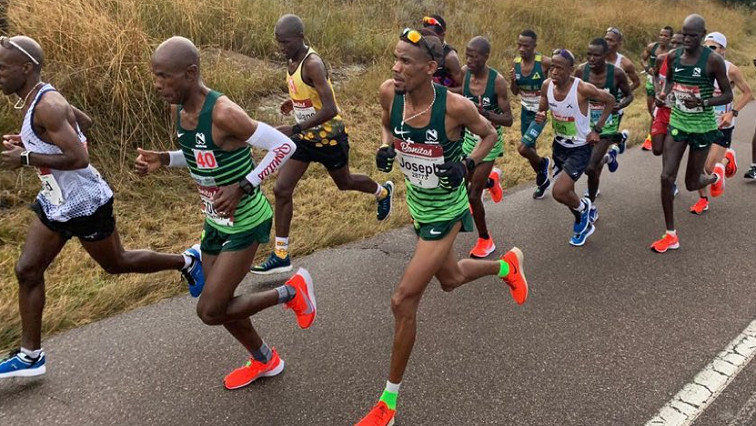
Both Jim Walmsley and Camille Herron, American ultra running legends, were set to compete at the 2020 event was originally scheduled for Sunday June 14.
The news follows the April 9 announcement that South Africa would be extending its lockdown by another 14 days, before re-evaluating the country’s public health needs.
Aleck Skhosana, president of Athletics South Africa, told Sport24, “The Comrades Marathon is therefore postponed from 14 June to a suitable date that will be determined between ASA, KZN Athletics and the Comrades Marathon Association as soon as conditions around the management of the virus allow us to under the guidance of the Government.”
by Madeleine Kelly
Login to leave a comment
Comrades Marathon
Arguably the greatest ultra marathon in the world where athletes come from all over the world to combine muscle and mental strength to conquer the approx 90kilometers between the cities of Pietermaritzburg and Durban, the event owes its beginnings to the vision of one man, World War I veteran Vic Clapham. A soldier, a dreamer, who had campaigned in East...
more...More People Are Running Ultras Than Ever Before That’s not a guess. It’s a scientific fact.
Ultrarunning has become more mainstream over the past few decades as many runners have turned their attention to the trails to go beyond 26.2.
That’s not just an opinion, it’s a scientific fact backed by the research conducted by RunRepeat and the International Association of Ultrarunning, which teamed up to examine 5,010,730 race results from 15,451 races—roughly 80 percent of all ultras believed to have taken place worldwide since 1996.
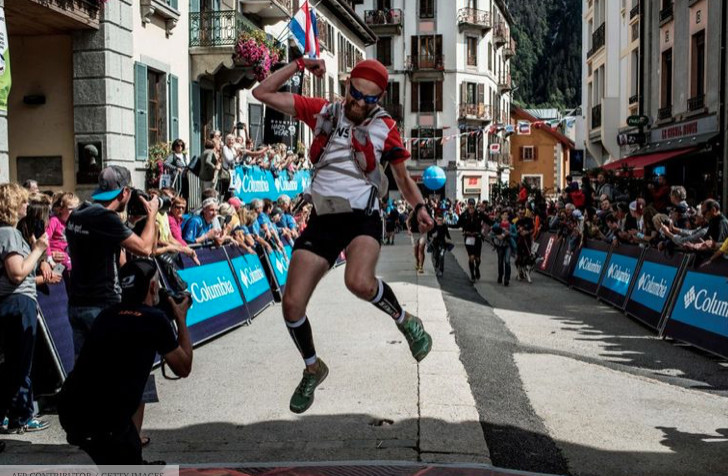
With that much data, we can safely make some conclusions about the sport and where it’s headed. (You can read the entire report RunRepeat.) Here’s what stood out to our Runner’s World editors.
It’s no surprise that as ultramarathons enter the mainstream, more people are signing up for races. This is a huge change compared to road races—5Ks have seen a decline since 2015, according to a RunRepeat and World Athletics study, while marathons have leveled off. In comparison, ultras have grown 345 percent since 1996 from 34,401 ultrarunners in 1996 to 611,098 in 2018.
That’s not to say everyone is doing the extreme distances. In fact, only about a quarter of ultrarunners prefer distances over 50 miles .
There is still a massive gender disparity in the ultrarunning world. In 2018, only 16 percent of race participants were female. Yikes! Work needs to be done to rectify that, but the current trend is promising.
That 16 percent represents around 97,700 women, whereas around 4,800 total women competed in ultras in 1996. The overall percentage still needs to tighten up, but it is exciting to see that there have never been more women going beyond 26.2 than right now.
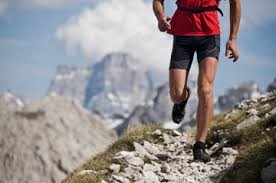
Most numbers seem to point up in the study, except for the average pace we see in races longer than 26.2. On average, ultrarunners are moving at about at 13:16-per-mile pace. That’s 1:41 per mile more than in 1996 when the average pace was 11:35. This is likely because of the increase in amateur participation.
That becomes clearer when we look at the longer race paces that actually become faster when the race is longer. Over 50 miles is typically where you’ll find the most dedicated ultrarunners, which translates to more training and faster times. With this is mind, it also makes sense that the longer distance paces have remained fairly steady over the years whereas the 50K distance has seen the biggest slow down in pace, going down more than 2 and a half minutes slower than in 1996—a 23-percent change.
The average pace may be declining, but females are gaining on—and even passing in some circumstances—the men.
Women have slowed down from a 12:25 to a 13:23—40 seconds—at all distances above the marathon. However, men have slowed down from 11:24 to a 13:21—a 1:57 difference. Yes, that’s a two-second difference between the average paces for the genders.
However, women, on average, are faster than men by 0.6% during races longer than 195 miles. We think Courtney Dauwalter, Camille Herron, and Maggie Guterl would agree with that information.
The average age of participants has gone down by a little over the last decade—43.3 years old to 42.3. It’s not a huge shift, but it’s still a sign that the participants are skewing a little younger.
That’s unlike the rest of the running world that has seen all race’s average ages steadily increase since 1996. When we look at the 5K to marathon, the average age goes up from 39.3 to 42.5, according to a RunRepeat and World Athletics study. The study states this is likely because of more dedicated runners sticking with it into their 60s and 70s.
Don’t let age fool you though. Anyone can run. Take it from George Etzweiler and Gene Dykes.The Demographic Is Getting Younger
The average age of participants has gone down by a little over the last decade—43.3 years old to 42.3. It’s not a huge shift, but it’s still a sign that the participants are skewing a little younger.
That’s unlike the rest of the running world that has seen all race’s average ages steadily increase since 1996. When we look at the 5K to marathon, the average age goes up from 39.3 to 42.5, according to a RunRepeat and World Athletics study. The study states this is likely because of more dedicated runners sticking with it into their 60s and 70s.
Don’t let age fool you though. Anyone can run. Take it from George Etzweiler and Gene Dykes.
The U.S. does Lag Behind the Rest of the World. Some of the best ultarunning talent in the world might come from the U.S. for both men and women, but overall, the country’s average pace is ranked eighth. Taking the podium spots when it comes to average speed over all distances beyond 26.2 miles are:
South Africa (10:36 average pace). Sweden (11:56). Germany (12:01)
After that, the Netherlands (12:41), United Kingdom (12:44), Belgium (13:03), and Australia (13:18) rank ahead of the U.S (13:22).
by Runner’s World
Login to leave a comment
Camille Herron's secret to ultra distance domination? Low mileage and speedwork
Speedwork for an ultrarunner may a little counter intuitive, but Herron insists that it’s been very important for her huge results. “Speedwork helps train my legs and mind for the long ultras to keep springing and stay light. These also happen to be two of my favourite things to tell myself mid-race.” Just like speed training is important for marathoners, it’s also important for ultrarunners.
Herron’s speed philosophy
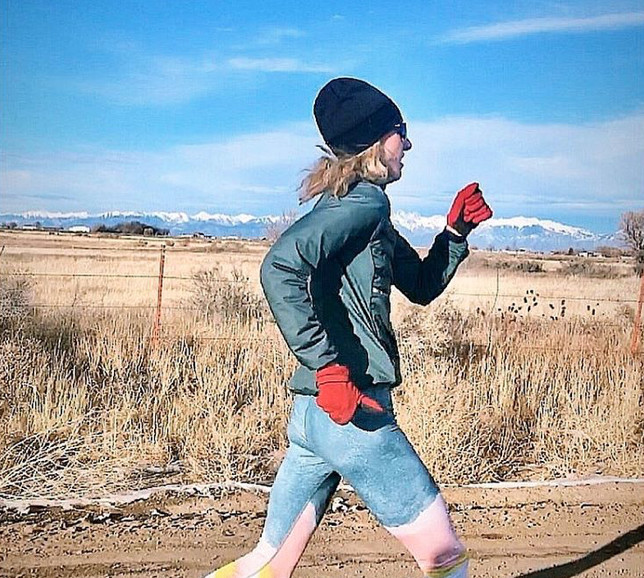
Herron says when she first got into ultrarunning she made the mistake of bringing her mileage way higher than it had been before. “I assumed I just needed to be running more than I was as a marathoner. I didn’t really know how ultrarunners trained. I just thought it meant more [than the marathon]. But this really high mileage made me tired and flat.”
When Herron re-dedicated herself to the sport two years later, she knew her training approach needed to be different. “In 2015 I decided to go back to the approach that kept me fast as a marathoner. This meant no long run longer than 22 miles and two-week workout cycles.”
How the workouts fit into her week
Herron likes to add a progression run into her long run or pickups at the end. “I like progression runs during my long run. This means I’ll change the pace during the last 30 minutes, so I’ll do 15 to 30 seconds of hard sprinting at a time. If I’ve been running for three hours and I throw in these pickups, I actually feel like I recover faster.”
For short intervals Herron will also add 90-second repetitions a couple of times a month. “This feels like all-out sprinting for me now, but it’s a good way to remind my body to be springy and light. I don’t do track workouts any more, because as I’ve gotten older I’ve become more protective of my body. So instead of the track, we usually run on a dirt road. She continues, “I’m 37 years old now, so the speedwork is more about effort than pace for me. Speed just helps to raise the ceiling for everything else.”
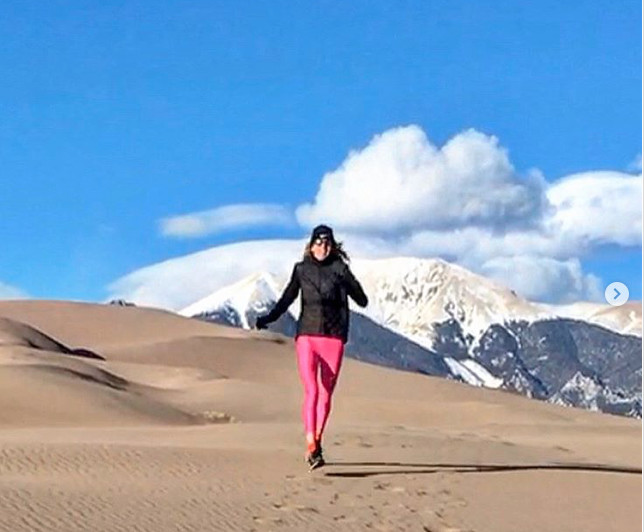
How she keeps the milage high without doing long, long runs
Herron’s long runs are only 18 to 22 miles, short even by marathon standards, but the runner incorporates a second run into her long days to keep mileage up. “One unique thing about my training approach is the low mileage, but on long run days I run again in the evening. My second run is 35 or 50 minutes, depending on how long the run in the morning was,” she says. “I feel like this helps me recover faster than if I did it all at once.”
Up next
Before the end of 2019, Herron will have begun her longest race to date–a 48-hour race in Arizona. “I have a window to start the race between December 28 and January 1. Right now we’re just watching the weather to see when it’ll be optimal, and I’m hoping to start on the 28th.”
The runner is very excited about her first multi-day event. “I’ve never done a 48-hour race–this is my first time getting into the multi-day stuff. I had to push through so many challenges with the 24-hour race that I’m so excited to see what’ll happen over 48.”
Login to leave a comment
'I puked, fouled myself and collapsed - it was great': Meet the record-breaking ultra marathon runner fuelled by beer and burritos
At the ultra running World Championship, competitors looped a 1,500 metres circuit continuously for 24 hours and, with time running out, American Camille Herron was suffering.
She had thrown up twice, stopped to lie down twice, and had such serious bowel issues the officials had forced her off the course to shower and change her clothes. By the finish Herron had run 168 miles, the equivalent of running 6½ consecutive marathons, each in an average time of 3 hr 44 min.​

She certainly means it when she says: “I want to change what people think is possible. Especially for women.”​
Herron’s feat was a world record, she finished sixth in the race overall (including the men) and moved to third best on the United States all-time list for both genders. To get there she had to endure multiple setbacks.​
“I was trying this new fuelling plan with this new product and it wasn’t going well,” Herron explains. “The race was in France, so most of the rest rooms were squat toilets. For 350 athletes, they only had three normal toilets.”​
On her third bathroom stop in quick succession, she found a queue of athletes so decided to carry on. “But on that lap my bowels sort of unleashed themselves,” she says, laughing about it now. “But this is ultra running. S--- happens. Literally!”​
She switched her food to cups of mashed potato, makeshift burritos and her secret weapon – beer. Her condition did not improve but then a switch flicked in her mind.​
“After puking the second time, with 2½ hours to go, I just said to myself, ‘Let’s drop the hammer, let’s go beast mode’.”​

Herron started to fly. “I like to think of myself as a boxer, throwing punches,” she says. “Those last few hours were awesome, the most fun I’ve ever had in a race.”​
Surely she doubted, during the low moments, that it would all come together so spectacularly?​
“No,” she says. “I had already accepted before the race that I would be challenged. So at no point did I feel defeated. It was like ultra chess, we had to brainstorm how to deal with the problems. In the night, that’s the hardest part, because the brain is shutting down, so you’re trying to keep the light on.”​
Herron discovered the benefits of beer by accident. “I was in a trail race, really struggling, sitting in a chair. I’d tried everything and it wasn’t working and my husband just said, ‘You want a beer?’ I popped out of my chair after that. It got my blood flowing again.”​
During her latest world record she downed three Belgian beers along the way. “It settles my gut and helps me focus,” she laughs.​
Herron’s achievements are all the more astonishing as she has had to overcome a lopsided body, re-teaching herself how to run after years of injuries. She was born with her right thigh bone twisted inwards and has an extra bone in her right foot. “There’s something developmentally quirky about how I’m built,” she says. To reduce the strain on her body she re-learnt to run lifting her legs from the ground rather than pushing off. It means she looks like she is roller skating rather than running. “It’s like I’m prancing,” she says. “But I’m light on my feet. As a marathon runner, I had a great engine but I wasn’t fast enough because I wasn’t powerful. But as there’s less impact, for ultras it has turned out to be an advantage.”​
Since readapting her style, Herron has had only one injury, following a serious accident in February in which her car flipped upside down.​
Her steel was instilled from an early age. Herron’s grandfather was shot in both legs in the Second World War and awarded two Purple Heart medals, which are given for members of the US military wounded or killed while serving. He and Herron’s father were also basketball players under tough Olympic coach Henry Iba.​
“You had to be hard-nosed to play for him,” she explains. “My dad told stories of playing for six hours straight without water. So at age seven, I used to play in the yard, without water, until I blacked out. Then I’d get a sandwich and play some more. I was thinking, ‘This is what I got to do, push myself to extremes’. I was training for ultras without realising it.”​
Another formative event came when she was 17 and her whole family were made homeless by the strongest tornado ever recorded.​
“We get tornadoes all the time in Oklahoma,” she recalls, “so when we left the house I didn’t take anything. But it was crazy, four people in our area lost their lives, our house was flattened. But though we lost everything, I thought: ‘I’m still alive.’ At 17, that’s a big thing to realise, the value of your life. It changed my perspective.” From then on she started running on Sundays instead of going to church, to celebrate her life.​
Herron now believes that she can eventually chase down the men’s ultra running world records and she is partly driven by the inequality she feels is rampant in the sport. The normally upbeat Herron turns serious as she recounts her struggles for recognition in ultra running.​
“In my breakout year in 2015 I won two world titles and broke a world record and I thought I should get an agent,” she says, “but he couldn’t find me a sponsor. Then Jim Walmsley [a top male US runner] dropped out of Western States [a big US race] and I caught him in the world 100km championships, and he gets sponsored by Hoka. I was p----d.”​
She fired her agent and joined Walmsley’s agent, who eventually got her a sponsorship deal with Nike. Recently she was left fuming after a race in France offered prize money for the top 20 men, but only the top five women. And the women’s race was half the distance.​
“Sometimes it’s like a throwback to the 1970s,” she says. “I can’t believe it’s 2019 and women are still fighting for equal prize money. While everyone looks at the men like they’re superstars, I see people looking at me and tutting. I’m pretty tall, and I run aggressively and people don’t like it. I hear them saying, ‘She’s going out too fast’. So it’s a big motivation for me to run faster. To beat the men.”​
The way she is going, she might end up leaving them all behind. They can collect up her beer bottles when they come by.
Login to leave a comment
Camille Herron sets new world record for women for the most miles run in 24 hours in Albi France
With her performance in Albi, France, on Sunday, ultrarunner Camille Herron came back strong after a hamstring injury forced her to drop out.
She achieved a world best for the most distance covered in 24 hours on her way to winning the International Association of Ultrarunners 24-Hour World Championship.
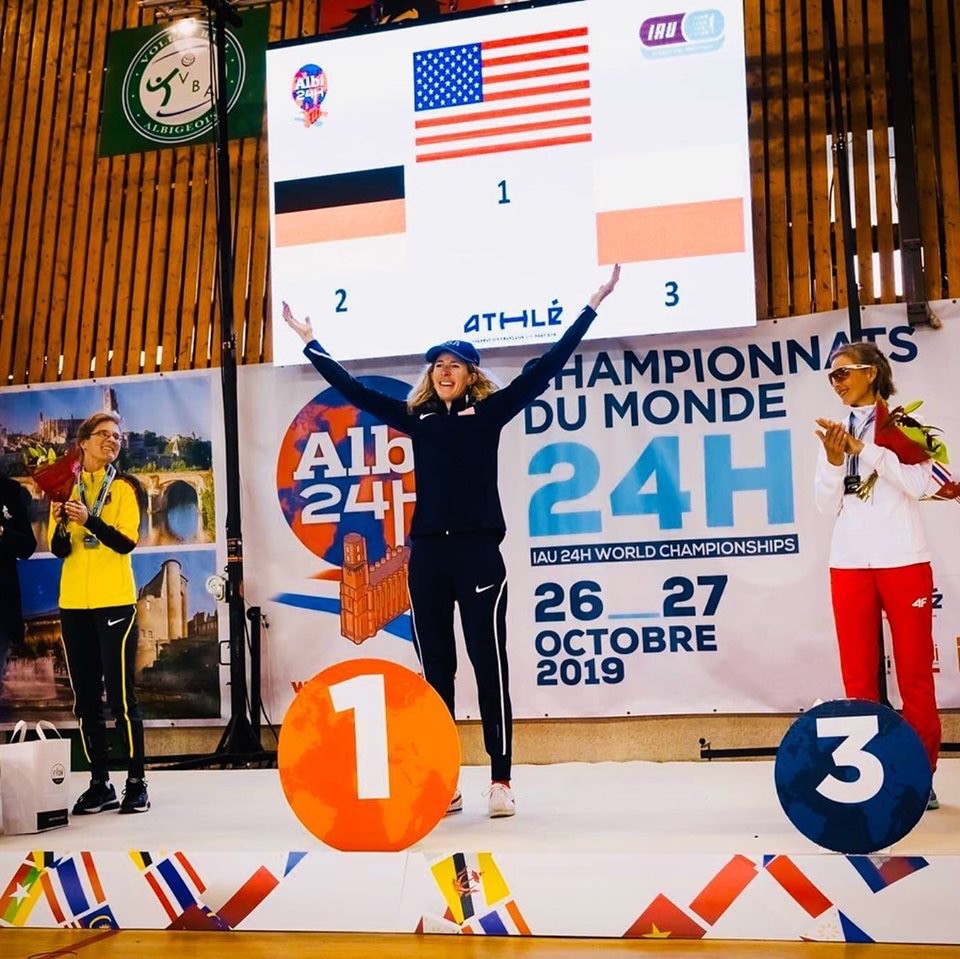
Herron, 37, completed the challenge by running 270.116K (167.842 miles) in a span of 24 hours on a series of 1500-meter loops in and around the Terrain Honneur Stadium. This is an average of 8:37 per mile. Pending ratification, the ultrarunner’s performance is the record for the most distance covered in a day for women.
Less than a year ago, Herron broke the world record for the 24-hour run on the track, which made her the favorite heading into Sunday’s race. She established herself up front early on, taking the lead in the first lap and maintaining her top position for the entire race.
Around the halfway point, she almost caught men’s race leader Aleksandr Sorokin of Lithuania, according to the International Association of Ultrarunners (IAU).
by Runner’s World
Login to leave a comment
Cecilia Flori often smiles through pain, but now she’s hoping an injury doesn’t keep her from competing at the 2019 Western States 100-mile race
The gap between elites and amateurs can feel wide indeed, but one area of common ground is an injury that threatens the start line of an important race. That’s the relatable place elite ultrarunner Cecilia Flori finds herself as she struggles with a foot injury a few weeks out from the Western States Endurance Run, the 100-mile race on June 29, from Squaw Valley to Auburn, California.
Expected to be a favorite in this year’s event, Flori arrived in California more than a month before the race, hoping to train on the course. The 38-year-old Italian physicist, who currently calls New Zealand home, earned bib F5 and says she was feeling as fit as ever when her foot began to hurt.
“I’ve been working on my speed by running marathons this year,” she said. “I think the Western course suits my strengths and I was more than ready for it.”
Relatively new to the ultra scene—and running in general—Flori made a big entrance to the sport, nabbing a podium spot at the North Face Endurance 50-miler in Canada in 2015.
“I’ve always loved the outdoors and was a climber before a triathlete friend convinced me to run a half marathon with him,” she said. “I really enjoyed it and I was hooked.”
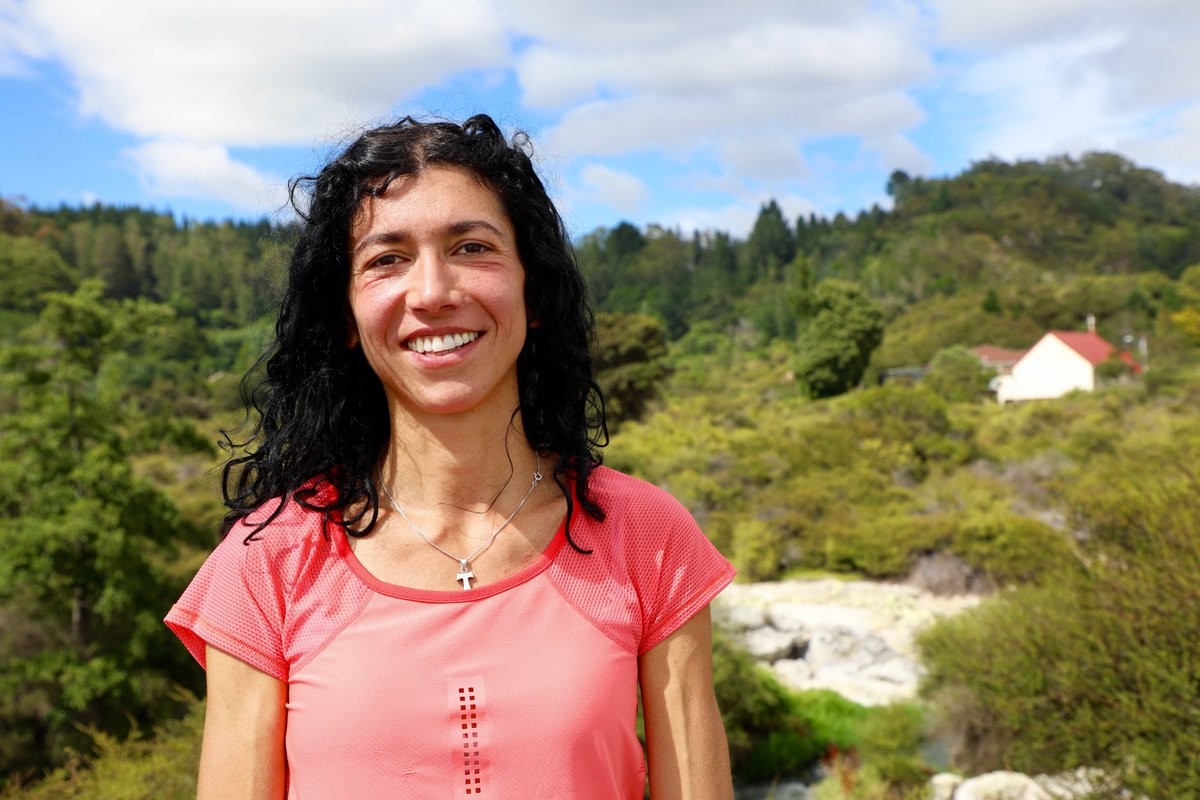
Flori says the flow of running is what drew her in. “The repetitive motion makes me feel alive,” she said. “It’s a primal feeling—I’m at one with nature when I’m on trails.”
Relocating for her research to scenic New Zealand in 2016, Flori migrated entirely from climbing to running, joining a running club for training. She took on some shorter distance trail races and then won the Taupo 100K. “I started thinking that maybe I was good at endurance,” she says. “In 2017, I entered the Tarawera 100 and took third behind [2008 U.S. Olympic marathoner] Magda Boulet and [2017 Comrades champion] Camille Herron. I was shocked but I realized I could compete on an international level.”
Herron has since become Flori’s coach, and it was that Tarawera race that made Herron take note.
“I watched her run neck-and-neck with Magda Boulet,” Herron said. “What I remember most as I looped around and saw her was the big smile on her face.”
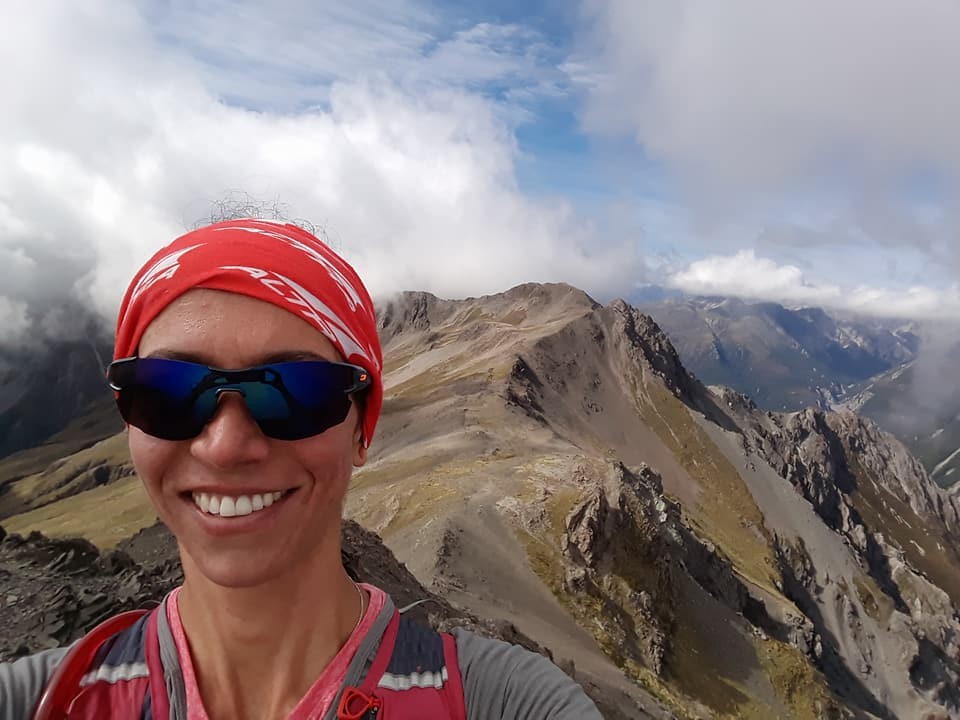
Since then there have been few hiccups in Flori’s ascent to the upper echelons of ultras. She pulled off fifth at last year’s Western States in 19:44 and followed it up with a 10th place finish at the 101K CCC in the French Alps last September, which she admits, tested her. “It was a learning experience,” she said. “I was sick and had to stop at aid stations quite a bit. But I still managed 10th and I’m proud of myself.”
Herron says Flori has a bright future ahead of her. “I saw that same smile on Cecilia’s face at 62 miles into Western last year. For someone to look that good in fifth place tells me she has lots more to give.
by Amanda Loudin
Login to leave a comment
Western States 100
The Western States ® 100-Mile Endurance Run is the world’s oldest and most prestigious 100-mile trail race. Starting in Squaw Valley, California near the site of the 1960 Winter Olympics and ending 100.2 miles later in Auburn, California, Western States, in the decades since its inception in 1974, has come to represent one of the ultimate endurance tests in the...
more...South African Gerda Steyn shattered the course record at Comrades as Camille had to drop out due to hamstring issues
The 94th running of South Africa’s premier Ultra marathon, the Comrades got underway at 5:30am Sunday June 9.
South African runners Edward Mothibi and Gerda Steyn ended up the 2019 Comrades Marathon champions. Gerda broke the course record winning one million R ($66,849US) in the process.
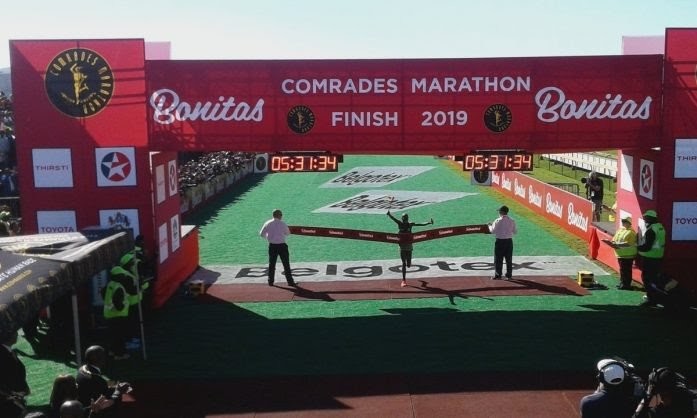
Edward Mothibi won the race after a fourth placed finish in his Comrades debut last year, beating defending champion Bongmusa Mthembu by just 25 seconds.
Local favourite Gerda Steyn stole the show on Sunday as she shattered the women’s record leading the charge with South African athletes produced sterling performances in KwaZulu-Natal.
After breaking clear of the rest of the women’s field shortly before the halfway mark, Steyn gradually extended her lead throughout the second half, crossing the line in 5:58:53 to secure her maiden victory in the 87km race between Durban and Pietermaritzburg.
This shattered the up-run record, held by Russian runner Elena Nurgalieva, by more than ten minutes. Steyn became the first woman to run the Comrades up run in less than six hours. Her time was the fourth fastest of all-time for women, the only faster times were notched in down-runs.
The race is run ‘gun to gun’ meaning that contestants have 12 hours in total to complete the course.
This year’s race is an “UP RUN” starting at the City Hall in Durban and finished at the Scottsville Racecourse in Pietermaritzburg. The race distance is approximately 87km.
28-year-old Gerda Steyn has enjoyed a meteoric rise from amateur to professional in the space of just five years. After finishing as runner-up last year, Steyn took a six-week break from the sport before preparing to tackle the New York Marathon, finishing 13th in a PR of 2:31. The 2018 and 2019 Two Oceans winner made it clear in advance that her goal this year was to win and that is what she did this morning.
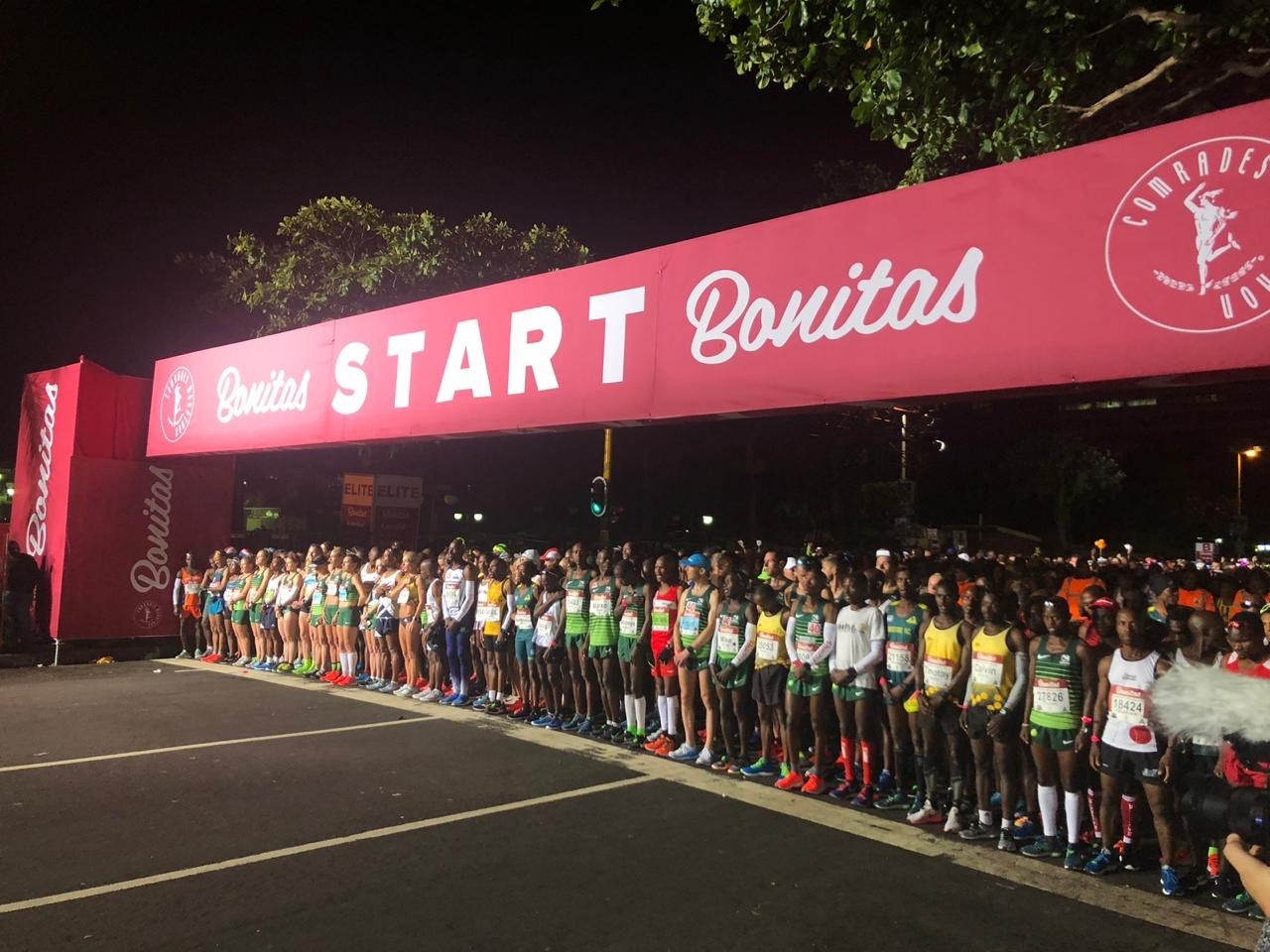
America’s Camille Herron was not able to finished and dropped out.
Camille’s brother Jack posted this on Facebook. “My sister Camille Herron ended up dropping out from Comrades due too hamstring issues she’s been dealing with. I’m heart broken for her because this is just such a special event for her and our entire family.
“I understand the whole mentality of getting to race another day... but she trains so hard and we wait all year for her to defend this title she’s earned. I mean, just her single win is enough, but she goes out every time for a win, so when it doesn’t happen... it’s tough.”
Steyn now will shifts her focus away from Ultra marathons in a bid to qualify for the Olympic marathon in Tokyo next year. The Olympic marathon is expected to be run in blistering heat, with the start moved to 06:00 to mitigate potentially dangerous temperatures. Steyn’s ultra experience could make her a real contender for the Olympic crown.
Login to leave a comment
Comrades Marathon
Arguably the greatest ultra marathon in the world where athletes come from all over the world to combine muscle and mental strength to conquer the approx 90kilometers between the cities of Pietermaritzburg and Durban, the event owes its beginnings to the vision of one man, World War I veteran Vic Clapham. A soldier, a dreamer, who had campaigned in East...
more...America’s Camille Herron has a real shot at winning the Comrades marathon for the second time
The 94th running of the world-famous Comrades Marathon is scheduled to begin at 5:30am (8:30pm Pacific time Saturday) on Sunday, taking place from Durban to Pietermaritzburg.
“The Comrades Marathon attracts the very best ultra-runners in the world and this year will be no different. This year’s up-run already promises to be an epic race,” said Cheryl Winn, CMA chairperson.
In the women’s race, America’s Camilla Herron has a real shot of winning for the second time but her competition is top notch.
Here are the top five female contenders:
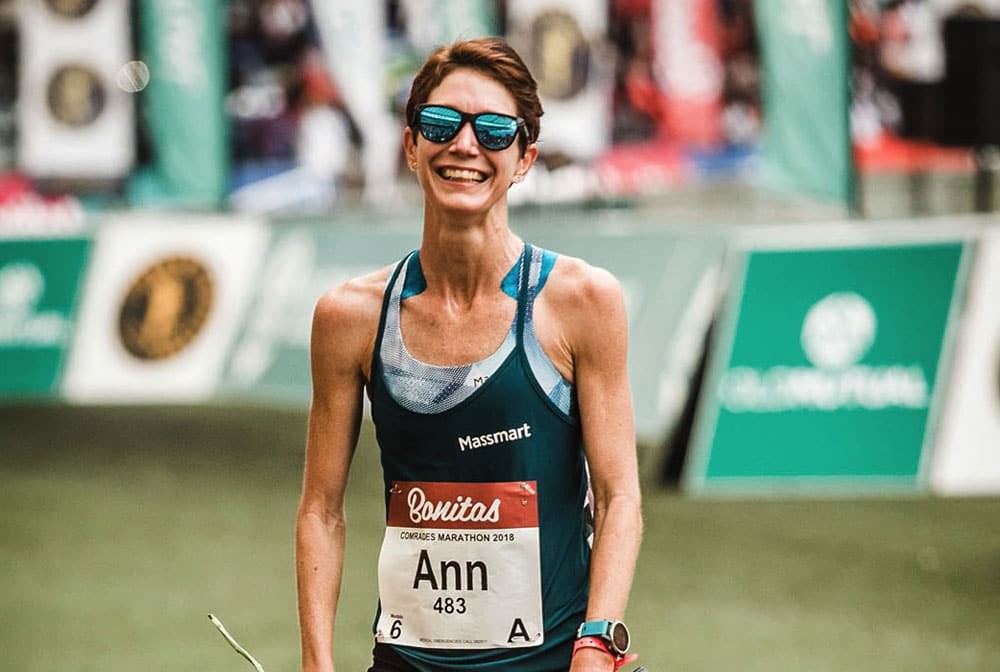
1. Ann Ashworth (second photo) shocked the field to win the 2018 race with a tactical and composed performance. She subsequently left her career as an advocate to run full time ahead of the 2019 race. Ashworth is in good form and achieved a marathon PB of 2:35 at the Valencia Marathon in December. A genuine contender to become the first female to win back-to-back races since Elena Nurgalieva.
2. Gerda Steyn The 28-year-old has enjoyed a meteoric rise from amateur to professional in the space of just five years. After finishing as runner-up last year, Steyn took a six-week break from the sport before preparing to tackle the New York Marathon, finishing 13th in a PB of 2:31. The 2018 and 2019 Two Oceans winner has made it clear, her goal this year is to claim a maiden Comrades Marathon title.
3. Camille Herron (first photo) was left gutted just weeks before last year’s race as injury robbed her of a chance to claim back-to-back victories. It has been two years since her big win but the raging crowds and electric atmosphere which greeted her at the finish at Scottsville Racecourse will serve as a huge motivating factor as she prepares for a comeback. She set a new 100-mile record at the Desert Solstice Track Invitational in December. As the reigning up-run champion, the 37-year-old is a genuine title contender.
4. Charne Bosman The 2016 down-run winner has proved to be one of South Africa’s most consistent athletes in recent years. She has five gold medals from six starts at Comrades. She is now 43 but there are no signs of her powers waning. She won the Johnson Crane Hire Marathon in January and the Om Die Dam Marathon in March. Bosman is in red hot form and is a genuine contender to win the race.
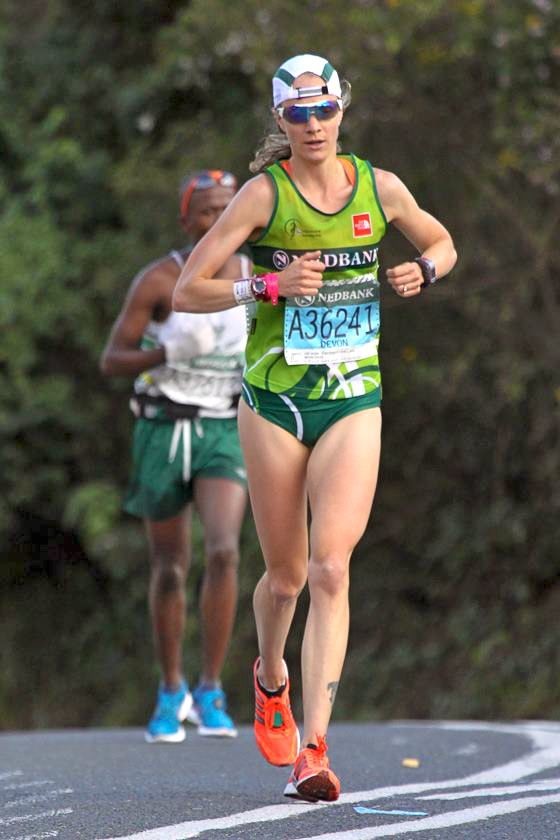
5. American Devon Yanko’s (third photo) Comrades journey began back in 2012 when she came fifth on debut. She then took a four-year break from the race but returned over the last two years to earn another two gold medals. She won the Oaklands Marathon in a time of 2:43 in March. An accomplished runner who knows what it takes push for a win.
Should the winner in either the Men’s or Women’s races in this year’s Comrades break the ‘Up Run’ Best Times of Russia’s Leonid Shvetsov (2008 – 5:24:49) or Elena Nurgalieva (2006 – 6:09:24) respectively, he or she will take home a minimum of R1-million ($66,849US) in Comrades prize money, comprised of a first prize of R500,000 plus a R500,000 incentive for breaking the Best Time; in addition to prizes for First South African (R200,000) and First KZN Man and Woman (R45,000).
Login to leave a comment
Comrades Marathon
Arguably the greatest ultra marathon in the world where athletes come from all over the world to combine muscle and mental strength to conquer the approx 90kilometers between the cities of Pietermaritzburg and Durban, the event owes its beginnings to the vision of one man, World War I veteran Vic Clapham. A soldier, a dreamer, who had campaigned in East...
more...Gerda Steyn is focused to take the title at the 94th Comrades Marathon Sunday
After narrowly missing the record in last month’s Two Oceans Marathon, Steyn has enjoyed a trouble-free training camp in the mountains of France, together with third place finisher from last year, Steve Way, and Anthony Clark, both running this year’s race in the colours of Nedbank Running Club.
“A lot of people asked me if I am disappointed at just missing the record in Two Oceans,” laughed Steyn.
“Looking back at it now it was a little bit sad to be so close but even with 8km to go, I told myself to save the legs because Comrades is my main focus of the year and I didn’t want to do too much damage.” It’s a decision that Steyn hopes will pay dividends in this year’s event.
Last year’s winner Ann Ashworth comes into this race much faster than before, but it is the Up-run defending champion, Nedbank Running Club’s Camille Herron, who is hoping to defend her title.
A strong athlete with multiple world records, Herron is well known for her awkward running style that took her to victory in 2017.
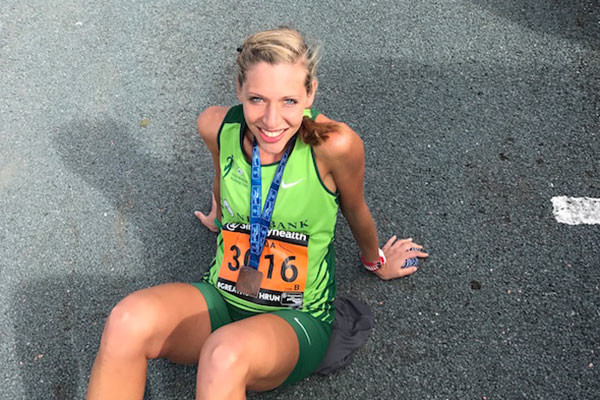
Teaming up with her club mate Steyn, the two make a dangerous combination.
Throw in stalwart Fikile Mbuthuma and OMTOM gold medalist Ntombesintu Mfunzi who will be one to watch on her Comrades debut, the ‘Green Dream Team’ ladies will be a force on the route.
Adding to Nedbank’s Comrades debuts this year is Poland's Dominika Stelmach who had an unfortunate injury that forced her out of starting last year’s race.
After her fourth-place finish at this year’s Two Oceans, Stelmach is hungry to make an impression.
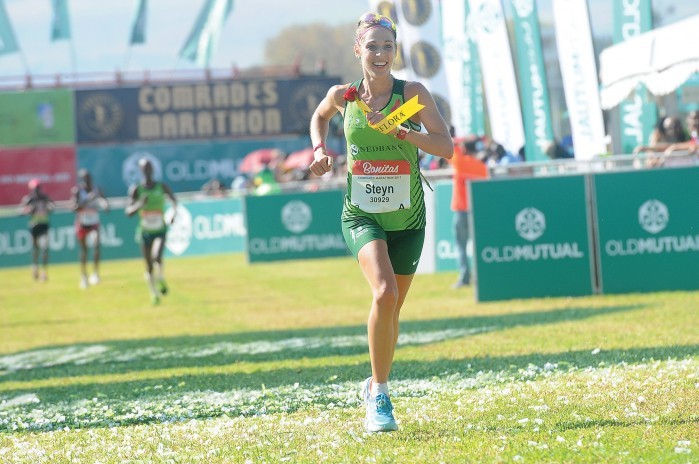
Also making a debut will be four-time World Ironman champion Chrissie Wellington. The 42-year-old English athlete ran 2 hours 51 minutes in this year’s London Marathon to qualify for Comrades which puts her in with a chance of a top 10 finish.
Carla Molinaro who represented Great Britain last year in the World 100km championships, but now has South African citizenship, will be another athlete looking for a top 10 finish after finishing ninth last year.
South African Deanne Horn is a newcomer in the ultra-marathon scene. She finished 42nd in her debut in 2017 and finished 15th last year and has represented South Africa in the World 100km championships. Together with team-mates Steyn, Mfunzi, Molinaro and Mbuthuma, the Nedbank ladies will be looking to take the team prize in this year’s race.
Login to leave a comment
Comrades Marathon
Arguably the greatest ultra marathon in the world where athletes come from all over the world to combine muscle and mental strength to conquer the approx 90kilometers between the cities of Pietermaritzburg and Durban, the event owes its beginnings to the vision of one man, World War I veteran Vic Clapham. A soldier, a dreamer, who had campaigned in East...
more...




